 Welcome to the Real Fast Results podcast! You have made a wise decision to join in today because it is our honor and privilege to bring for the words and advice of Mr. Jack Canfield. In this episode, Jack is going to share how to develop a bestseller mindset. According to Jack, there’s a lot that goes into creating a bestseller, but most importantly, you have to have the right outlook. As you probably know, this man has been able to accomplish more than most people could even dream of. Let’s see what he has to say…
Welcome to the Real Fast Results podcast! You have made a wise decision to join in today because it is our honor and privilege to bring for the words and advice of Mr. Jack Canfield. In this episode, Jack is going to share how to develop a bestseller mindset. According to Jack, there’s a lot that goes into creating a bestseller, but most importantly, you have to have the right outlook. As you probably know, this man has been able to accomplish more than most people could even dream of. Let’s see what he has to say… Benefits to Having a Bestseller Mindset
For me, it has meant selling nearly 500 million books around the world. I’ve had 47 books on the New York Times Bestseller List, and I have been able to travel to 47 different countries and give workshops. As a result, I was in the movie The Secret, and I’ve had lunch at The White House. I hang out with people like Jeff Bridges, and Chaka Khan, people like that who are celebrity friends that I have now. And, you know, I’ve personally been able to stand on the first base line at a Dodger’s baseball game. I’ve had meetings with Bill Clinton, and John Gray, and I could just go down the list of fun things that have happened for me. Most important is the ability to make an impact in the lives of other people. I can remember being in a hotel in New York and watching this girl walk in with a bald head, probably about 12 or 13, obviously doing chemotherapy. I walked up to her, and I said, “I wanted to tell you that I’m supportive of you. I’m Jack Canfield.” “Oh my God! You’re the Chicken Soup for the Soul guy. I’ve read Chicken Soup for the Recovering Soul, Chicken Soup for the Teen Soul, Chicken Soup for the Cancer Patient Soul…” And, you just go like, “Wow! I’m making a difference in the lives of others.” That’s what really matters, the impact you can have. Achieving a Bestseller Mindset, from a Big Picture Standpoint
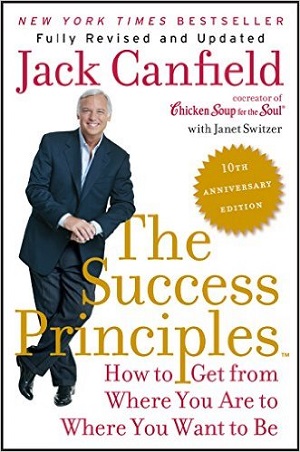 You have to believe that it’s possible for you to have something really important to say, and that you have the ability to say it. So, a lot of it is self-esteem, self-concept, and belief in yourself. Then, I think most people don’t think big enough. One of the quotes that I have in my book, The Success Principles, is by General Wesley Clark, who used to be the head of the NATO forces in Europe for the United States. He said that it doesn’t take any more effort to dream a bigger dream than it does to dream a small dream. In other words, you can think of five zeros after a one, or six zeros after a one, or eight zeros after a one, in terms of your income and in terms of impact. I just set a goal to train one million trainers to do my work by the year 2030. People think I’m crazy, but we’ve already trained 1,500 people since last November and certified them. So, we now have people in 79 countries teaching our work. When I told my publisher, we wanted to sell a billion books by 2020, he thought we were freaking crazy. We’ve sold a half a billion books, and it’s only 2016. The “hockey stick curve” is taking off.
You have to believe that it’s possible for you to have something really important to say, and that you have the ability to say it. So, a lot of it is self-esteem, self-concept, and belief in yourself. Then, I think most people don’t think big enough. One of the quotes that I have in my book, The Success Principles, is by General Wesley Clark, who used to be the head of the NATO forces in Europe for the United States. He said that it doesn’t take any more effort to dream a bigger dream than it does to dream a small dream. In other words, you can think of five zeros after a one, or six zeros after a one, or eight zeros after a one, in terms of your income and in terms of impact. I just set a goal to train one million trainers to do my work by the year 2030. People think I’m crazy, but we’ve already trained 1,500 people since last November and certified them. So, we now have people in 79 countries teaching our work. When I told my publisher, we wanted to sell a billion books by 2020, he thought we were freaking crazy. We’ve sold a half a billion books, and it’s only 2016. The “hockey stick curve” is taking off. 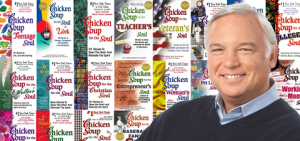 You have to dream big and believe big, and I think you also have to have an attitude and a mindset that it’s going to take work. You have to learn how to market, you have to learn how to do a podcast, you have to learn how to be on Good Morning America. You have to learn how to do internet marketing. You have to have a mindset of studying. You have to be willing to learn. Quincy Jones, who’s 83 years old, the producer of Michael Jackson, “We Are the World”, The Fresh Prince of Bel-Air, etc., said something. He said that when he decided to do television, he went to UCLA, and this was in the 60’s or 70’s, but he said that he took six months of courses in screenwriting, producing, and directing. He said that every field has a structure and a science to it, and you have to study that if you want to be successful, whether it’s music theory, how to be a bestselling author, etc. What is the craft of being a good writer? What is the willingness to get feedback? You have to be able to get feedback. One of the things that I tell people all of the time is that most books get published when people have read them: The writer, the wife/husband, the acquisition editor at the house. Well, with Chicken Soup for the Soul, we had 40 people read every story and grade them on a scale of 1-10. We put that on an Excel spreadsheet, and everything that averaged less than a 9 never made it into the book, including stories that I wrote. It’s like you have to have the willingness to get feedback and get off your ego trip as well.
You have to dream big and believe big, and I think you also have to have an attitude and a mindset that it’s going to take work. You have to learn how to market, you have to learn how to do a podcast, you have to learn how to be on Good Morning America. You have to learn how to do internet marketing. You have to have a mindset of studying. You have to be willing to learn. Quincy Jones, who’s 83 years old, the producer of Michael Jackson, “We Are the World”, The Fresh Prince of Bel-Air, etc., said something. He said that when he decided to do television, he went to UCLA, and this was in the 60’s or 70’s, but he said that he took six months of courses in screenwriting, producing, and directing. He said that every field has a structure and a science to it, and you have to study that if you want to be successful, whether it’s music theory, how to be a bestselling author, etc. What is the craft of being a good writer? What is the willingness to get feedback? You have to be able to get feedback. One of the things that I tell people all of the time is that most books get published when people have read them: The writer, the wife/husband, the acquisition editor at the house. Well, with Chicken Soup for the Soul, we had 40 people read every story and grade them on a scale of 1-10. We put that on an Excel spreadsheet, and everything that averaged less than a 9 never made it into the book, including stories that I wrote. It’s like you have to have the willingness to get feedback and get off your ego trip as well. How Can I Make Myself Feel Like I’m Worthy of a Bestseller?
Here’s the deal. Everybody has a message. Every life has lessons that people have learned. You have to be willing to share that, and if you are willing to be clear that you have something valuable. Now, if you don’t work on yourself, if you don’t do self-introspection, if you don’t take seminars, if you don’t do therapy, if you don’t meditate, etc, your awareness of what you know and how much you know is going to be limited. So, #1, you have to be somewhat committed to growth, somewhat committed to constantly learning and never-ending improvement. CANI, as Tony Robbins likes to say. The reality is that you’ve got to be a learner, and then you share what you’ve learned. The belief is that you’ve got something of value. Mark Victor Hansen used to always say to me, when we were co-authors of Chicken Soup for the Soul… I’d say something, and he’d say, “You have to write that down. Write a blog. Write a chapter.” I’d say, “Mark everyone knows that,” and he’d say, “No Jack, they don’t.” Often, we figure that everyone knows what we know, and the fact is that we all have a lot of unique knowledge. I think that whether it’s through affirmations, through meditation, whatever it may be, you’ve got to start with the idea that, “I have something to share, and I am worthy of success.” My wife is writing a memoir right now, and she has had some amazing lessons in her life. She’s so afraid that people are going to judge her for where she used to be in the earlier chapters of her book. I told her, “I’m going to steal the freaking manuscript and publish it behind your back if you don’t publish it because it’s so good.”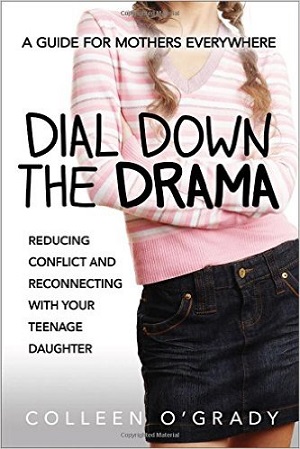 I think the main thing is to have other people read what you’re writing, and they’ll tell you if it’s good or not. It doesn’t mean that you don’t have something to say, it just means you haven’t written it yet. Most people, the feedback they get is, “Oh my God! This is so valuable,” or “Oh my God! I wish I had read this book 20 years ago.” I was counseling some writers the other day, and one of the women had written a book called: Dial Down the Drama: Reducing Conflict and Reconnecting with Your Teenage Daughter--A Guide for Mothers Everywhere. She is a woman who was a child psychologist, and she was working with lots of, I think, 20,000 teenagers, but when her daughter hit 12, it was like “Uh-oh”. Now she’s in it, right? So, she negotiated those teenage years. Her daughter is now 20, and she wrote a book based on her experience. The only people who are going to be interested in that book are going to be mothers with daughters, but that’s a lot of people. You may be someone who had a special needs child, and you had to learn how to negotiate the educational system. That’s a valuable message. You may be a meditation teacher, but you’re only going to attract a certain kind of person. Maybe they’re Christians, maybe they’re Buddhists, maybe they’re teenagers that are getting off drugs, but everybody has a group that will resonate with your message. You have to believe that. Also, don’t compare yourself to someone who has a universal message, like the Dalai Lama, Tony Robbins, Lisa Nichols, The Secret. You know, we’re not all meant to be billion dollar bestsellers, but we’re all meant to get our message out there and be bestsellers in certain categories, for sure.
I think the main thing is to have other people read what you’re writing, and they’ll tell you if it’s good or not. It doesn’t mean that you don’t have something to say, it just means you haven’t written it yet. Most people, the feedback they get is, “Oh my God! This is so valuable,” or “Oh my God! I wish I had read this book 20 years ago.” I was counseling some writers the other day, and one of the women had written a book called: Dial Down the Drama: Reducing Conflict and Reconnecting with Your Teenage Daughter--A Guide for Mothers Everywhere. She is a woman who was a child psychologist, and she was working with lots of, I think, 20,000 teenagers, but when her daughter hit 12, it was like “Uh-oh”. Now she’s in it, right? So, she negotiated those teenage years. Her daughter is now 20, and she wrote a book based on her experience. The only people who are going to be interested in that book are going to be mothers with daughters, but that’s a lot of people. You may be someone who had a special needs child, and you had to learn how to negotiate the educational system. That’s a valuable message. You may be a meditation teacher, but you’re only going to attract a certain kind of person. Maybe they’re Christians, maybe they’re Buddhists, maybe they’re teenagers that are getting off drugs, but everybody has a group that will resonate with your message. You have to believe that. Also, don’t compare yourself to someone who has a universal message, like the Dalai Lama, Tony Robbins, Lisa Nichols, The Secret. You know, we’re not all meant to be billion dollar bestsellers, but we’re all meant to get our message out there and be bestsellers in certain categories, for sure. The Path to Feeling Worthy
First of all, you can’t feel worthy or unworthy. You feel mad, sad, glad, and scared. That’s it. What you think is that you’re unworthy. So really, you have to address your thoughts. Self-esteem comes from the Latin word “aestimare”, which means to estimate. We either estimate that we’re good or we estimate that we’re bad. It is a thought. It is a thought that most of us picked up either from our parents telling us, “You’ll never amount to anything,” or “You’re a bad kid,” or we made a decision because we got rejected by our girlfriend, we didn’t make the debate team, we didn’t get into Harvard, you know, whatever. Then, we tell ourselves, “I’m not okay,” or “I’m bad.”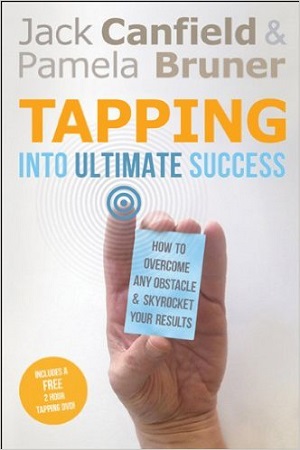 You know, maybe you had an abortion when you were 16 and now you’re judging yourself as a bad person, but that’s you making a judgement. The fact is that you can simply replace that thought with another better-feeling thought. So, it’s a matter of repetition. Thoughts are things we think, and we can change them or replace them through repetition. I don’t know if you’re familiar with EFT tapping, where you tap on these 9 acupuncture points while you think your negative, limiting belief. Literally, you can disappear a limiting belief. I’ve seen people do it in 10 minutes or less, using tapping. I wrote a book called Tapping Into Ultimate Success about tapping with a tapping expert. You can go on YouTube and type in “tapping”, and there’s like 5,000 free YouTube videos teaching you how to tap. But, the main thing is that it is a choice. You do not have to suffer with low self-esteem anymore because it is simply a thought that can be replaced with another thought through repetition, through tapping, through self-hypnosis; there are a number of things you can do.
You know, maybe you had an abortion when you were 16 and now you’re judging yourself as a bad person, but that’s you making a judgement. The fact is that you can simply replace that thought with another better-feeling thought. So, it’s a matter of repetition. Thoughts are things we think, and we can change them or replace them through repetition. I don’t know if you’re familiar with EFT tapping, where you tap on these 9 acupuncture points while you think your negative, limiting belief. Literally, you can disappear a limiting belief. I’ve seen people do it in 10 minutes or less, using tapping. I wrote a book called Tapping Into Ultimate Success about tapping with a tapping expert. You can go on YouTube and type in “tapping”, and there’s like 5,000 free YouTube videos teaching you how to tap. But, the main thing is that it is a choice. You do not have to suffer with low self-esteem anymore because it is simply a thought that can be replaced with another thought through repetition, through tapping, through self-hypnosis; there are a number of things you can do. Bestseller Mindset: Write the Book
Well, I think it’s simply, you have to write the book. And, part of the mindset has to be, “I’m going to do whatever it takes to make it good.” That’s where I really am a big believer in feedback. I know one couple who wrote a business book, and they invited 15 people to come to their apartment in Aspen. Every morning they had to read a chapter and give them feedback, and in the afternoon, the other people went skiing, and they edited the chapter based on the feedback. The next morning, they did another chapter. What we did was send our stories to our 40-reader panel. Urban, rural, black, white, brown, Asian, old, young, conservative, liberal, independent. You know, trying to get a really universal feedback thing. Most people are afraid to put it out because they are afraid of what they’re going to hear. Treat everything as a first draft. Just get words on paper, and then you can go back yourself and edit it, like, a week or two later, when you’ve got some distance. Then, give it to people and let them bleed all over it. You’re not in school, you’re not going to get a grade, you’re not going to fail. You’re just going to get feedback. “Here’s where I’m confused,” “You said this in another chapter,” “I don’t know what you mean here.” You know, that’s how you make it better. The guys who wrote The One Minute Manager, they would take their book, print 5,000 copies, sell them for cost to all of their clients, get feedback, and only then would they rewrite it and send it to a publisher. You’ve got to be committed to doing the work, and again, your message is worth the work because once it gets out there, it’s going to last forever. We all have life lessons that someone coming along behind us can benefit from. Whether it’s an 80-page book or a 500-page book, it doesn’t really matter. What matters is getting your message out there. I think another thing you have to deal with, in terms of a bestseller mindset, is you’ve got to get over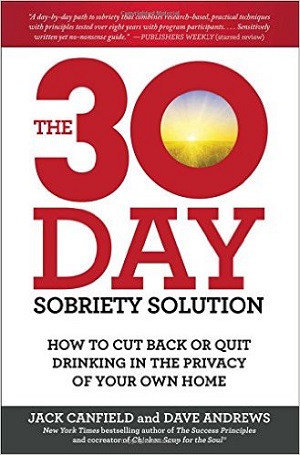 your fear of rejection because you’re going to get rejected by editors that are going to acquire your book, the publishers. You’re going to be rejected by people who won’t have you on their podcast. You are going to have people read your book and give you critical reviews. But, you’re going to reach so many more people. I just did a book called The 30-Day Sobriety Solution. It came out in January. It’s got 95 reviews on Amazon. Ninety-three of them are five-star reviews, and three of them are one-star reviews. So, you’re always going to have people that are going to go, “This doesn’t work. These guys are full of it.” You’ve got to develop a thick skin. Your message isn’t for everybody. You know, if I had a message for fundamentalist Christians, that might turn off the New-Agers living in San Francisco. If I had a new age message, it might turn people off, you know, going to Joel Osteen’s church in Texas. So, you’re not going to please everybody, and you just have to confront that. Get over that fear. Really spend time on getting a great title. You know, the “Chicken Soup for the Soul” title came in a meditation. Originally, we got rejected by a lot of people, but that title is now a brand worth almost a billion dollars. You know, there’s “Chicken Soup for the Soul” cat food and dog food. It’s ridiculous what has happened with that, and we actually won a brand management award in Asia for the best brand in books and so forth. I was counseling some people that were writing a book, and it was about how to avoid your children, declaring you incompetent and assigning you to an insane asylum so that they can take your wealth. They had some big, legalistic title that nobody would pay any attention to. We ended up with, “How to Protect Yourself from Your Own Children in Old Age”. So, people are like, “Stop. What is that? I want to know what that is.” Really invest in a good title. Sometimes you might have to pay a consultant to brainstorm with you. Your book is going to be sitting on a table somewhere, or spine out on a shelf. You want something that’s going to grab you. We did a lot of research on titles. You can actually muscle test titles. Put covers of a book in front of somebody and have them muscle test it. If they go weak when you push down their arm, when they’re looking at your book, they won't but it. They will look at that cover, and they won’t know why they didn’t buy it, but they won’t buy it. We had a guy that had a book called Dumpster Diving for Wealth. People were throwing away valuable things in their dumpsters, and the cover was a guy’s butt sticking out of a dumpster. Everyone we tested with that cover went weak. When we took the guy out of the dumpster and had him standing next to it with something valuable, everyone tested strong. Nobody wanted their face in a garbage bin, basically. So, there are a lot of tricks like that you can learn along the way. You’re sending a message to people emotionally, and you don’t even know you’re doing it. That’s, I think, a critical piece of it too. Another thing is to set big goals. You’ve got to dream big. Set a big goal. We set a goal to sell a million and a half books in a year and a half, and our publisher laughed at us. He said, “You’ll be lucky to sell 20,000.” We said, “No. We’re going to visualize it. We’re going to affirm it.” We put mock New York Times headlines all around our office. You know, “Chicken Soup for the Soul Sells 1.5 Million”. We made up fake bestseller lists with our book #1 in the New York Times. Now you can do it on your computer, but then we did it with whiteout, back in 1993. You have to have that big dream, and then visualize it. We used to visualize bookstore windows where the whole window was filled with Chicken Soup books, just like you see them when the new Harry Potter book comes out. Well, three years later there were bookstores with whole windows full of Chicken Soup books. People underestimate visualization. See, you want to live in that dream as if it’s already true. This is basic “Law of Attraction 101”, but it works.
your fear of rejection because you’re going to get rejected by editors that are going to acquire your book, the publishers. You’re going to be rejected by people who won’t have you on their podcast. You are going to have people read your book and give you critical reviews. But, you’re going to reach so many more people. I just did a book called The 30-Day Sobriety Solution. It came out in January. It’s got 95 reviews on Amazon. Ninety-three of them are five-star reviews, and three of them are one-star reviews. So, you’re always going to have people that are going to go, “This doesn’t work. These guys are full of it.” You’ve got to develop a thick skin. Your message isn’t for everybody. You know, if I had a message for fundamentalist Christians, that might turn off the New-Agers living in San Francisco. If I had a new age message, it might turn people off, you know, going to Joel Osteen’s church in Texas. So, you’re not going to please everybody, and you just have to confront that. Get over that fear. Really spend time on getting a great title. You know, the “Chicken Soup for the Soul” title came in a meditation. Originally, we got rejected by a lot of people, but that title is now a brand worth almost a billion dollars. You know, there’s “Chicken Soup for the Soul” cat food and dog food. It’s ridiculous what has happened with that, and we actually won a brand management award in Asia for the best brand in books and so forth. I was counseling some people that were writing a book, and it was about how to avoid your children, declaring you incompetent and assigning you to an insane asylum so that they can take your wealth. They had some big, legalistic title that nobody would pay any attention to. We ended up with, “How to Protect Yourself from Your Own Children in Old Age”. So, people are like, “Stop. What is that? I want to know what that is.” Really invest in a good title. Sometimes you might have to pay a consultant to brainstorm with you. Your book is going to be sitting on a table somewhere, or spine out on a shelf. You want something that’s going to grab you. We did a lot of research on titles. You can actually muscle test titles. Put covers of a book in front of somebody and have them muscle test it. If they go weak when you push down their arm, when they’re looking at your book, they won't but it. They will look at that cover, and they won’t know why they didn’t buy it, but they won’t buy it. We had a guy that had a book called Dumpster Diving for Wealth. People were throwing away valuable things in their dumpsters, and the cover was a guy’s butt sticking out of a dumpster. Everyone we tested with that cover went weak. When we took the guy out of the dumpster and had him standing next to it with something valuable, everyone tested strong. Nobody wanted their face in a garbage bin, basically. So, there are a lot of tricks like that you can learn along the way. You’re sending a message to people emotionally, and you don’t even know you’re doing it. That’s, I think, a critical piece of it too. Another thing is to set big goals. You’ve got to dream big. Set a big goal. We set a goal to sell a million and a half books in a year and a half, and our publisher laughed at us. He said, “You’ll be lucky to sell 20,000.” We said, “No. We’re going to visualize it. We’re going to affirm it.” We put mock New York Times headlines all around our office. You know, “Chicken Soup for the Soul Sells 1.5 Million”. We made up fake bestseller lists with our book #1 in the New York Times. Now you can do it on your computer, but then we did it with whiteout, back in 1993. You have to have that big dream, and then visualize it. We used to visualize bookstore windows where the whole window was filled with Chicken Soup books, just like you see them when the new Harry Potter book comes out. Well, three years later there were bookstores with whole windows full of Chicken Soup books. People underestimate visualization. See, you want to live in that dream as if it’s already true. This is basic “Law of Attraction 101”, but it works. Visualizing
There are two things that are important:- You want to have a vision board where you have some external images. For example, you sitting next to Oprah. You can Photoshop it. I just was on Super Soul Sunday in December; I had Oprah on my vision board for a year before that. I wanted to be on Super Soul Sunday, so I had that, and in September I get a call out of the blue. We weren’t even talking to our editors and producers. Images of a headline with how many books you’ve sold. Pictures of your books you can mock up. You can go on Fiverr and have someone for $5 make all kinds of images for you.
- Then, what you want to do is maybe have 3x5 cards, or index cards, with your affirmations. “I’m so happy and grateful that I’ve sold a million copies of Real Fast Writing,” or whatever it is. You read your affirmation with enthusiasm, close your eyes, and then visualize what you would see from inside your eyes as if you were looking out at the world, with some iconic image that says, “I’ve made it.” So, whether it’s the $1,000,000 check, the headline, your cover on Writer’s Digest. You know, Success Magazine or whatever it might be. Visualize that, and feel the feelings that you would feel if you already had that experience.
Additional Steps: Marketing
I have a handout that I give out at writer’s workshops called, “How to Market a Bestselling Book”. There are 37 steps, which we don’t have time for. Just some other steps that are important. Read books on marketing. John Kremer wrote a great book called 1,001 Ways to Market Your Books. Well, when we did Chicken, we took about 900 of those, that we thought were relevant, and made a Post-it for each one. I had two staff people writing them for days. We put them on a wall, about 12 feet long, and every day we took a Post-it off and did it. It took us two years to get through all those post-its, but by the end of that, we were #1 on the New York Times list and we stayed there for three years. Then, the second book came out, and it was #2. It was there for three years. At one point, we had #1, #2, and #3 on the New York Times list because we kept doing those things. I think hiring a media coach [is important] because most of us don’t know how to make good media; there are secrets to that. I’ll give you one. John Gray taught me this--the guy [who wrote] Men Are From Mars, Women Are From Venus. You talk about that your life’s going along at a certain level, then something bad happens. You have an accident, you get cancer, your daughter gets pregnant, you lose your job, bankruptcy happens, you lose your mortgage. Then you’re down in the pits, down here. Then you discover something that gets you out of the pit. My book, The Success Principles, may have helped you, and for someone else, it may have been a book on cancer, or nutrition, or how to eat holistically. Then, when you put that into action, not only did you get better, you got better than you were before. Now, you’re up here, and this thing you discovered is what my book is about, and it’s going to help you because you’re down here and you’re in the same situation. You don’t know what to do with your kid, you’re divorced, you’re laid off, you just got a new job as a manager and you don’t know what the hell you’re doing. That’s what my book will teach you to do. That little model will get you through any talk show, any podcast, and people will identify with you because they identify being down in that crater. I’ve got this great idea, and everyone tells me I should write a book. Now I’m depressed because I don’t know what to do. They discover you, and you help them get their book written. Now they’re up here, and they’re wealthy, and they’re on Oprah. So, it’s that kind of a thing, and you have to have your little success stories. You can tell them not just about your own life, but about all the people that you’ve helped so far with this methodology, technique, book, or whatever it might be.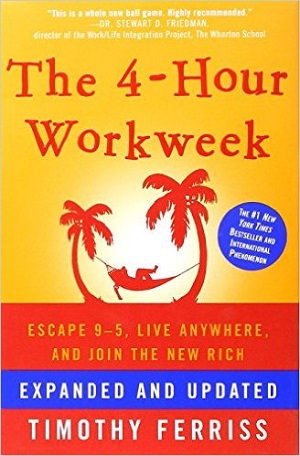 There are other points like, “How do you get on the covers of magazines,” and “How do you get in the airline magazines?” The world today is a podcast world. Tim Ferriss, who wrote The 4-Hour Work Week, understood that very quickly. Bloggers and Podcasters are the new book tour. So, you have to know how to play in that world and become one so that you have the respect of the other people. Tim started forwarding everyone’s blogs a year before his book came out. I actually mentored him in the writing of his book. He’s now far surpassed me in the marketing side for, you know, the younger generation. But, the reality is that you should study the people that have been successful. As Tony Robbins says, “Success leaves clues.” I’ve left clues. John Kremer is leaving clues. There are a lot of people who are bestsellers leaving clues. So study that. I watch an hour of Ted Talks, and podcasts, and YouTube videos every single day. There’s so much information out there that we have to be lifelong learners. Here’s a real cool thing one of my friends does. He does a three-minute video blog every single day. He was here in my house a couple of weeks ago. He was in the guest room, I thought, and I walk into my office, and he has his camera out, and he’s going, “I’m in Jack Canfield’s office, and if you’ll notice, there’s 3,000 books in here. Leaders are readers. Look at all of these books. You need to be reading. By the way, one of the books you need to read is…” And then he promoted some book. He does this sort of thing every single day. He went from having 600 people at his workshops to 800, to 1,000, every single day, all around the world. When I met him, he was making $140,000 a year. He makes over a million a year now. Again, he took a little course with me on how to be a bestseller, and then he applied this one technique better than anyone I know, and he’s got a huge following.
There are other points like, “How do you get on the covers of magazines,” and “How do you get in the airline magazines?” The world today is a podcast world. Tim Ferriss, who wrote The 4-Hour Work Week, understood that very quickly. Bloggers and Podcasters are the new book tour. So, you have to know how to play in that world and become one so that you have the respect of the other people. Tim started forwarding everyone’s blogs a year before his book came out. I actually mentored him in the writing of his book. He’s now far surpassed me in the marketing side for, you know, the younger generation. But, the reality is that you should study the people that have been successful. As Tony Robbins says, “Success leaves clues.” I’ve left clues. John Kremer is leaving clues. There are a lot of people who are bestsellers leaving clues. So study that. I watch an hour of Ted Talks, and podcasts, and YouTube videos every single day. There’s so much information out there that we have to be lifelong learners. Here’s a real cool thing one of my friends does. He does a three-minute video blog every single day. He was here in my house a couple of weeks ago. He was in the guest room, I thought, and I walk into my office, and he has his camera out, and he’s going, “I’m in Jack Canfield’s office, and if you’ll notice, there’s 3,000 books in here. Leaders are readers. Look at all of these books. You need to be reading. By the way, one of the books you need to read is…” And then he promoted some book. He does this sort of thing every single day. He went from having 600 people at his workshops to 800, to 1,000, every single day, all around the world. When I met him, he was making $140,000 a year. He makes over a million a year now. Again, he took a little course with me on how to be a bestseller, and then he applied this one technique better than anyone I know, and he’s got a huge following. Learning More From Jack
I just want to say one thing about the Bestseller Blueprint. I got together with Steve Harrison, and we, not only with myself, but with about 10 other bestsellers, we put together a course, literally from A-Z. The course teaches you everything you need to know about how to write the book, how to name the chapters so that they become hooks for the media, how to market the book, how to get on radio shows, how to get magazine interviews, etc. I mean, there’s so much in there. So, I really want to encourage people to check that out, and you can just go to BestsellerBlueprint.com. Go to JackCanfield.com for my workshops. I do two “Break Through to Success” seminars every year, and then we are doing some one-day workshops around the world. We have books, and tapes, and all of that good stuff. But, my parting line would be this: “You have everything you need to do everything you want. All you have to do is believe that and take action on that. And, if you follow the principles of taking action, responding to feedback, and continuing on and never giving up, you can achieve every goal you want in life. I’m proof of that, and there’s millions of people around the world that are proof of that.”Resources:
Some of Jack's Books: Chicken Soup for the Soul Chicken Soup for the Recovering Soul Chicken Soup for the Teen Soul Chicken Soup for the Cancer Patient Soul The Success Principles Tapping Into Ultimate Success Other Books Jack Mentioned: Dial Down the Drama: Reducing Conflict and Reconnecting with Your Teenage Daughter-- A Guide for Mothers Everywhere. The One Minute Manager Long Past Stopping 1,001 Ways to Market Your Books The 4-Hour Work Week Men Are From Mars, Women Are From VenusReal Fast Results Community
If you are diggin’ on this stuff and really love what we’re doing here at Real Fast Results, would you please do me a favor? Head on over to iTunes, and make sure that you subscribe to this show, download it, and rate & review it. That would be an awesome thing. Of course, we also want to know your results. Please share those results with us at http://www.realfastresults.com/results. As always, go make results happen! Welcome to yet another edition of the Real Fast Results podcast! Today you’ll have the chance to learn more about how you can further build your platform and your fan base as an author, speaker, content provider, coach, or even a consultant. No matter what it is that you do, it’s important for you to have a community of people that know, like, and trust you. People aren’t going to buy from you unless they have faith that you know what you are talking about and that you can help them. Something that you can do, in order to establish more credibility and a bigger audience base, is to start writing for major business-related publications, such as Entrepreneur.com, Inc.com, Huffington Post, etc. Today, our special guest is Lain Ehmann. Let’s see what she has to say.
Welcome to yet another edition of the Real Fast Results podcast! Today you’ll have the chance to learn more about how you can further build your platform and your fan base as an author, speaker, content provider, coach, or even a consultant. No matter what it is that you do, it’s important for you to have a community of people that know, like, and trust you. People aren’t going to buy from you unless they have faith that you know what you are talking about and that you can help them. Something that you can do, in order to establish more credibility and a bigger audience base, is to start writing for major business-related publications, such as Entrepreneur.com, Inc.com, Huffington Post, etc. Today, our special guest is Lain Ehmann. Let’s see what she has to say. Today's Promise: Stand Out To Editors
I would say that our promise today is to give you the best possible chance of getting a piece of your own submitted, and hopefully picked up, by the editors of these publications. We can’t guarantee anything because it’s in someone else’s hands, but we’ll help you cut through the masses and make your pitch or submission stand out to these editors.Authority Bling: Establishing Credibility
If you are a coach, a consultant, an author, a speaker, and you want to raise your visibility, you want to build your platform up higher, having that “seal of approval” from Entrepreneur.com, from Fortune, from Success, that helps establish you and helps your audience trust you. I call it “Authority Bling," when they go to your website and they see “As Seen on Huffington Post” or “As Seen on…” whatever the magazine would be for your particular industry. It conveys authority to you, based on the trust that the viewer might have with these other magazines. If you can say, “I’ve been on Oprah,” that right there is like your “Golden Ticket”. Also, you can bring in new viewers because if your piece is on one of these publications, websites, or print editions, people can find you that way as well. So, there’s a “double bang for your buck” there when you have that authority conveyed upon you. People will see that and come back to you. In my experience, the ones that I write for, do give you the opportunity to plug yourself in somehow, whether it’s saying “Bestselling Author of…” or “Find out more at…”.The Process Of Getting Published
The process of getting published now has never been easier; when we’re talking about getting published in a publication like Entrepreneur or Inc. When I started, I actually was a journalist for many, many years, before I established my online business, and before that time, you had to send in a pitch. You had to type it up on, sometimes a real typewriter, print it out, propose your article, send it to the editor in an envelope, with a self-addressed stamped envelope, and they usually would just say, “Not interested,” stick it back in and send it back to you. This was a process of 6, or 8, or 12 weeks, and it was excruciating! The idea now that I can email someone and get a response in a matter of minutes, sometimes, is just incredible. Also, they aren’t limited by the print publication. Most of the publications that we see now on the newsstand at Barnes & Noble, or we subscribe to in the mail, have print editions, but they also have unlimited space online. So, it’s so much easier now than it was 10 years ago. I just want to tell people that this is the Golden Age of being able to be published in these publications because they do need this endless stream of fresh content. I was a journalist. I established an online business. Now my specialty is in content strategy, particularly focusing on launch periods, so helping people gear up for launching a class, or product, or membership site, or whatever it might be. In order to provide more value to my clients, I wanted to get published in these magazines, so that I could tell them how to do it. Also, to raise my visibility as well.
published in a publication like Entrepreneur or Inc. When I started, I actually was a journalist for many, many years, before I established my online business, and before that time, you had to send in a pitch. You had to type it up on, sometimes a real typewriter, print it out, propose your article, send it to the editor in an envelope, with a self-addressed stamped envelope, and they usually would just say, “Not interested,” stick it back in and send it back to you. This was a process of 6, or 8, or 12 weeks, and it was excruciating! The idea now that I can email someone and get a response in a matter of minutes, sometimes, is just incredible. Also, they aren’t limited by the print publication. Most of the publications that we see now on the newsstand at Barnes & Noble, or we subscribe to in the mail, have print editions, but they also have unlimited space online. So, it’s so much easier now than it was 10 years ago. I just want to tell people that this is the Golden Age of being able to be published in these publications because they do need this endless stream of fresh content. I was a journalist. I established an online business. Now my specialty is in content strategy, particularly focusing on launch periods, so helping people gear up for launching a class, or product, or membership site, or whatever it might be. In order to provide more value to my clients, I wanted to get published in these magazines, so that I could tell them how to do it. Also, to raise my visibility as well. Step 1 - Referral
There are five steps, and I’m an author, so I love alliteration. The five steps all begin with “R." The first step is to get a referral if you can. Just like anything else, if you can get a referral, if you can get somebody’s name, that’s going to put you a step up. It’s not necessary, but just like with anything else in business, if you can open that door before you step through, it helps a little bit.Step 2 - Research
The second step is to do your research. This is a great opportunity, and you don’t want to just throw something at it to see if it sticks. You want to practice due diligence to make sure that you’re leveraging the opportunity correctly. That’s why I suggest that people do research. Know that if you’re in the business market, how Inc.com differs from Entrepreneur, differs from Fortune, differs from Forbes. How do those interact with each other? They each have their own angle. What is it? What kind of piece would belong in Entrepreneur versus Inc.? You look at them, and they look very similar, but there are nuances, and knowing that is really going to give you a step up.Step 3 - Relevant
After you’ve gotten a referral, if you can, and you’ve done a little research to know where you fit well and what the differences are among those publications, you want to make sure that you propose something that’s relevant to that publication. For instance, Business Insider is an online publication that’s pretty high-profile. They have a very specific spin on things, and something that would go in Business Insider probably would not appear in Fortune Magazine. Or, if it were the same topic, it would be a completely different angle. You want to make sure, if they cover from A-K in the alphabet, you don’t want to suggest something that is RST. You want to keep it within their area, and you want to make sure that what you propose is relevant to them and to their readers. What I suggest, also, is when you’re contacting them, you let them know that you have done your research, and you can even say, “I have a piece that’s similar to the piece that you published on [XXX Date], but it’s different because I took this angle on it.”Step 4 - Remarkable
That leads into the fourth “R”, which is remarkable. It’s got to be relevant, but it’s also got to be remarkable. You don’t want to propose something that they’ve already covered, and you don’t want to propose something that’s just “ho-hum”. You know, it’s just another article on “10 Ways to XYZ”. You want it to be very different. You want it to be remarkable in some way, but still relevant. Let’s say that you’re a triplet, and you’re in business with your siblings. That would be remarkable. Not only could you talk about how family dynamics work within the business world, or the entrepreneurial world, but how you would do that when you’re a triplet. That’s a little bit unusual, but I think it shows you what I’m talking about. You’re looking for a unique spin. You want to find something that only you could write about for whatever reason. There’s a really popular author who has written several books on what it’s like to be a doctor. He’s got a unique spin on it because he’s not just talking about the medical world from 10,000 feet. He’s talking about it like a guy who is actually talking about people. That’s just another example of finding a unique spin. What is the book, what is the article, what is the blog post? What is the one that only you can write and make yourself stand out that way?Step 5 - Respected
You have the referral, the research, making it relevant, making it remarkable, and then the fifth piece is to make sure that you present yourself as a respected expert. They want to know that you know what you’re talking about. When an editor gets an inquiry, or a pitch, or an email from you, whatever you want to call it, he or she knows, “Oh my gosh! Dan Hall has been in business for X number of years and has produced 16 different podcasts, and he’s interviewed people like this, this, and this.” He or she, reading that, already knows, “Hey, this guy knows what he’s talking about.” So if you see these as hurdles that you need to jump, it’s just one more. The question is going to be in their mind, “Okay, this is a great story, but does this person have the authority that our readers are going to want to see.” You’re going to position yourself that way. If you’re writing about business, you’re going to talk about how you’re experienced in the business. If you’re writing about health and fitness, you want to talk about that you ran a gym for ‘X number’ of years, or you’re a personal trainer, or you’re certified in whatever it might be. Again, you’re just showing your expertise.How To Get A Referral
 Ask People. If you’re in a mastermind group or some kind of networking group, ask people, “Hey, do you know anyone who has written for these publications,” or “Have you written for them,” or “Do you know anybody that works for this magazine,” or “Do you know anybody who has experience with publications?” The person you know might not know anything about it, but they might know someone who does. You know how interconnected we are now. Everyone is just a few steps away from everybody, so ask within your network about that. Find out who is working at that site via LinkedIn and see if there’s any connection that they have. LinkedIn shows you graphically. If you type in “Arianna Huffington,” it will tell you if you have connections with Arianna Huffington, and if so, how many steps are within the two of you. That is invaluable because you can actually see the connection. And, even if you don’t have a direct connection, maybe you have someone who works in advertising at Entrepreneur. You have to dig into it a little bit, but there’s always the connections there. You might have to take more steps between than someone else might have to, but they’re there. Also, a lot of journalists and editors are on Twitter. That seems to be their preferred social media platform. So, track them down and start to follow them and create your own connection. That’s always the best. I think if you could directly connect with this person, and they know who you are without a referral, that’s even better. There’s always ways to establish that.
Ask People. If you’re in a mastermind group or some kind of networking group, ask people, “Hey, do you know anyone who has written for these publications,” or “Have you written for them,” or “Do you know anybody that works for this magazine,” or “Do you know anybody who has experience with publications?” The person you know might not know anything about it, but they might know someone who does. You know how interconnected we are now. Everyone is just a few steps away from everybody, so ask within your network about that. Find out who is working at that site via LinkedIn and see if there’s any connection that they have. LinkedIn shows you graphically. If you type in “Arianna Huffington,” it will tell you if you have connections with Arianna Huffington, and if so, how many steps are within the two of you. That is invaluable because you can actually see the connection. And, even if you don’t have a direct connection, maybe you have someone who works in advertising at Entrepreneur. You have to dig into it a little bit, but there’s always the connections there. You might have to take more steps between than someone else might have to, but they’re there. Also, a lot of journalists and editors are on Twitter. That seems to be their preferred social media platform. So, track them down and start to follow them and create your own connection. That’s always the best. I think if you could directly connect with this person, and they know who you are without a referral, that’s even better. There’s always ways to establish that. Tips: Research And Relevant
I think that #2 and #3 really go together. The ‘research’ and the ‘relevant.' Based on the research, you’re going to figure out what’s relevant and what isn’t. It’s not complicated because you can go on their websites and see what’s there. Entrepreneur.com shows you the top 50 most popular posts. So ,you can see right there, not only what they’re covering, but what people are reading. They are going to want you to emulate exactly what their success formula is. If you know any post that is about financing gets a lot of views, and any post about business etiquette isn’t very popular, then you don’t want to submit the business etiquette piece, you want to submit the financing piece. That’s because you want them to say, “This is exactly what we use. This is exactly what I need.” It also helps a ton, when you are proposing your topics. I actually propose them as an article with a headline, and if I see that 9 out of the 10 top posts are, “16 Ways to,” or “14 Steps to,” or “6 People Who,” I propose them with a number. Or they all have a name of somebody important, or they all have to do with contrast. It’s like becoming a detective. You’re solving a puzzle, “What do these have in common?” And, “Can I do that similarly, yet pivot it a little bit?” Also, look at the sections that they have. Maybe they have a section on business start-ups. Maybe they have a section on relationships in the workplace. If it’s health and fitness, maybe there’s a section on weight loss, strength training, or whatever it might be. Look at how they set up their publication. The more they know about it, the more you can say, “This is going to fit here.” The more they are going to pay attention because a lot of people won’t go through that process. They will just blindly send the same piece to 40 different magazines. This is what distinguishes you as somebody that’s really serious about winning, about getting the assignment or having your material published. Some people have recommended sending in ideas. I have not gone that route. Throughout my career, I have had much more success by saying, “This is something that’s ready to go.” I’m confident in the research I’ve done, and the writing style. I know they publish pieces 500-600 words long, and I’m not sending them a 1,000-word piece. I’m looking at all of those things, so I know that it fits, and it’s so much easier for them to say, “Yes, I want that.” Instead, they would say “Okay, send it back in," and you go through this other loop of writing it. That just delays the whole process. I would rather have them give me a yes or no, and I’ll try again if it doesn’t fit. You should also understand that if they do say no, you still have a piece of brilliant content that you can use in any way. You can put it on your own blog. Maybe do a little tinkering and ship it to another site. So, it’s all about leveraging and thinking about re-purposing and repackaging if your first attempt doesn’t work out. That pretty much covers it. You just want to make sure that it fits within the scope of what they’re covering. That covers the relevance step too, because through your research you’ll see what they’re covering, how long their articles are, and the sections. Then, you can just make sure it fits. If you can’t figure out which section of their website your article would fit into, that would be a good indication that your article isn’t right for that publication. You should also try to make sure that the article you publish is relevant to your business. You don’t want to propose something that fits their site, but has very little to do with your business either. You will want to be able to benefit from someone reading your work and actually taking action on it. I could probably get something placed on a health and fitness website, but is that going to benefit my business? It possibly could, but I would be much better off spending that time and energy where my target market is hanging out and talking about the topic and the pain points of that target market versus just trying to write for anybody and everybody.
to figure out what’s relevant and what isn’t. It’s not complicated because you can go on their websites and see what’s there. Entrepreneur.com shows you the top 50 most popular posts. So ,you can see right there, not only what they’re covering, but what people are reading. They are going to want you to emulate exactly what their success formula is. If you know any post that is about financing gets a lot of views, and any post about business etiquette isn’t very popular, then you don’t want to submit the business etiquette piece, you want to submit the financing piece. That’s because you want them to say, “This is exactly what we use. This is exactly what I need.” It also helps a ton, when you are proposing your topics. I actually propose them as an article with a headline, and if I see that 9 out of the 10 top posts are, “16 Ways to,” or “14 Steps to,” or “6 People Who,” I propose them with a number. Or they all have a name of somebody important, or they all have to do with contrast. It’s like becoming a detective. You’re solving a puzzle, “What do these have in common?” And, “Can I do that similarly, yet pivot it a little bit?” Also, look at the sections that they have. Maybe they have a section on business start-ups. Maybe they have a section on relationships in the workplace. If it’s health and fitness, maybe there’s a section on weight loss, strength training, or whatever it might be. Look at how they set up their publication. The more they know about it, the more you can say, “This is going to fit here.” The more they are going to pay attention because a lot of people won’t go through that process. They will just blindly send the same piece to 40 different magazines. This is what distinguishes you as somebody that’s really serious about winning, about getting the assignment or having your material published. Some people have recommended sending in ideas. I have not gone that route. Throughout my career, I have had much more success by saying, “This is something that’s ready to go.” I’m confident in the research I’ve done, and the writing style. I know they publish pieces 500-600 words long, and I’m not sending them a 1,000-word piece. I’m looking at all of those things, so I know that it fits, and it’s so much easier for them to say, “Yes, I want that.” Instead, they would say “Okay, send it back in," and you go through this other loop of writing it. That just delays the whole process. I would rather have them give me a yes or no, and I’ll try again if it doesn’t fit. You should also understand that if they do say no, you still have a piece of brilliant content that you can use in any way. You can put it on your own blog. Maybe do a little tinkering and ship it to another site. So, it’s all about leveraging and thinking about re-purposing and repackaging if your first attempt doesn’t work out. That pretty much covers it. You just want to make sure that it fits within the scope of what they’re covering. That covers the relevance step too, because through your research you’ll see what they’re covering, how long their articles are, and the sections. Then, you can just make sure it fits. If you can’t figure out which section of their website your article would fit into, that would be a good indication that your article isn’t right for that publication. You should also try to make sure that the article you publish is relevant to your business. You don’t want to propose something that fits their site, but has very little to do with your business either. You will want to be able to benefit from someone reading your work and actually taking action on it. I could probably get something placed on a health and fitness website, but is that going to benefit my business? It possibly could, but I would be much better off spending that time and energy where my target market is hanging out and talking about the topic and the pain points of that target market versus just trying to write for anybody and everybody. How Can I Establish Myself as Someone Worth Listening to?
 One of the things that I’ve noticed, as I’ve worked with some of my clients to help them place articles, is that you can be a respected expert, but if you don’t have publishing experience as well, sometimes that is the missing piece. Just like I was saying, it’s like, “If I can’t get published in Entrepreneur, do I just give up?” No. Get published in a smaller magazine, or post it on your blog, because being able to say, “I have a blog, and I’ve written it for 16 years. I get 10,000 views per month,” or whatever it might be, it shows that you are a person of authority and established in terms of having this history behind you. The editors are going to go through a lot of effort to work with you and teach you how to submit to them, and once your piece is accepted, they get you into their content management system. They want to see stuff from you again. They don’t want the “one hit wonders”. They’ll take them because they do have a need for content, but I think they’re much more interested in establishing a relationship with someone that’s going to send them something every month or two. If you just come out of nowhere, give them one piece, and disappear, that’s okay, but they would much rather work with someone they know they can depend upon and develop that relationship. Showing that you have a history of publication, whether it’s in big names, or on your own blog. Just showing that you have that history of writing as well, will also help make you stand out from the crowd. I think they have limited expectations when it comes from wanting content from you on a regular basis. At this point in my career, none of the ones that I’ve written for so far have said, “We want a piece from you every week to stay in our system,” or anything like that. What I have seen, with both Huffington Post and Entrepreneur, I am now an approved writer for them, so I can put whatever I want, whenever I want into their content management system. If I have an idea today, I can have that in Entrepreneur’s system waiting to see. I asked the editor, “Do you want to see my ideas before I put them in?” He’s like, “No, once you’re accepted, just go ahead and put them in there.” That’s fantastic. That’s wonderful to have this opportunity and the door’s wide open. Other magazines do it differently. Success.com still wants to see an article idea, but now that I’ve had several pieces accepted by them, the door is definitely more open. You know, I get to use my key versus having to wait in line and that kind of thing as well. So, it differs from publication to publication. I know that Ramit Sethi, who is a very big name online, who does the Zero to Launch and I Will Teach You to be Rich, has a new site coming out. I can’t remember the name of it, but, I was talking to one of my clients, and they wanted a commitment to be one of their featured bloggers. You would have to provide X number of articles, in a certain format, over X period of time. So, it varies from publication to publication. It’s not an easy process, and it is going to take some time, but it is pretty straightforward. Just like anything else, if you’re willing to do that background research, it’s really going to set you apart from everybody else that’s not doing it. Just make sure it’s worth it for your business, and make sure it’s something that you’re not doing just for ego and really think that it’s going to benefit moving your business forward. There are so many opportunities for us to get our names out there. Make sure it matches your skills, and your interest, and your audience, and I think you’ll be good.
One of the things that I’ve noticed, as I’ve worked with some of my clients to help them place articles, is that you can be a respected expert, but if you don’t have publishing experience as well, sometimes that is the missing piece. Just like I was saying, it’s like, “If I can’t get published in Entrepreneur, do I just give up?” No. Get published in a smaller magazine, or post it on your blog, because being able to say, “I have a blog, and I’ve written it for 16 years. I get 10,000 views per month,” or whatever it might be, it shows that you are a person of authority and established in terms of having this history behind you. The editors are going to go through a lot of effort to work with you and teach you how to submit to them, and once your piece is accepted, they get you into their content management system. They want to see stuff from you again. They don’t want the “one hit wonders”. They’ll take them because they do have a need for content, but I think they’re much more interested in establishing a relationship with someone that’s going to send them something every month or two. If you just come out of nowhere, give them one piece, and disappear, that’s okay, but they would much rather work with someone they know they can depend upon and develop that relationship. Showing that you have a history of publication, whether it’s in big names, or on your own blog. Just showing that you have that history of writing as well, will also help make you stand out from the crowd. I think they have limited expectations when it comes from wanting content from you on a regular basis. At this point in my career, none of the ones that I’ve written for so far have said, “We want a piece from you every week to stay in our system,” or anything like that. What I have seen, with both Huffington Post and Entrepreneur, I am now an approved writer for them, so I can put whatever I want, whenever I want into their content management system. If I have an idea today, I can have that in Entrepreneur’s system waiting to see. I asked the editor, “Do you want to see my ideas before I put them in?” He’s like, “No, once you’re accepted, just go ahead and put them in there.” That’s fantastic. That’s wonderful to have this opportunity and the door’s wide open. Other magazines do it differently. Success.com still wants to see an article idea, but now that I’ve had several pieces accepted by them, the door is definitely more open. You know, I get to use my key versus having to wait in line and that kind of thing as well. So, it differs from publication to publication. I know that Ramit Sethi, who is a very big name online, who does the Zero to Launch and I Will Teach You to be Rich, has a new site coming out. I can’t remember the name of it, but, I was talking to one of my clients, and they wanted a commitment to be one of their featured bloggers. You would have to provide X number of articles, in a certain format, over X period of time. So, it varies from publication to publication. It’s not an easy process, and it is going to take some time, but it is pretty straightforward. Just like anything else, if you’re willing to do that background research, it’s really going to set you apart from everybody else that’s not doing it. Just make sure it’s worth it for your business, and make sure it’s something that you’re not doing just for ego and really think that it’s going to benefit moving your business forward. There are so many opportunities for us to get our names out there. Make sure it matches your skills, and your interest, and your audience, and I think you’ll be good. Check Out This Step By Step Video That Lain Originally Made For Me But Gave Me Permission To Post Here
[youtube https://www.youtube.com/watch?v=5w6oZBc0SAU?rel=0&showinfo=0&w=640&h=480]Connecting with Lain
The best way is through my blog. It’s Lainehmann.com. Then, on Facebook, it’s Facebook.com/LifeWithLain. On Twitter it’s @Lainehmann, and I use #FastLain.Resources
Publications: Entrepreneur.com Inc.com Huffington Post Business Insider Fortune.com SuccessReal Fast Results Community
If you are diggin’ on this stuff and really love what we’re doing here at Real Fast Results, would you please do me a favor? Head on over to iTunes, and make sure that you subscribe to this show, download it, and rate & review it. That would be an awesome thing. Of course, we also want to know your results. Please share those results with us at http://www.realfastresults.com/results. As always, go make results happen! Welcome to this addition of the Real Fast Results podcast! In many cases, this show provides information on how you can take digital assets and use them to pull in more revenue and build a bigger following for yourself. What you are going to learn today is going to feel counter-intuitive. Let’s see what guest Amy Collins has to share…
Welcome to this addition of the Real Fast Results podcast! In many cases, this show provides information on how you can take digital assets and use them to pull in more revenue and build a bigger following for yourself. What you are going to learn today is going to feel counter-intuitive. Let’s see what guest Amy Collins has to share… Today's Promise: Discover How Your eBooks and Print Books Make Money In The Library Market
Today we are going to discuss how your eBook and your print book can make you a great deal of money in the library market. It is counter-intuitive because people think that libraries are old fashioned and places people used to go. Not true. Libraries are where it’s at, and we can make a lot of money there. The Book Industry Study Group put out a study with Nielsen BookScan recently saying that avid readers, which is the type of consumers that book authors and publishers want to go for, avid readers visit libraries. Also, their households buy, on average, nine books a month. They're in libraries and they are buying nine books a month, on average; a lot of them buy more. With that, combined with the fact that a lot of libraries are in the United States, it’s the perfect place to focus your marketing and your sales efforts.Step 1 - Make Sure Your Book Belongs In A Library
The first “Big Picture” step is to make sure that your book belongs in a library. If you’ve written a mystery novel, a sci-fi novel, a cookbook, a self-help book, a business book, you belong in libraries. If you’ve written a journal, a coloring book, a word search, those probably aren’t good library books because libraries can’t take what we call consumables. Make sure that you have the kind of book that belongs in a library, and make sure it’s priced right. Is every other book in your genre $17.99 and yours is $24.99? Get your book in line with your competition. The next step, after that, is to get your book into the wholesalers.Step 2 - Get Your Book Into the Wholesalers
Libraries buy from wholesalers. Wholesalers are just big warehouses that will buy books from you, the author or publisher and turn around to resell them to libraries. The next step is to present your book to the librarians so that they can order the book from the wholesalers. My favorite step, the one after that, is when wholesalers pay you because the libraries have paid them, and then the libraries start reordering your book. So, make sure your book is ready for the library and that it belongs there, get your book into the wholesalers, the appropriate wholesalers. Pitch your book to the librarians, get them to put it on the shelves. Then wait for the sales to come rolling in. If your book does well in one library, other librarians are going to hear about it, and they are going to start ordering your book too. That’s the really cool thing about this because there is a sort of viral nature to the buying of books within the library system.Selling eBooks to Libraries
My favorite thing about selling eBooks to libraries is that you get to charge a lot of money for them. You may sell your eBook on Amazon for $8, $9, or maybe even $10. You can sell that same $9 eBook to a library for $30 or $40 because they are going to loan it out. They are going to loan your book out, over and over again, to their patrons, but only one at a time. I’m an avid reader in my library, and I’m always waiting for the next book. If the waiting list gets too long, they will license another eBook from you. So, all of the sudden, what was a $35 eBook becomes a $70 sale, all because your book did so well. Eventually, if you sell enough copies of your eBook, you then have the demand you need to start licensing them. That means you sell them, in essence, the right to loan out your eBook for one year, or for a certain number of loans. That means every year, you get more money because those loans are re-upped, those licenses are renewed. And yes, if you get your book into one library in Los Angeles, which has a $25 million dollar a year budget, and the other dozens and dozens of Los Angeles libraries can see how well your book is doing, they’re going to start ordering it. But, what if they see that you have an eBook? What if you told them that you have an eBook? All it takes is a simple email, and all of the sudden, you’ve doubled your sales. In some cases, you have tripled and quadrupled them.
your eBook on Amazon for $8, $9, or maybe even $10. You can sell that same $9 eBook to a library for $30 or $40 because they are going to loan it out. They are going to loan your book out, over and over again, to their patrons, but only one at a time. I’m an avid reader in my library, and I’m always waiting for the next book. If the waiting list gets too long, they will license another eBook from you. So, all of the sudden, what was a $35 eBook becomes a $70 sale, all because your book did so well. Eventually, if you sell enough copies of your eBook, you then have the demand you need to start licensing them. That means you sell them, in essence, the right to loan out your eBook for one year, or for a certain number of loans. That means every year, you get more money because those loans are re-upped, those licenses are renewed. And yes, if you get your book into one library in Los Angeles, which has a $25 million dollar a year budget, and the other dozens and dozens of Los Angeles libraries can see how well your book is doing, they’re going to start ordering it. But, what if they see that you have an eBook? What if you told them that you have an eBook? All it takes is a simple email, and all of the sudden, you’ve doubled your sales. In some cases, you have tripled and quadrupled them. How To Make Your Book Library Ready
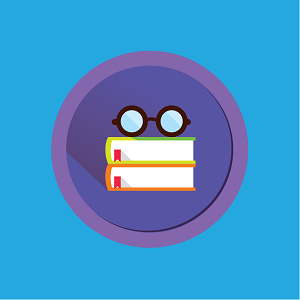 I know these steps intimately because we cover them in our course. I mean, these are the steps that we actually walk through in the course. However, when I said to make sure that your book is ready for libraries, there’s an entire list of things that your book should have. One of them is a catalogue and publication block. This is a block of information, of data, codes, numbers, and categories that all go into a small space that sits on the back of your title page, also known as the copyright page. If you would like to get into libraries, this chunk of data is very helpful because it shows the librarians that you mean business. That you understand their business and what they need from you in order to get your book into their system. When we say, “Make sure your book is ready,” there’s a long checklist of things you may not have actually heard of, and our course covers that. It’s the catalogue and publication block. We teach you how to price your book. What’s the right trim size? We’ve got an enormous discussion going on right now among all of our students about why 6x9 is not a great trim size for most books, not all, but for most. What you do is you get your book ready. If your book’s already printed and ready to go, you compare it to what the marketplace needs. You’ll learn these things in our course. When your book’s ready to go, registering with the wholesalers is as simple as writing a cover letter, sending them a copy of your book, with a marketing plan. Wholesalers want to know that you’re going to create demand. Are you going to be calling 40 libraries a week? Well, then tell them that. Are you going to be doing radio interviews or podcasts? Are you going to be writing guest posts as a blogger? If you tell the wholesaler what your marketing plan is, you have a much better chance of getting in there. The wholesalers are going to ask for a very deep discount. In some cases, this will be 50-60% off the price of your book. And, they are going to want to buy the returnable. If a wholesaler, such as Ingram Wholesale, Baker and Taylor Wholesale, Broder Wholesale, Bookazine buy 40 copies of your book, and only 20 sell, they are going to send you the other 20 back. So, you’re in the wholesalers now, you’ve agreed to their terms, they’ve ordered a few copies, and now it’s time to write your cover letter for the libraries. The cover letter does not focus on how wonderful you are or how terrific your book is. Although you probably are wonderful and your book is great, your letter is focused on what the librarians want to hear and what they need to know. What they need to know is that you understand their goals. If you approach a librarian and say, “Hey, I understand your goals, I know how hard your job is, and I’m here to make it easier,” you are so in. You want to create a cover letter, or start a communication email chain with them that says, “I know you want to create foot traffic. I know that you only want to bring in books that you need, the category is right for you, that your patrons are looking for. My book is exactly the kind of book that your patrons are looking for. How do I know that? Well, because I took this course and Amy told me that self-help books were #3 for non-fiction and cookbooks were #1. Well, my book is a self-help cookbook, so you clearly need my book. It’s priced perfectly, it’s got a category and publication block. It’s available at the following wholesalers. I also have an eBook available at the following eBook wholesalers.” I’ve been mentioning the print book wholesalers, but don’t forget the eBook wholesalers, like Overdrive and 3M. IngramSpark has a good one, or you can even use some of the eBook distributors like Bookbaby or Smashwords. So, once you’re in and once you’ve created that cover letter, and you start sending it out to emails, I suggest spending 15-20 minutes a day…that’s it…5 days a week, 20 minutes a day, for about 90 days, should really get you going, sending out this cover letter and tweaking it for each librarian.
I know these steps intimately because we cover them in our course. I mean, these are the steps that we actually walk through in the course. However, when I said to make sure that your book is ready for libraries, there’s an entire list of things that your book should have. One of them is a catalogue and publication block. This is a block of information, of data, codes, numbers, and categories that all go into a small space that sits on the back of your title page, also known as the copyright page. If you would like to get into libraries, this chunk of data is very helpful because it shows the librarians that you mean business. That you understand their business and what they need from you in order to get your book into their system. When we say, “Make sure your book is ready,” there’s a long checklist of things you may not have actually heard of, and our course covers that. It’s the catalogue and publication block. We teach you how to price your book. What’s the right trim size? We’ve got an enormous discussion going on right now among all of our students about why 6x9 is not a great trim size for most books, not all, but for most. What you do is you get your book ready. If your book’s already printed and ready to go, you compare it to what the marketplace needs. You’ll learn these things in our course. When your book’s ready to go, registering with the wholesalers is as simple as writing a cover letter, sending them a copy of your book, with a marketing plan. Wholesalers want to know that you’re going to create demand. Are you going to be calling 40 libraries a week? Well, then tell them that. Are you going to be doing radio interviews or podcasts? Are you going to be writing guest posts as a blogger? If you tell the wholesaler what your marketing plan is, you have a much better chance of getting in there. The wholesalers are going to ask for a very deep discount. In some cases, this will be 50-60% off the price of your book. And, they are going to want to buy the returnable. If a wholesaler, such as Ingram Wholesale, Baker and Taylor Wholesale, Broder Wholesale, Bookazine buy 40 copies of your book, and only 20 sell, they are going to send you the other 20 back. So, you’re in the wholesalers now, you’ve agreed to their terms, they’ve ordered a few copies, and now it’s time to write your cover letter for the libraries. The cover letter does not focus on how wonderful you are or how terrific your book is. Although you probably are wonderful and your book is great, your letter is focused on what the librarians want to hear and what they need to know. What they need to know is that you understand their goals. If you approach a librarian and say, “Hey, I understand your goals, I know how hard your job is, and I’m here to make it easier,” you are so in. You want to create a cover letter, or start a communication email chain with them that says, “I know you want to create foot traffic. I know that you only want to bring in books that you need, the category is right for you, that your patrons are looking for. My book is exactly the kind of book that your patrons are looking for. How do I know that? Well, because I took this course and Amy told me that self-help books were #3 for non-fiction and cookbooks were #1. Well, my book is a self-help cookbook, so you clearly need my book. It’s priced perfectly, it’s got a category and publication block. It’s available at the following wholesalers. I also have an eBook available at the following eBook wholesalers.” I’ve been mentioning the print book wholesalers, but don’t forget the eBook wholesalers, like Overdrive and 3M. IngramSpark has a good one, or you can even use some of the eBook distributors like Bookbaby or Smashwords. So, once you’re in and once you’ve created that cover letter, and you start sending it out to emails, I suggest spending 15-20 minutes a day…that’s it…5 days a week, 20 minutes a day, for about 90 days, should really get you going, sending out this cover letter and tweaking it for each librarian. Example Cover Letter
“Dear Susan, My name is Amy. I’ve written a book about the publishing industry. I’m hoping that you will consider stocking it on your shelves.” And then, you go on from there, “Here’s my marketing plan. Here’s what I know about your library. I would love to send you a copy as a PDF for you to review. May I send you a copy?” Just start with that.Communication With Librarians
Librarians are lovely. They are so nice. They are going to start communicating with you. As we get into the nitty- gritty on exactly how to do this, there’s also a long list of things not to do. You do not pick up the phone and call a librarian at noon on Saturday and expect them to give you half an hour. They aren’t going to. They are going to be annoyed; they’re busy. You do not call a school library and ask them to spend $400 on your book. They don’t know you, and they don’t have that kind of budget. School libraries are different than public libraries; they depend a lot on donations. If you really want to be focused on the school library market, that’s a slightly different cover letter. Again, we cover a lot of that in our course. What you want to do is to keep going after the libraries that want your book. You may hit a spade of libraries that aren’t interested because the category isn’t right for them. Yes, you have a self-help cookbook, and yes, that’s a huge market for libraries right now, in the print book world and the eBook world. But, what if that particular library system is just stuffed with self-help cookbooks? What if they don’t need anymore? That’s okay. There’s almost 13,000 public libraries in the United States. Go find others. Just start sending out your emails. Twenty minutes a day. You will eventually start enough conversations, and those orders will start coming in. Eventually, you will start seeing residual and viral sales. Things will start to snowball. Things will start to grow.
gritty on exactly how to do this, there’s also a long list of things not to do. You do not pick up the phone and call a librarian at noon on Saturday and expect them to give you half an hour. They aren’t going to. They are going to be annoyed; they’re busy. You do not call a school library and ask them to spend $400 on your book. They don’t know you, and they don’t have that kind of budget. School libraries are different than public libraries; they depend a lot on donations. If you really want to be focused on the school library market, that’s a slightly different cover letter. Again, we cover a lot of that in our course. What you want to do is to keep going after the libraries that want your book. You may hit a spade of libraries that aren’t interested because the category isn’t right for them. Yes, you have a self-help cookbook, and yes, that’s a huge market for libraries right now, in the print book world and the eBook world. But, what if that particular library system is just stuffed with self-help cookbooks? What if they don’t need anymore? That’s okay. There’s almost 13,000 public libraries in the United States. Go find others. Just start sending out your emails. Twenty minutes a day. You will eventually start enough conversations, and those orders will start coming in. Eventually, you will start seeing residual and viral sales. Things will start to snowball. Things will start to grow. Tips On Getting Into the Library Market
For those of you who would love to hit the library market, but you don’t have the time--I’ve always said, “When you need to sell a book…time, money, talent…pick any two.” If you’ve got time and money, but no talent, you can still be very successful. If you’ve got money and talent, but no time, you’re golden. If you don't have enough time, but you have a great book, you might want to consider using some of our advice and hiring someone to do this for you. Examples: a local college kid, your nephew, your grandson, etc. It should be someone that’s email friendly. You can hire a virtual assistant. I take out ads on Craigslist all the time. There are ways to hire somebody else to do this for you in a way that still is very profitable. Libraries are profitable enough that if you don’t have that 20 minutes a day, 5 days a week, maybe somebody else does. You should consider training someone how to do it. It is very transferable.Connecting With Amy
You can actually view the webinar about our library training. If you like what you’ve learned today, and you really want to get more into it, check that video out. I’m very, very proud of the work that Daniel Hall and I did on that. Also, if you need to reach me, I’m always reachable at Info@NewShelves.com or on my website, NewShelves.com. You don’t have to implement any of this, but if it resonates with you, then you should absolutely take the time and energy to actually start using what you’ve learned today.Daniels Real Fast Results Tips: Getting Into Libraries
You can watch a FREE on demand webinar called...
How to Sell & Rent Your Book to Libraries So You Can Grow Your Readership and Generate Passive Income
Watch it by clicking here.Resources:
Daniel And Amy's Course: Real Fast Library Marketing Wholesalers: Ingram Wholesale Baker and Taylor Wholesale Broder Wholesale BookazineReal Fast Results Community
If you are diggin’ on this stuff and really love what we’re doing here at Real Fast Results, would you please do me a favor? Head on over to iTunes, and make sure that you subscribe to this show, download it, and rate & review it. That would be an awesome thing. Of course, we also want to know your results. Please share those results with us at http://www.realfastresults.com/results. As always, go make results happen! Welcome to the Real Fast Results podcast! One of the things that this show is all about is helping you to see actual results in your business and in your life. There are a variety of potential obstacles that can impede you, or slow you down. Week to week, the episodes of this show provide you with specific steps on what you could do to help your business to grow. The shows are also meant to help you look inward and help you identify those characteristics of yourself which might actually be keeping you from having more success. You may be self-sabotaging. Or you may just have the breaks on in some aspects of your life or your business, and it’s keeping you from getting as much done as you would otherwise. Dr. Ed Daube is a psychologist who has a great grasp on not only the inner workings of people’s brains, but also how we can shift the paradigm of our minds slightly so that the negative aspects of our thoughts and emotions can actually help us to be even more productive. So, today’s interview is all about how to use negative emotions to get more done, faster and how to be a happier person besides. Introducing Dr. Ed Daube…
Welcome to the Real Fast Results podcast! One of the things that this show is all about is helping you to see actual results in your business and in your life. There are a variety of potential obstacles that can impede you, or slow you down. Week to week, the episodes of this show provide you with specific steps on what you could do to help your business to grow. The shows are also meant to help you look inward and help you identify those characteristics of yourself which might actually be keeping you from having more success. You may be self-sabotaging. Or you may just have the breaks on in some aspects of your life or your business, and it’s keeping you from getting as much done as you would otherwise. Dr. Ed Daube is a psychologist who has a great grasp on not only the inner workings of people’s brains, but also how we can shift the paradigm of our minds slightly so that the negative aspects of our thoughts and emotions can actually help us to be even more productive. So, today’s interview is all about how to use negative emotions to get more done, faster and how to be a happier person besides. Introducing Dr. Ed Daube… Emotions Are Positive Not Negative
I want you to understand that there’s no such thing as negative emotions. People label them as negative because of the results that they experience like, “Procrastination is negative because I don’t get things done.” In fact, all emotions are positive because they help us move forward. Let’s talk about procrastination.Procrastination And The Emotion It Causes
This is an excellent topic, and it’s an excellent topic because most people don’t get things done because they procrastinate. And when they procrastinate, they put things off. Take Real Fast Book as an example. The information given to people in that product is great, but people can’t use it because they are procrastinating. They are afraid to move forward. Before we get to that, you talk about negative emotions. We experience procrastination as putting things off, delaying, “I can’t get this done,” but underneath procrastination is the emotion of anxiety. Let me quickly say what emotions are. We have emotions because they alert us to threats in our environment and they prepare us to deal with those threats. That’s what emotions are. What anxiety is, it’s future-based emotions. We’re constantly scanning our surroundings, and we come across a threat, and then our anxiety tells us that there’s a threat. How do we use that? Well, when we feel anxious, that tells us we’re facing something. Usually, when we want to work on a book or a project at work, the threat is, “What if it doesn’t work out?” Or “What if it all goes to heck in a hand-basket and turns bad?” Then, when we ask that question “what if”, we then react, and this is the problem. We react to our anxiety as if that’s the only option available. If it were true that things were going to go to “heck in a hand-basket," then it would make sense to put it off, but it isn’t necessarily true. When we are aware of that, we can then turn our anxiety into anticipation, and use the energy or anticipation, which is a healthy energy, to move forward on the project. We get happy about moving forward, and we end up not only happy about what we’re doing, but finishing the project. That’s it in a nutshell; that’s the overview. We’ll go into more detail as we progress here.
underneath procrastination is the emotion of anxiety. Let me quickly say what emotions are. We have emotions because they alert us to threats in our environment and they prepare us to deal with those threats. That’s what emotions are. What anxiety is, it’s future-based emotions. We’re constantly scanning our surroundings, and we come across a threat, and then our anxiety tells us that there’s a threat. How do we use that? Well, when we feel anxious, that tells us we’re facing something. Usually, when we want to work on a book or a project at work, the threat is, “What if it doesn’t work out?” Or “What if it all goes to heck in a hand-basket and turns bad?” Then, when we ask that question “what if”, we then react, and this is the problem. We react to our anxiety as if that’s the only option available. If it were true that things were going to go to “heck in a hand-basket," then it would make sense to put it off, but it isn’t necessarily true. When we are aware of that, we can then turn our anxiety into anticipation, and use the energy or anticipation, which is a healthy energy, to move forward on the project. We get happy about moving forward, and we end up not only happy about what we’re doing, but finishing the project. That’s it in a nutshell; that’s the overview. We’ll go into more detail as we progress here. Example
It's about acknowledging a feeling and interpreting that feeling differently that we normally would. Let me give you a quick example. Look at the smoke detector in your house. It’s designed to alert you to the presence of a fire. When it does that, you then are prepared to get out of the house, follow through on your action plan, do whatever you need to do in case of a fire, and you’re protected. But, sometimes the smoke detector goes off in the middle of the night, or it goes off when you’ve burnt your toast. It’s the same smoke detector, but now the message is, “No. There’s no threat.” If you blame the smoke detector and you turn it off, or the battery is low and you don’t replace it, this could allow your house to burn down. Your emotion is like a smoke detector, it alerts you to possible threats, but it doesn’t always give you accurate information. For example, maybe your anxiety is telling you, “Okay, I’m avoiding doing my book. I’m anxious about that; I’m nervous… Maybe it’s because I haven’t done all of my preparation… Maybe it’s because I’m not ready to write yet because I need to do more work.” But, sometimes that anxiety will give you incorrect information, “There is no threat.” That’s where we turn it into anticipation and move forward.How To Overcome Anxiety Caused by Procrastination
When you find yourself procrastinating, putting things off, or you find yourself with writer’s block and you can’t move forward; the next step is to acknowledge, or validate, that you’re anxious. You don’t go with the flow here. You don’t react. You’re not going to move into a response mode. When you begin to feel that, your first question, and you’re asking it anyway, is “What if?” What if things go to heck in a hand-basket? That’s the question you’re asking yourself, and you need to recognize that. So now you can turn that around.Step 1 - Acknowledge the Emotion
 The first step, again, is to validate and recognize that you’re anxious, and you do that by the behavior that you’re engaging in. You’re procrastinating, and it’s telling you, “I’m anxious”. So, instead of saying, “What if it goes to heck in a hand-basket,” ask the question, “What if things go right,” and “What is it that I’m reacting to? What’s the threat that’s out there?” Usually, it’s something like, “Well, you know, if I write this book, what if people don’t like it? Or, what if it’s not everything I want it to say? Or, what if it doesn’t get all of the reviews that I want?” Okay, the next question is, “Yeah, what if… suppose it doesn’t, can I survive that? Can I survive the fact that people don’t like it? Yes, I can. Can I learn from it? Yes.” If I can survive the threat that’s keeping me from acting and causing me to procrastinate, then I no longer have to worry about it. I can move through it. So, if I can survive it, now the next question is, “Well, wait a minute… What if it goes well? What if people do like it? What if it’s well-received?” If it’s well received that’s exactly what I want, so now, there’s no longer any anxiety. I can anticipate the fact that it’s going to go well, and I can move forward. That’s how you turn it from anxiety into anticipation. You begin to question what it is that you are afraid of, can I survive it, and if I can, I don’t have to be afraid of it anymore. It may happen, and it may not. “Even if it does happen, I can survive it.” That’s the critical issue. I don’t have to be afraid of it anymore, and if I don’t have to be afraid of it, I don’t have to procrastinate and put it off. I can go after it and do what I have to do. So, Step #1 would be to acknowledge the emotion.
The first step, again, is to validate and recognize that you’re anxious, and you do that by the behavior that you’re engaging in. You’re procrastinating, and it’s telling you, “I’m anxious”. So, instead of saying, “What if it goes to heck in a hand-basket,” ask the question, “What if things go right,” and “What is it that I’m reacting to? What’s the threat that’s out there?” Usually, it’s something like, “Well, you know, if I write this book, what if people don’t like it? Or, what if it’s not everything I want it to say? Or, what if it doesn’t get all of the reviews that I want?” Okay, the next question is, “Yeah, what if… suppose it doesn’t, can I survive that? Can I survive the fact that people don’t like it? Yes, I can. Can I learn from it? Yes.” If I can survive the threat that’s keeping me from acting and causing me to procrastinate, then I no longer have to worry about it. I can move through it. So, if I can survive it, now the next question is, “Well, wait a minute… What if it goes well? What if people do like it? What if it’s well-received?” If it’s well received that’s exactly what I want, so now, there’s no longer any anxiety. I can anticipate the fact that it’s going to go well, and I can move forward. That’s how you turn it from anxiety into anticipation. You begin to question what it is that you are afraid of, can I survive it, and if I can, I don’t have to be afraid of it anymore. It may happen, and it may not. “Even if it does happen, I can survive it.” That’s the critical issue. I don’t have to be afraid of it anymore, and if I don’t have to be afraid of it, I don’t have to procrastinate and put it off. I can go after it and do what I have to do. So, Step #1 would be to acknowledge the emotion. Step 2 - Evaluate That Emotion
Step #2 would be to critically evaluate that emotion, and where it’s coming from, and whether or not you could survive it. What’s the worst case scenario, and whether or not you can survive that worst case scenario? Once you’ve kind of made that determination that what you’re doing isn’t going to lead to your demise, you can lip the coin and say, “This could turn out really good if I just keep going.” Anxiety, as an emotion, leads us to avoid the possible threat, and that energy moves us away from what we want to do. The flip side of anxiety, even though it’s the same energy and the same emotion, is anticipation. So, you’re not changing that emotion. You’re just flipping it to the other side. You’re using that same energy, but now that energy is pushing you towards what you want, instead of away from it. The other nice thing about this is if you have Googled “procrastination,” what you’ve likely been told is that you need to set goals. They need to be goals that you can do, and you need to go after it. None of that’s going to work if you don’t understand anxiety the way that it was just explained. What you are now empowered to do is take that energy, to recognize it, and to turn it around so that it now works for you and energizes you to move forward on whatever project it is that you’re facing. That’s the power of using your emotions as tools. It’s the same emotion; you’re just recognizing it and turning it from avoidance into approach and being energized by it. That’s the power of using emotions as tools. If you understand this, then you’ll now have a tool in your “tool bag” that you can use whenever a situation comes up that you’re avoiding. If there’s something that you’re not moving forward on, you now have the power in your hands, instead of reacting to the emotion and feeling un-empowered and unable to do anything about it. That’s the power of using emotions as tools and anxiety.
survive it. What’s the worst case scenario, and whether or not you can survive that worst case scenario? Once you’ve kind of made that determination that what you’re doing isn’t going to lead to your demise, you can lip the coin and say, “This could turn out really good if I just keep going.” Anxiety, as an emotion, leads us to avoid the possible threat, and that energy moves us away from what we want to do. The flip side of anxiety, even though it’s the same energy and the same emotion, is anticipation. So, you’re not changing that emotion. You’re just flipping it to the other side. You’re using that same energy, but now that energy is pushing you towards what you want, instead of away from it. The other nice thing about this is if you have Googled “procrastination,” what you’ve likely been told is that you need to set goals. They need to be goals that you can do, and you need to go after it. None of that’s going to work if you don’t understand anxiety the way that it was just explained. What you are now empowered to do is take that energy, to recognize it, and to turn it around so that it now works for you and energizes you to move forward on whatever project it is that you’re facing. That’s the power of using your emotions as tools. It’s the same emotion; you’re just recognizing it and turning it from avoidance into approach and being energized by it. That’s the power of using emotions as tools. If you understand this, then you’ll now have a tool in your “tool bag” that you can use whenever a situation comes up that you’re avoiding. If there’s something that you’re not moving forward on, you now have the power in your hands, instead of reacting to the emotion and feeling un-empowered and unable to do anything about it. That’s the power of using emotions as tools and anxiety. Step 3 - I Can Do This
 When you find yourself procrastinating, instead of saying, “I can’t do this,” you can say, “I can do this. I can move forward.” When you say, “I can move forward,” the next question is, “What do I need to do to do that?” It isn’t just the power of positive thinking, “I can do this, I can, I can, I can.” That’s nice, but it’s not enough. When you go from, “I have to avoid this, which is what my anxiety is telling me to… Wait a minute. My anxiety is telling me I can do this.”
When you find yourself procrastinating, instead of saying, “I can’t do this,” you can say, “I can do this. I can move forward.” When you say, “I can move forward,” the next question is, “What do I need to do to do that?” It isn’t just the power of positive thinking, “I can do this, I can, I can, I can.” That’s nice, but it’s not enough. When you go from, “I have to avoid this, which is what my anxiety is telling me to… Wait a minute. My anxiety is telling me I can do this.” Step 4 - What Do I Need To Do
Then, the next step is, “What do I need to do.” Now you can use all of the information that you’re taking in from this podcast. Now you can use that “how-to” because you’ll be energized to take advantage of the information, not only that you’re learning from Real Fast Results, but that’s out there in the books that you’ve read and so forth. You are now empowered to use that information.Take Action
You need to take action. You need to do whatever it is that you now realize is in front of you. You need to take action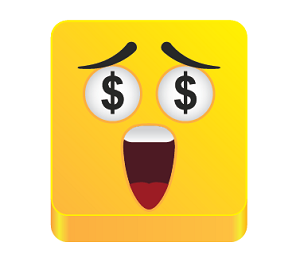 on the steps that you’ve laid out to get the job done. If you don’t take action, nothing gets done, no matter how prepared you are or how excited you are. The information is out there on the steps that you need to take. If you are writing a book, for example, you already know how to do that because this has been laid out for you, probably multiple times. The information is available, and now you need to take the steps, or the action on what you need to do. The steps are that once you’ve acknowledged your anxiety, because you are procrastinating, you need to ask, “Now, wait a minute, what’s the threat? What is it that I’m avoiding?” You answer that, and you can write it down, by the way. That’s a very powerful technique. Write down the answers to the questions you’re asking because then you can look at that piece of paper, and you can look at the threat that you’re avoiding, and you can then move to the next step of, “What if it goes right, and if it goes right, what do I need to do to make it happen?” Write those steps down and then act on those steps. Now what you’ve done is, you don't only have those steps in front of you of what you need to do, you’ve got your goals. You need to turn those steps into goals, and take action on those steps, and your book gets done, or whatever it is. You should have all of the information that you need to move forward, but you actually have to do it. Let’s say that it’s not writing a book that you’re avoiding. Maybe you’re afraid to ask your boss for a raise, or you’ve been avoiding the task of asking your spouse about finances. Maybe you’re thinking about talking to your kids about their friends. This solution applies to all of that. It’s the same process. Now, what you need to do is focus on the question of, “What if?” Think about, “What if things go well? What if my book is well-received? What if I ask for that raise and the boss says ‘yes’? What if I talk to my kid about their friends, and instead of him/her going up to their room and slamming the door, they say, ‘Well, yeah, I need to think about that…’?” When you focus on that, “What if,” that question itself, and the answer to it, is exciting because I can get excited about my book being well-received or about my boss giving me a raise. I can get excited about whatever it happens to be… talking to my spouse. When I get excited about that, I am motivated to move forward to get that job done. I can now sit down and ask, “What do I need to do? What’s my next step? What is the next step in the process? What haven’t I done? What do I need to prepare myself for in talking to my kids? What information do I need to have in talking to my boss when he asks me, ‘Well, why do you think you need a raise?’” It’s asking the question, “What if everything goes right?” Getting excited about it and focusing your attention on that, when you focus your attention on that, you’re then motivated to take the next step. That’s how it all fits together. What you’re doing is using anticipation, the anticipation of what good might happen, to actually propel you forward. You’re going to be motivated to take the next step in whatever process you’re working through because you’re anticipating good things happening. Allow yourself to be carried away with that emotion, whereas before being carried away by anxiety and the concern for the possible bad results that could come about. Now you’re allowing yourself to use that same energy and allowing yourself to get carried away by the positive results that you want and you can now make happen. It’s the same energy, except now you’ve turned it around and flipped it on its side so that it’s working for you as a tool, instead of against you.
on the steps that you’ve laid out to get the job done. If you don’t take action, nothing gets done, no matter how prepared you are or how excited you are. The information is out there on the steps that you need to take. If you are writing a book, for example, you already know how to do that because this has been laid out for you, probably multiple times. The information is available, and now you need to take the steps, or the action on what you need to do. The steps are that once you’ve acknowledged your anxiety, because you are procrastinating, you need to ask, “Now, wait a minute, what’s the threat? What is it that I’m avoiding?” You answer that, and you can write it down, by the way. That’s a very powerful technique. Write down the answers to the questions you’re asking because then you can look at that piece of paper, and you can look at the threat that you’re avoiding, and you can then move to the next step of, “What if it goes right, and if it goes right, what do I need to do to make it happen?” Write those steps down and then act on those steps. Now what you’ve done is, you don't only have those steps in front of you of what you need to do, you’ve got your goals. You need to turn those steps into goals, and take action on those steps, and your book gets done, or whatever it is. You should have all of the information that you need to move forward, but you actually have to do it. Let’s say that it’s not writing a book that you’re avoiding. Maybe you’re afraid to ask your boss for a raise, or you’ve been avoiding the task of asking your spouse about finances. Maybe you’re thinking about talking to your kids about their friends. This solution applies to all of that. It’s the same process. Now, what you need to do is focus on the question of, “What if?” Think about, “What if things go well? What if my book is well-received? What if I ask for that raise and the boss says ‘yes’? What if I talk to my kid about their friends, and instead of him/her going up to their room and slamming the door, they say, ‘Well, yeah, I need to think about that…’?” When you focus on that, “What if,” that question itself, and the answer to it, is exciting because I can get excited about my book being well-received or about my boss giving me a raise. I can get excited about whatever it happens to be… talking to my spouse. When I get excited about that, I am motivated to move forward to get that job done. I can now sit down and ask, “What do I need to do? What’s my next step? What is the next step in the process? What haven’t I done? What do I need to prepare myself for in talking to my kids? What information do I need to have in talking to my boss when he asks me, ‘Well, why do you think you need a raise?’” It’s asking the question, “What if everything goes right?” Getting excited about it and focusing your attention on that, when you focus your attention on that, you’re then motivated to take the next step. That’s how it all fits together. What you’re doing is using anticipation, the anticipation of what good might happen, to actually propel you forward. You’re going to be motivated to take the next step in whatever process you’re working through because you’re anticipating good things happening. Allow yourself to be carried away with that emotion, whereas before being carried away by anxiety and the concern for the possible bad results that could come about. Now you’re allowing yourself to use that same energy and allowing yourself to get carried away by the positive results that you want and you can now make happen. It’s the same energy, except now you’ve turned it around and flipped it on its side so that it’s working for you as a tool, instead of against you. Connecting With Dr. Daube
My email is TheEmotionsDoctor@gmail.com. My website and blog can be found at TheEmotionsDoctor.com. I post weekly entries about emotions there, and you can also leave comments. I’d love to hear from you. If you have any questions about emotions, go to my website and leave a comment or send me an email. I have a book out as well, and by the way, I procrastinated before I started that project. I used the exact same technique that I’ve just taught you in order to get my own book written. My book is called Emotions as Tools: A Self Help Guide to Controlling Your Life Not Your Feelings. It’s available on Amazon, but you can also go to my website and download the first chapter for free. I hope that you will do that. Real Fast Book helped me to write this book, and it also helped me to write my second book, which is Beyond Anger Management: Master Your Anger. This is a strategic tool that you can use, and the first chapter of this book is available on my website as well. Head on over there and check it out.Daniel's Real Fast Results Tip: Emotions
Resources
Dr. Daube's Books: Emotions as Tools: A Self Help Guide to Controlling Your Life Not Your Feelings Beyond Anger Management: Master Your AngerReal Fast Results Community
If you are diggin’ on this stuff and really love what we’re doing here at Real Fast Results, would you please do me a favor? Head on over to iTunes, and make sure that you subscribe to this show, download it, and rate & review it. That would be an awesome thing. Of course, we also want to know your results. Please share those results with us at http://www.realfastresults.com/results. As always, go make results happen! Welcome to Real Fast Results! This is Daniel Hall, and I’m very excited about this particular episode because I’m bringing on a guest who is going to be covering a topic that I am intensely interested in. His name is Stephen Key, and he is going to be going over the idea of licensing your ideas for passive income. That means selling your ideas to companies and making a royalty income from that. I have searched high and low for an expert to come on who is both very accomplished and willing to share their secrets. So, I am very appreciative that Stephen decided to join us today. Stephen, welcome to the show. Hopefully, the people reviewing this material will understand that they can take action as soon as today or tomorrow. What I will do is show you how to come up with simple ideas, show them to companies, and let them pay you for your creativity. You don’t have to build a business or spend a lot of money to do this.
Welcome to Real Fast Results! This is Daniel Hall, and I’m very excited about this particular episode because I’m bringing on a guest who is going to be covering a topic that I am intensely interested in. His name is Stephen Key, and he is going to be going over the idea of licensing your ideas for passive income. That means selling your ideas to companies and making a royalty income from that. I have searched high and low for an expert to come on who is both very accomplished and willing to share their secrets. So, I am very appreciative that Stephen decided to join us today. Stephen, welcome to the show. Hopefully, the people reviewing this material will understand that they can take action as soon as today or tomorrow. What I will do is show you how to come up with simple ideas, show them to companies, and let them pay you for your creativity. You don’t have to build a business or spend a lot of money to do this. The Benefits of Licensing Your Ideas
I believe that we are all creative, but a lot of us don’t want to start businesses. I admit that I'm not the business sort, but I'm very creative. So, what should I do with all of my ideas? Should I let them just sit in a corner? I feel I let them sit, sooner or later I'm going to see them out there on TV or on store shelves. The game has changed. You don’t have to start a company, or raise money, or quit your job. You don’t have to do anything that’s scary or dangerous. You can take some of your ideas, show them to the “right” companies, and you don’t even have to own it. That’s what surprises everyone. Everybody thinks that you have to have a patent. You don’t have to own anything; it’s all about speed to market. So, you just have to have the right idea and show it to a company. The big idea is that you can take intellectual property that you have developed, without having a patent for it, and bring it out to the marketplace and actually sell it so that you end up with money in your bank account. It doesn’t matter if you have a business or not. You’re not actually selling an idea but renting it. You’re just going to let these companies rent your idea for a while, and every quarter, you’re going to collect royalties from it. If you can make this work for you, this opportunity will allow you to live anywhere you want to, and you won’t have to work a 9-5 job. However, once you start doing this, you’re going to want to work on this all of the time. You can work anytime you want, live anywhere you want, and let the big companies do all of the work for you.
business sort, but I'm very creative. So, what should I do with all of my ideas? Should I let them just sit in a corner? I feel I let them sit, sooner or later I'm going to see them out there on TV or on store shelves. The game has changed. You don’t have to start a company, or raise money, or quit your job. You don’t have to do anything that’s scary or dangerous. You can take some of your ideas, show them to the “right” companies, and you don’t even have to own it. That’s what surprises everyone. Everybody thinks that you have to have a patent. You don’t have to own anything; it’s all about speed to market. So, you just have to have the right idea and show it to a company. The big idea is that you can take intellectual property that you have developed, without having a patent for it, and bring it out to the marketplace and actually sell it so that you end up with money in your bank account. It doesn’t matter if you have a business or not. You’re not actually selling an idea but renting it. You’re just going to let these companies rent your idea for a while, and every quarter, you’re going to collect royalties from it. If you can make this work for you, this opportunity will allow you to live anywhere you want to, and you won’t have to work a 9-5 job. However, once you start doing this, you’re going to want to work on this all of the time. You can work anytime you want, live anywhere you want, and let the big companies do all of the work for you. Steps To Licence Your Ideas For Passive Income
The first step is to see if you have a marketable idea. You need to find out fairly quickly, and the best way to do that is to just study the marketplace. What’s out there? I recommend doing a Google Image search. If you’ve got a new hammer, look at all the hammers in the world. You can do this at home. Spend a little time just playing around with the idea, and be an expert in a micro-category. Just sit, search, and see if you can find your “idea”. If you find that there’s something unique about your idea, move to the next step, which is to do a Google Patents search. That sounds very difficult, but all you do is go to Google Patents and type in a few words that hold similarities to your idea. Then just scour through what other people have done in that space. In order to create for the future, you must know what’s been done in the past. By looking at past patents, it gives you a glimpse of the past. If you’ve taken these first two steps, and you still think that your idea is unique, you’ll want to continue moving forward with it. Now, this doesn’t mean that you need to reinvent the wheel. You just need to be able to propose a small improvement, but one that no one else has seen. The smaller an idea, the better. Simple ideas is where it’s at, and for a few different reasons. First, if you make a bit of an improvement on an existing idea, then you know there’s a market for it already. Also, it’s likely that the manufacturing can be done because it’s already being done, but you’re making a small improvement. The third step in this process is to show a company your idea. It really is that simple. You do this with a one-page sell sheet. It’s basically just an advertisement. You know how you drive down a freeway, and when you see a billboard, you get it instantly? That’s all your sell sheet needs to be. It should have a big benefit on the top that tells the company what your idea does and why they should care, a picture pertaining to your idea, and then your contact information down at the bottom. Here’s how easy this is. Let’s say that you just have a sketch on a napkin. You can find a freelance designer on the Internet that does 3D computer generated graphics. This person would be able to take a simple sketch of yours and make it beautiful. They can make your idea come to life. It may not be real yet, but they can make it look real, and you can have that done for under $100. It’s important that you understand that the benefit statement that you use should let people know, at a glance, how your idea will make the buyer’s life better. It’s essentially just a benefit-driven headline. Once you have a sell sheet, you need to make a list of companies that could benefit from your idea. I call it follow the money. Who could benefit from my idea? Just go down to a retail store that you think it might sell in, and look at where it’s going to be on that isle. Those are the companies that you’re going to submit your idea to. The next step that you’ll need to take is to file a PPA (Provisional Patent Application). You can file it anywhere in the world and in the United States for $65. It gives you one year to shop around and show it to companies and put “patent pending” on it. Now, that $65 just gives you one year, but during this time, you can shop it around and see if anyone wants it. After you have that, then you can move forward and contact the company.To reiterate, here are your steps:
- Step 1: Check to make sure your brilliant idea is marketable.
- Check Google Images
- Check Google Patents.
- Step 2: Make a sell sheet to present to companies
- Benefit-driven headline
- Image that makes idea come to life
- Contact information
- Step 3: Make a list of companies to submit your idea to.
- Step 4: File a PPA
- Step 5: Submit Your Idea
Submitting Your Idea
 To submit your idea, I recommend that you go to LinkedIn and find a company that you want to send it to. Find someone in sales or someone in marketing. Tell them that you’re a product developer. Never tell people you are an inventor. Anyway, let them know that you would like to submit an idea to their company for them to review, and ask them what their process is. That’s all it takes to get up and running. This person is going to tell you what you need to do, and they may just respond with an email address, which is great because you can just send your sell sheet in electronically. If the company takes an interest in it, they will bring all of the right people in the room to look at it. Hopefully, at that point, they will pick up the phone or send you an email saying, “We want to know more.” Now you’re in the game. That’ when the magic happens. Either they will like it or they won’t. You’ll know very, very quickly whether you hit it big or not. If it’s a great idea, the company that you submitted it to would respond very fast in most situations. It’s when they call that things get a little trickier. It’s time to cut a deal. I recommend that you get someone with a little more experience to help you. If you’ve never done this before, find someone that’s done it, or find someone with a bit of legal expertise. You’re going to need some guidance at this point. Now they want it, and they are going to want to cut a deal. You want this deal to be cut in a way that you benefit best for your idea. This is so simple that anyone can do this at any age. I have been teaching people that are 18 and still in high school to do this and people in their 80’s to do this. Anyone can do this.
To submit your idea, I recommend that you go to LinkedIn and find a company that you want to send it to. Find someone in sales or someone in marketing. Tell them that you’re a product developer. Never tell people you are an inventor. Anyway, let them know that you would like to submit an idea to their company for them to review, and ask them what their process is. That’s all it takes to get up and running. This person is going to tell you what you need to do, and they may just respond with an email address, which is great because you can just send your sell sheet in electronically. If the company takes an interest in it, they will bring all of the right people in the room to look at it. Hopefully, at that point, they will pick up the phone or send you an email saying, “We want to know more.” Now you’re in the game. That’ when the magic happens. Either they will like it or they won’t. You’ll know very, very quickly whether you hit it big or not. If it’s a great idea, the company that you submitted it to would respond very fast in most situations. It’s when they call that things get a little trickier. It’s time to cut a deal. I recommend that you get someone with a little more experience to help you. If you’ve never done this before, find someone that’s done it, or find someone with a bit of legal expertise. You’re going to need some guidance at this point. Now they want it, and they are going to want to cut a deal. You want this deal to be cut in a way that you benefit best for your idea. This is so simple that anyone can do this at any age. I have been teaching people that are 18 and still in high school to do this and people in their 80’s to do this. Anyone can do this. Cutting A Deal
Exactly how you can go about cutting a deal with a company is beyond the scope of this particular discussion. However, here is a little insight. There will be a licensing agreement, and they are going to pay you a royalty on every one (use of your idea/product) that they sell. So, basically, you’re going to rent it to them. At this point, you can also get them to pay for the patent too. There are all sorts of things that you could potentially negotiate, but on the whole, they are going to rent it, they are going to sell it, they are going to pay you.Royalties - Example
Let me give you an example of one of the ideas I had. It was a little Nerf basketball goal. But, the backboard depicted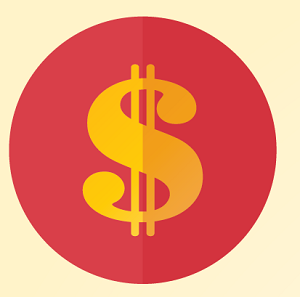 a picture of Michael Jordan, and it was in the shape of Jordan’s head and shoulders. This sold for 10 years, and I collected royalties on a prototype that probably cost maybe $10. The first year was $100,000 in royalties, and it continued to sell for 9 years after that. I sent the Michael Jordan basketball goal idea in on April 9, 1999, and had a contract on the 12th. So, I had a contract 3 days later. That’s how fast it went. They were already selling the square ones with a little picture of Michael Jordan on them. It was a split royalty. They paid Michael Jordan and they paid Stephen. In this case, Stephen’s cut was 2.5%. That’s not a very high royalty, even for a small idea. Usually, the average is 5-6% off of the wholesale price of the product. Every time the product was shipped for $4.99, I would get 2.5%. They made bigger ones and smaller ones, and they even made them with different basketball players. Another product of mine also sold for 10 years. The last check i got was for $0.55 and I kept it.
a picture of Michael Jordan, and it was in the shape of Jordan’s head and shoulders. This sold for 10 years, and I collected royalties on a prototype that probably cost maybe $10. The first year was $100,000 in royalties, and it continued to sell for 9 years after that. I sent the Michael Jordan basketball goal idea in on April 9, 1999, and had a contract on the 12th. So, I had a contract 3 days later. That’s how fast it went. They were already selling the square ones with a little picture of Michael Jordan on them. It was a split royalty. They paid Michael Jordan and they paid Stephen. In this case, Stephen’s cut was 2.5%. That’s not a very high royalty, even for a small idea. Usually, the average is 5-6% off of the wholesale price of the product. Every time the product was shipped for $4.99, I would get 2.5%. They made bigger ones and smaller ones, and they even made them with different basketball players. Another product of mine also sold for 10 years. The last check i got was for $0.55 and I kept it. More Tips On Licensing Products
The most important thing to understand is that you can do this. You don’t need to have a degree in product development or even a business of your own. All you need to do is have a love for products. Find a category that you’re fascinated with. If you like golf, stick with that. Look at golf products, study them, and think about what problems there are. That’s really the first step. It’s not hard. I like to teach people that they should try to be an expert in a micro-category. It may be something that you’re already in the business of. It’s even better if it’s related to something you’re already doing. One of my students was in the restaurant business, and he noticed that it was really hard to get the tomato paste out of the big cans that they used. He created a tool that allowed them to pull it all out at one time. You see? He knew the problem personally because he was in the business. He discovered there was a problem, created a mechanism to solve that problem, and then licensed the mechanism. Most people don’t even know that you can license ideas in the hospitality industry. This is a huge industry. Here are more industries that are on fire at the moment:- The Pet Industry
- The Kitchen Industry
- “As Seen on TV”*
- The Fitness Industry
- The Home Improvement Industry
Do I Have to Have a Brilliant Idea to Do This?
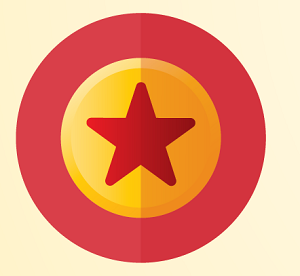 You do not have to reinvent the wheel. Big ideas take a lot of money and time because you have to educate, and most likely, spend a lot of money to get it going. When you make simple improvements on existing ideas, the product is already selling and has already been proven. You’re just bringing the next addition out. They already have the marketplace established, so it’s speed to market. Here is an example of how simple this can be. I've got a water bottle with a label on it, and you could spin the label on the bottle and it would reveal more information from a little window on the back. In other words, the label is in two layers. When you spin the bottom of the bottle, new information would be shown through a little window on the top label. This could be used as a marketing device. This particular water bottle has a college team’s logo on it, and it was being used as a recruiting device. Imagine yourself at a football game, and you happen to spin the bottom of your bottle of water and realize that it does that, so you begin reading. Then you find out all sorts of things about what the university you were at offers. This is a sort of cool and clever idea, but all it really involves is an extra layer of the label on a water bottle. The best part is that this piggybacks on products that are already on the market. All I did was add a little value by making some use of, or a simple improvement to, the label that would have existed already. It delivers more content. You could use this for contests and all sorts of things. In fact, you basically double the label size this way, and a company can add more promotional materials, which makes the label all the more valuable to the company at hand. For this project, my one-line benefit statement was, “This label adds 75% more space.” If you had an idea like mine, you might begin by doing a Google Image search for, “Labels that add more information.” Then, I would just look at all of the images. I've seen labels that pull out like an accordion book. I might even go into someone’s website. I'd just search around for everything having to do with labels. I'd look up “expanded content labels”, and “labels that add more information”, and “labels that function”. I just start to become an expert in one little area. In this case, I looked at this and found retailers that sold different types of labels. Those would be the companies that I submitted it to. In other words, you could go to those who have something substantially similar, and that could be the first step in who to contact. Everybody thinks that you’re going after the competition. No, it’s your potential licensee. As you are researching the market, you’re also looking for potential licensees. The next thing that you would do is perform a search on Google Patents. I would type in the same thing as I did before, which would be things like “Labels that add more information”. Various patents involving these types of labels would come up, and I would search through them to make sure that I'm not copying anyone else’s patented idea. Then I would search through the manufacturers that came up in this search as well. Again, when you do this for a day or so, you begin to become sort of an expert in a very narrow category. If you do this and you start to think that you have a marketable idea that would work, that’s when you begin to make plans to put together your sell sheet. You might even decide to make a YouTube video about your ideas. YouTube videos are very powerful, and one that you make for something like this shouldn’t be more than about one minute long. All you need to do is demonstrate a problem and how your idea could be the solution. For example, if you wanted to sell the label idea spoken about before, you could show a person that was frustrated because there wasn’t enough information about something on his label. Then, you could show that person happy because he found a bottle that gave him all the information he was looking for. If you made a YouTube video and a sell sheet, you could add a URL to your sales sheet that people could click on to see a demo of your idea. Since you studied the marketplace and made a list of companies, you have done all of the work. You have a video, a sell sheet, and a list of companies to send the sheet out to. That’s when you’ll want to file your PPA (Provisional Patent Application). At that point, you’ll have one year to shop it around before you have to file a non-provisional, which would be a patent. You can file a PPA anywhere in the world, yourself, for basically $65. If you are in a higher income bracket, it might cost $120. Either way, it’s very affordable. The sell sheet that you make would need a good image. A 3D, computer-generated graphic might run you $50-$70. That, along with the cost of your PPA shouldn’t exceed more than about $200, and yet, you’ve created a package that could potentially be worth hundreds of thousands of dollars. I'm amazed at how many ideas I have seen that were truly remarkable, but they take forever because they aren’t simple. People try to reinvent the wheel and have to educate people about their idea. On the other hand, I've seen small improvements on products get licensed all of the time. In fact, I see licensing agreements almost every other week. The people that are getting these contracts are using my 10-step system, and five of these steps you learned about today. It’s really quite easy to put together the marketing material, create a list, make a sales sheet, and reach out to a company. These are all steps that people can follow and complete both quickly and inexpensively. I have even taught people in other countries how to do this, and they end up feeding ideas to United States companies. You can do this from just about anywhere. Speaking of doing this inexpensively, there are people offering to do 3D renderings on Fiverr each and every day at a very low cost. It’s incredible how much skill people have today and what little they charge for them. There was a time that something like this would have cost thousands of dollars, and now you can have this sort of thing done for as little as $10. It’s just incredible. One of the points that I want to get across is that you need to reach out to everyone that you can, and if you get a “no”, don’t let it deter you. Keep trying. I recommend contacting at least 25 different companies, and all at the same time. Don’t wait to hear back from one. Right now, you might be thinking, “Well, what if there are two different companies that want it?” I usually respond to this question with, “What a great problem to have!” This could potentially cause a bidding war for your idea. By the way, there’s one industry that you would not want to contact more than one person at a time with, and that’s DRTV (Direct Response TV, otherwise known as “As Seen on TV”). It’s a very small community, so contact them one at a time. There are only five or six players in that community anyway, and you’ll want to contact each of them one at a time. When it comes to everyone else, however, you’ll want to contact as many people as possible. Keep good notes, and even if you get a “no”, you might get a “yes” next time. Act professionally and ask for feedback. Maybe you can resubmit it, or maybe you can tweak the idea a bit before submitting it to the next company. Everything is based on relationships, and if you submit another one before you know it, they’ll start to tell you what they are looking for. That’s golden because if you know what people want, you’re in a much better position to provide it. This definitely gives you an advantage, and they realize that you are working for free for them; that is, until they take it and rent it from you. You’re an asset. They want these calls, and they are really going to love you. When they finally say, “We want to talk more,” you’re going to fall out of your chair. This gives me goose bumps to this day. That’s when you’ll know that you’re really in the game. Again, anyone can do this. The steps are easy, and you’ve been given all of the advice that you need to get started today. The only thing that hasn’t been discussed much at this point is the contract. I can talk all day about how to cut these deals, but there note enough time during this interview. However, here are ways to cut deals that you get it every time.
You do not have to reinvent the wheel. Big ideas take a lot of money and time because you have to educate, and most likely, spend a lot of money to get it going. When you make simple improvements on existing ideas, the product is already selling and has already been proven. You’re just bringing the next addition out. They already have the marketplace established, so it’s speed to market. Here is an example of how simple this can be. I've got a water bottle with a label on it, and you could spin the label on the bottle and it would reveal more information from a little window on the back. In other words, the label is in two layers. When you spin the bottom of the bottle, new information would be shown through a little window on the top label. This could be used as a marketing device. This particular water bottle has a college team’s logo on it, and it was being used as a recruiting device. Imagine yourself at a football game, and you happen to spin the bottom of your bottle of water and realize that it does that, so you begin reading. Then you find out all sorts of things about what the university you were at offers. This is a sort of cool and clever idea, but all it really involves is an extra layer of the label on a water bottle. The best part is that this piggybacks on products that are already on the market. All I did was add a little value by making some use of, or a simple improvement to, the label that would have existed already. It delivers more content. You could use this for contests and all sorts of things. In fact, you basically double the label size this way, and a company can add more promotional materials, which makes the label all the more valuable to the company at hand. For this project, my one-line benefit statement was, “This label adds 75% more space.” If you had an idea like mine, you might begin by doing a Google Image search for, “Labels that add more information.” Then, I would just look at all of the images. I've seen labels that pull out like an accordion book. I might even go into someone’s website. I'd just search around for everything having to do with labels. I'd look up “expanded content labels”, and “labels that add more information”, and “labels that function”. I just start to become an expert in one little area. In this case, I looked at this and found retailers that sold different types of labels. Those would be the companies that I submitted it to. In other words, you could go to those who have something substantially similar, and that could be the first step in who to contact. Everybody thinks that you’re going after the competition. No, it’s your potential licensee. As you are researching the market, you’re also looking for potential licensees. The next thing that you would do is perform a search on Google Patents. I would type in the same thing as I did before, which would be things like “Labels that add more information”. Various patents involving these types of labels would come up, and I would search through them to make sure that I'm not copying anyone else’s patented idea. Then I would search through the manufacturers that came up in this search as well. Again, when you do this for a day or so, you begin to become sort of an expert in a very narrow category. If you do this and you start to think that you have a marketable idea that would work, that’s when you begin to make plans to put together your sell sheet. You might even decide to make a YouTube video about your ideas. YouTube videos are very powerful, and one that you make for something like this shouldn’t be more than about one minute long. All you need to do is demonstrate a problem and how your idea could be the solution. For example, if you wanted to sell the label idea spoken about before, you could show a person that was frustrated because there wasn’t enough information about something on his label. Then, you could show that person happy because he found a bottle that gave him all the information he was looking for. If you made a YouTube video and a sell sheet, you could add a URL to your sales sheet that people could click on to see a demo of your idea. Since you studied the marketplace and made a list of companies, you have done all of the work. You have a video, a sell sheet, and a list of companies to send the sheet out to. That’s when you’ll want to file your PPA (Provisional Patent Application). At that point, you’ll have one year to shop it around before you have to file a non-provisional, which would be a patent. You can file a PPA anywhere in the world, yourself, for basically $65. If you are in a higher income bracket, it might cost $120. Either way, it’s very affordable. The sell sheet that you make would need a good image. A 3D, computer-generated graphic might run you $50-$70. That, along with the cost of your PPA shouldn’t exceed more than about $200, and yet, you’ve created a package that could potentially be worth hundreds of thousands of dollars. I'm amazed at how many ideas I have seen that were truly remarkable, but they take forever because they aren’t simple. People try to reinvent the wheel and have to educate people about their idea. On the other hand, I've seen small improvements on products get licensed all of the time. In fact, I see licensing agreements almost every other week. The people that are getting these contracts are using my 10-step system, and five of these steps you learned about today. It’s really quite easy to put together the marketing material, create a list, make a sales sheet, and reach out to a company. These are all steps that people can follow and complete both quickly and inexpensively. I have even taught people in other countries how to do this, and they end up feeding ideas to United States companies. You can do this from just about anywhere. Speaking of doing this inexpensively, there are people offering to do 3D renderings on Fiverr each and every day at a very low cost. It’s incredible how much skill people have today and what little they charge for them. There was a time that something like this would have cost thousands of dollars, and now you can have this sort of thing done for as little as $10. It’s just incredible. One of the points that I want to get across is that you need to reach out to everyone that you can, and if you get a “no”, don’t let it deter you. Keep trying. I recommend contacting at least 25 different companies, and all at the same time. Don’t wait to hear back from one. Right now, you might be thinking, “Well, what if there are two different companies that want it?” I usually respond to this question with, “What a great problem to have!” This could potentially cause a bidding war for your idea. By the way, there’s one industry that you would not want to contact more than one person at a time with, and that’s DRTV (Direct Response TV, otherwise known as “As Seen on TV”). It’s a very small community, so contact them one at a time. There are only five or six players in that community anyway, and you’ll want to contact each of them one at a time. When it comes to everyone else, however, you’ll want to contact as many people as possible. Keep good notes, and even if you get a “no”, you might get a “yes” next time. Act professionally and ask for feedback. Maybe you can resubmit it, or maybe you can tweak the idea a bit before submitting it to the next company. Everything is based on relationships, and if you submit another one before you know it, they’ll start to tell you what they are looking for. That’s golden because if you know what people want, you’re in a much better position to provide it. This definitely gives you an advantage, and they realize that you are working for free for them; that is, until they take it and rent it from you. You’re an asset. They want these calls, and they are really going to love you. When they finally say, “We want to talk more,” you’re going to fall out of your chair. This gives me goose bumps to this day. That’s when you’ll know that you’re really in the game. Again, anyone can do this. The steps are easy, and you’ve been given all of the advice that you need to get started today. The only thing that hasn’t been discussed much at this point is the contract. I can talk all day about how to cut these deals, but there note enough time during this interview. However, here are ways to cut deals that you get it every time. How To Get A Deal
There’s one way to get a deal every single time. It’s all about taking away fear. When a company sees your idea, they want to license your PPA. They want to license that number. They want to license your concept. It comes down to what you are granting and what they are licensing. In their mind, they need something tangible. I always tells these companies, “We’re going to make improvements.” That’s because they are; they always do. That sounds really simple, but they always say yes. It’s good business. The company will tell me, “You’re right Steve; you’re going to make improvements. We’re going to make improvements, and we need to add it to the contract.” Now, what happens when they do that? When your idea is patent-pending, you’re going to ask for a certain royalty. That may be 5%, for example. Then you make the agreement that when your idea goes to patent, you’ll be paid 7%. At the same time, make the agreement that if it doesn’t issue at all, they pay you at least 1% for your efforts. Doing it this way takes away all of the fear from that company. They are always worried about owning something. I don't believe that you own anything, ever. Products go in and out of the market so quickly today that your product might go through its life cycle before a patent can even get issued. It’s not about patents. It’s about selling. So, the way you do these deals is you just take away the risk for these companies. During your negotiations, you tell the companies that you speak with, “If it issues pay me [this], and pay me [this] if it doesn’t.” Since you opened up the grant of license, you can always file another PPA to get paid the 5%. That may seem a little complex. I have written a book on this topic alone. These are the deals that I see happening every day because you take away the risk and you give the companies three different opportunities, and all along, you play the patent game. Even more importantly, the patent game doesn’t play you this way. This is something that’s a bit hard for many people to grasp, but it’s not that complicated if you sit down and think about it for a while. What happens is when your product lands on a company’s desk, the CEO may look at it and say, “Hey, I like this, but let me bring my team in.” He shows it to the sales guy, and the sales guy goes, “Hey, I can sell this.” Then, they go to the marketing person, and he says, “I can market this product because it has a great benefit.” They bring the manufacturing guy in, and he goes, “This is an improvement on our existing ideas, so we can make this.” Finally, they bring the legal guy in, and he asks, “Well, does he own anything?” This makes everyone in the room start to think, and they say, “We don’t know. Take a look at his Provisional Patent Application.” That’s when the legal guy asks, “Well, will he get a patent,” and everyone goes, “I don’t know”. You see, no one knows; this is the gray area. You’re playing the unknowns. This opens the doors for you to say, “I know it is speed to market, and I know it’s not about protection. It’s about selling. So, let’s just go sell it now.” Why wait for a patent to issue when it might not even issue? Even if it does issue, by then it may be too late. So, you play that game of the unknown, and that way, when you work the contract, you can keep that gray area open and a little vague by adding new intellectual properties that keeps that patent pending as long as you like. At the same time, you are minimizing their risk because you’re telling them that if it doesn’t go to patent, my royalties will be basically nothing. It makes them very happy, in fact, because you’ve countered everything that could possibly happen. Again, it’s really about selling. It’s not about protection. I have seen tons of licensing agreements in my lifetime, in 99% of them, no one owns anything. A lot of the time, people don’t like to hear that. Patent attorneys don’t want to hear that, for example, because they want to sell you the patent. They want to sell you that process of filing a patent. I want everyone to know, that’s not what I'm seeing. I see these agreements probably every other week, and I've been seeing this for 15 years. It’s not about fear, or being an expert, or anything like that. It’s really about getting into the game today. If you’re creative, you don’t need to have a background. All you need is one simple idea. It's always a numbers game in anything you do in life. You can start one business and pour all of your money and energy into it. In four or five years, you may have become a substantial success, and you may not have. With this, you may have 20 or 30 ideas in a year, and you can just put all of those bowls out there. Essentially, you’ll have all of these companies working for you and you’ve increased your chances tenfold. On top of that, you were not the one to take the risk.
idea, they want to license your PPA. They want to license that number. They want to license your concept. It comes down to what you are granting and what they are licensing. In their mind, they need something tangible. I always tells these companies, “We’re going to make improvements.” That’s because they are; they always do. That sounds really simple, but they always say yes. It’s good business. The company will tell me, “You’re right Steve; you’re going to make improvements. We’re going to make improvements, and we need to add it to the contract.” Now, what happens when they do that? When your idea is patent-pending, you’re going to ask for a certain royalty. That may be 5%, for example. Then you make the agreement that when your idea goes to patent, you’ll be paid 7%. At the same time, make the agreement that if it doesn’t issue at all, they pay you at least 1% for your efforts. Doing it this way takes away all of the fear from that company. They are always worried about owning something. I don't believe that you own anything, ever. Products go in and out of the market so quickly today that your product might go through its life cycle before a patent can even get issued. It’s not about patents. It’s about selling. So, the way you do these deals is you just take away the risk for these companies. During your negotiations, you tell the companies that you speak with, “If it issues pay me [this], and pay me [this] if it doesn’t.” Since you opened up the grant of license, you can always file another PPA to get paid the 5%. That may seem a little complex. I have written a book on this topic alone. These are the deals that I see happening every day because you take away the risk and you give the companies three different opportunities, and all along, you play the patent game. Even more importantly, the patent game doesn’t play you this way. This is something that’s a bit hard for many people to grasp, but it’s not that complicated if you sit down and think about it for a while. What happens is when your product lands on a company’s desk, the CEO may look at it and say, “Hey, I like this, but let me bring my team in.” He shows it to the sales guy, and the sales guy goes, “Hey, I can sell this.” Then, they go to the marketing person, and he says, “I can market this product because it has a great benefit.” They bring the manufacturing guy in, and he goes, “This is an improvement on our existing ideas, so we can make this.” Finally, they bring the legal guy in, and he asks, “Well, does he own anything?” This makes everyone in the room start to think, and they say, “We don’t know. Take a look at his Provisional Patent Application.” That’s when the legal guy asks, “Well, will he get a patent,” and everyone goes, “I don’t know”. You see, no one knows; this is the gray area. You’re playing the unknowns. This opens the doors for you to say, “I know it is speed to market, and I know it’s not about protection. It’s about selling. So, let’s just go sell it now.” Why wait for a patent to issue when it might not even issue? Even if it does issue, by then it may be too late. So, you play that game of the unknown, and that way, when you work the contract, you can keep that gray area open and a little vague by adding new intellectual properties that keeps that patent pending as long as you like. At the same time, you are minimizing their risk because you’re telling them that if it doesn’t go to patent, my royalties will be basically nothing. It makes them very happy, in fact, because you’ve countered everything that could possibly happen. Again, it’s really about selling. It’s not about protection. I have seen tons of licensing agreements in my lifetime, in 99% of them, no one owns anything. A lot of the time, people don’t like to hear that. Patent attorneys don’t want to hear that, for example, because they want to sell you the patent. They want to sell you that process of filing a patent. I want everyone to know, that’s not what I'm seeing. I see these agreements probably every other week, and I've been seeing this for 15 years. It’s not about fear, or being an expert, or anything like that. It’s really about getting into the game today. If you’re creative, you don’t need to have a background. All you need is one simple idea. It's always a numbers game in anything you do in life. You can start one business and pour all of your money and energy into it. In four or five years, you may have become a substantial success, and you may not have. With this, you may have 20 or 30 ideas in a year, and you can just put all of those bowls out there. Essentially, you’ll have all of these companies working for you and you’ve increased your chances tenfold. On top of that, you were not the one to take the risk. Licensing Your Products Vs. Selling Products Through Amazon FBA
I have a lot of students that do both. Personally, I don't want to have any skin in the game, at least not financially. Plus, I know that I don't have the time to manage something like this, and have no interest in doing so anyway. At the same time, I do like to have multiple products out in the marketplace, and I like to have several different balls up in the air at any given time. I like that what I'm doing carries no risk at all. This is something that’s very easy to do, and I have done the other. I have managed a company before, and have had my own employees. It’s complicated because you have to watch all of the time and stay aware of the market swings. All of that stuff is someone else’s problem when you’re just licensing your ideas. It’s not that this is any better than any other business model, really. It’s just another way to play the game. I personally think you should play the game in all sorts of different ways. So, it’s not a matter of one being better than the other; it comes down to how you want to spend your time. If you’re a really creative person, and you want to find something that can build great wealth, then you need to find something that has a multiplying effect. Licensing your ideas does this.Connecting With Stephen
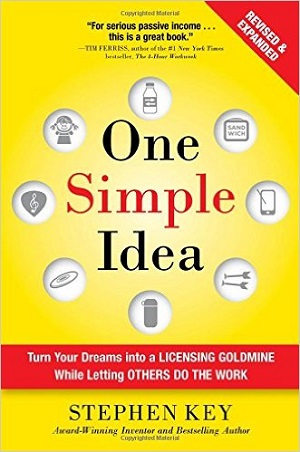 The 10 steps that were partly outlined are completely outlined in a book called One Simple Idea. You can find it on Amazon, and it’s been selling there for over five years. It has also been translated into five different languages (learn more about selling foreign language rights to your books). I call this book your “road map” for pursuing this type of business. I also have a YouTube channel called “inventRightTV”. My partner Andrew Krauss and I produce two YouTube videos every week, and each one is on the 10-step process that you’ve been introduced to today. Last but not least, I also write for three online magazines, on a weekly basis. They are:
The 10 steps that were partly outlined are completely outlined in a book called One Simple Idea. You can find it on Amazon, and it’s been selling there for over five years. It has also been translated into five different languages (learn more about selling foreign language rights to your books). I call this book your “road map” for pursuing this type of business. I also have a YouTube channel called “inventRightTV”. My partner Andrew Krauss and I produce two YouTube videos every week, and each one is on the 10-step process that you’ve been introduced to today. Last but not least, I also write for three online magazines, on a weekly basis. They are: Daniel's Real Fast Result Tip: Passive Income
I agree with all that Stephen has discussed today. I firmly believe that we should all seek out a business model that supports our lifestyle and gives us the kind of time freedom that we need. This particular model is right in the cross-hairs of that goal. That’s one of the reasons why I just love the idea of all of this. So, go out and make it happen!Resources
Stephen's Book - One Simple Idea Google Image Search - https://images.google.com/ Google Patents - https://patents.google.com/ Finding 3D Artists - https://www.fiverr.com/ Selling Foreign Language Rights To Your BooksReal Fast Results Community
If you are diggin’ on this stuff and really love what we’re doing here at Real Fast Results, would you please do me a favor? Head on over to iTunes, and make sure that you subscribe to this show, download it, and rate & review it. That would be an awesome thing. Of course, we also want to know your results. Please share those results with us at http://www.realfastresults.com/results. As always, go make results happen!
Welcome to this edition of the Real Fast Results Podcast! If you are an author, or want to be an author, or even if you have a book or physical product on Amazon, you are going to want to read over what we have for you today. Debbie Drum is a content production expert. Not only has she produced and published many books, but she also takes action when it comes to marketing her business. In this session, Debbie is going to share her secrets on how to get more and better reviews for your products, specifically on Amazon.com. This training will focus on getting book reviews, but the information found herein will not only apply to books. Debbie, thank you for taking the time to be on the show today.
Today's Promise: More Amazon Book Reviews
The big promise for you is to simply get more book reviews because the equation is “More Book Reviews = More Sales”. While there are many ways to go about getting book reviews, there are more effective ways than others, and we are going to be outlining those ways today. You definitely want to keep cracking away and taking action because if you keep at it, you know, that’s what made me where I am today. I never quit. Every single day I wake up doing, doing, doing…failing…succeeding. That’s what it’s all about.A Bit About Debbie
I started internet marketing in 2010 by literally Googling the words, “How to make money online”. It all started from there. The very first week that I started making money was actually with publishing. I was working a full-time job, and I was traveling a lot--in sales. I have a sales background. I was working and publishing a book a week. I loved it so much because that’s where I was seeing real results. And, the sales person, of course, came out and said, “Hey, I’ve got to teach people what I am doing.” So, that’s a little bit about how I got started.The Process of Getting More Book Reviews
Basically, the big picture, and the “Why” behind this is having more reviews is essentially like having an army of people selling your book 24/7, 365 days out of the year with you being hands-off. They never sleep. Reviews stay there forever. The more reviews you have, and obviously the more positive reviews you have, will work in your favor for more people to click that “buy” button. The reason is that we live in a very social world. I don’t have to tell you that. Everything is about, “Well, what are other people saying?” If I’m going to dedicate the next 2 hours to reading a book, or if I’m going to dedicate a day buying a Groupon package, I’m going to see what other people are saying. It’s our job as the product creators, as the marketers, as the authors to get those reviews because it’s not going to happen quick enough naturally. One of the quickest and most effective ways that I have found to get reviews is to look at people who are already reviewing other books in my niche. The thing is that you want to be publishing in niches where there are tons of competitors because that means it’s a market that has buyers. So, don’t be scared if you see other books that have thousands of reviews and thousands of sales because that means you’re on the right path to finding money. What you want to do is go into Amazon and make a list of the top 50 books that compete against your book, or are in the same niche, the same genre, as your book. There are some books that you will find, if you’re in the right niches, that have thousands of reviewers, or hundreds of reviewers even. Those are the people that I have found throughout the past six years of doing this that I call influencers. Those people, they want to share cool things with their friends. They want to be savvy, they want to be “in the know”, and that’s how they want to be seen. A lot of these people will review books, especially the ones in your niche. Sometimes they have Facebook groups where one message can reach 2,000 or 3,000 people at a click. Those are the kind of people that we are finding, and striving to find, inside of Amazon.
people selling your book 24/7, 365 days out of the year with you being hands-off. They never sleep. Reviews stay there forever. The more reviews you have, and obviously the more positive reviews you have, will work in your favor for more people to click that “buy” button. The reason is that we live in a very social world. I don’t have to tell you that. Everything is about, “Well, what are other people saying?” If I’m going to dedicate the next 2 hours to reading a book, or if I’m going to dedicate a day buying a Groupon package, I’m going to see what other people are saying. It’s our job as the product creators, as the marketers, as the authors to get those reviews because it’s not going to happen quick enough naturally. One of the quickest and most effective ways that I have found to get reviews is to look at people who are already reviewing other books in my niche. The thing is that you want to be publishing in niches where there are tons of competitors because that means it’s a market that has buyers. So, don’t be scared if you see other books that have thousands of reviews and thousands of sales because that means you’re on the right path to finding money. What you want to do is go into Amazon and make a list of the top 50 books that compete against your book, or are in the same niche, the same genre, as your book. There are some books that you will find, if you’re in the right niches, that have thousands of reviewers, or hundreds of reviewers even. Those are the people that I have found throughout the past six years of doing this that I call influencers. Those people, they want to share cool things with their friends. They want to be savvy, they want to be “in the know”, and that’s how they want to be seen. A lot of these people will review books, especially the ones in your niche. Sometimes they have Facebook groups where one message can reach 2,000 or 3,000 people at a click. Those are the kind of people that we are finding, and striving to find, inside of Amazon. How to find book reviewers:
- Figure out what books in your niche have a lot of reviews.
- Then, go and identify reviewers of those books. It’s highly likely that if they like a book on a similar topic, or even the same topic, they would want to review your book as well.
- Third, the reviewers themselves are influence centers, or potential influence centers. That’s a very cool thing because if they like your work, and they like your book, then you’ve basically got social proof, and you’ve got a built-in third-party endorsement that’s completely unbiased. These folks are basically grading you on the work itself. You know, they get nothing out of it, essentially. Other than they’re feeding their community, and they want to be seen as somebody that is “in the know”, or is on the cutting edge of whatever that topic is.
Contacting Potential Book Reviewers
 Once you’ve found your book--let’s say this book has 1,000 reviewers. There’s a hyperlink on that number of reviews. Inside of Amazon, you want to click inside of that hyperlink, and it brings you to a page where you can see about 10-15 reviewers per page. Depending on how many reviews they have, there’s page after page of all these reviews. Each individual reviewer has a profile page. You can click on their name to find their profile page. What you will find is that a certain percentage of these people will actually have contact information. So, it’s not 100% of the people, unfortunately for us. Every one of us, as buyers on Amazon, we all have a profile page whether we like it or not. And, it’s up to us to say whether or not we want to show our contact information, meaning our website and/or our email address. After about six years of this, after our research, it has been proven that about 10-15% of the reviewers of a certain book will have contact information on their profile pages. This is an amazing opportunity to contact the specific people that we need to target and contact to review our book. However, it turns out that this is a very manual process. I learned this very quickly. Back in 2012, I was trying to figure out different ways to get reviewers, as opposed to asking my dad and my mom, and asking Aunt Cindy, and asking my best friend. And, I’m glad that I did this because, you as authors, you might be realizing that Amazon is actually taking away reviews because of these connections that they’re finding. You definitely don’t want the same person, like your group of author community, to be reviewing all of your books because that will raise red flags inside of Amazon. A lot of the time, people provide their contact information because they are interested in reviewing other people’s work, or at least there’s a stronger probability that they are. The benefit that they get out of it is sharing cool things, which we have already talked about, and #2 is getting a free book, which a lot of people are after too. There’s a whole business of this, you know, with physical products. People are looking to get free products for reviews. This is very important: As long as you are contacting people and asking for honest reviews, honest feedback, that is staying within Amazon’s terms of service. What you don’t want to do is say, “Hey, can you give me a five-star review?” That’s not going to fly, and a lot of these reviewers are savvy, and they know what’s right and what’s wrong when it comes to this. You definitely do not want to purchase reviews! When you contact people, don’t say that you’ll give them any type of compensation. All they are getting is a free copy of your book. Amazon is trying to create an atmosphere that makes for a wonderful experience for people. They don’t want their buying atmosphere being filled with fake reviews because people will stop trusting their marketplace. That’s something, as you probably can imagine, Amazon takes very seriously. Amazon is even going as far as suing third parties over fake reviews. So, somehow they’re figuring it out. With all of their algorithms they can do it. If you go to Fiverr.com, you’ll see people who are willing and able to review your book for $5. You might be thinking, “Okay. Well, if they’re going to give me an honest review, what does it matter?” It does matter. So, to be really clear: Do Not Buy Reviews. Do Not Ask for Five-Star Reviews. The only thing that’s good to do is ask for honest reviews, free of compensation.
Once you’ve found your book--let’s say this book has 1,000 reviewers. There’s a hyperlink on that number of reviews. Inside of Amazon, you want to click inside of that hyperlink, and it brings you to a page where you can see about 10-15 reviewers per page. Depending on how many reviews they have, there’s page after page of all these reviews. Each individual reviewer has a profile page. You can click on their name to find their profile page. What you will find is that a certain percentage of these people will actually have contact information. So, it’s not 100% of the people, unfortunately for us. Every one of us, as buyers on Amazon, we all have a profile page whether we like it or not. And, it’s up to us to say whether or not we want to show our contact information, meaning our website and/or our email address. After about six years of this, after our research, it has been proven that about 10-15% of the reviewers of a certain book will have contact information on their profile pages. This is an amazing opportunity to contact the specific people that we need to target and contact to review our book. However, it turns out that this is a very manual process. I learned this very quickly. Back in 2012, I was trying to figure out different ways to get reviewers, as opposed to asking my dad and my mom, and asking Aunt Cindy, and asking my best friend. And, I’m glad that I did this because, you as authors, you might be realizing that Amazon is actually taking away reviews because of these connections that they’re finding. You definitely don’t want the same person, like your group of author community, to be reviewing all of your books because that will raise red flags inside of Amazon. A lot of the time, people provide their contact information because they are interested in reviewing other people’s work, or at least there’s a stronger probability that they are. The benefit that they get out of it is sharing cool things, which we have already talked about, and #2 is getting a free book, which a lot of people are after too. There’s a whole business of this, you know, with physical products. People are looking to get free products for reviews. This is very important: As long as you are contacting people and asking for honest reviews, honest feedback, that is staying within Amazon’s terms of service. What you don’t want to do is say, “Hey, can you give me a five-star review?” That’s not going to fly, and a lot of these reviewers are savvy, and they know what’s right and what’s wrong when it comes to this. You definitely do not want to purchase reviews! When you contact people, don’t say that you’ll give them any type of compensation. All they are getting is a free copy of your book. Amazon is trying to create an atmosphere that makes for a wonderful experience for people. They don’t want their buying atmosphere being filled with fake reviews because people will stop trusting their marketplace. That’s something, as you probably can imagine, Amazon takes very seriously. Amazon is even going as far as suing third parties over fake reviews. So, somehow they’re figuring it out. With all of their algorithms they can do it. If you go to Fiverr.com, you’ll see people who are willing and able to review your book for $5. You might be thinking, “Okay. Well, if they’re going to give me an honest review, what does it matter?” It does matter. So, to be really clear: Do Not Buy Reviews. Do Not Ask for Five-Star Reviews. The only thing that’s good to do is ask for honest reviews, free of compensation. Save Your Time and Outsource
When you finally start diving in, it’s like finding a needle in a haystack. We literally wouldn’t have time to do anything like write our books, market our books, market our products, do videos, and all of this other important stuff that we need to do in our business. Marketing would need to be tabled, and that’s not something that we’d want to do. So, this bright idea that I had, going through all of these different reviewers, suddenly came crashing down because it wasn’t realistic for me to do this all day long. To put that information together in a spreadsheet and then make it available for me to quickly contact people. It might take days to actually aggregate this. If you have more time than money, however, it may be worth doing it this way. There’s actually two other ways to go about this though. Another way that you could go about this would be to outsource the work. You could send this project to an outsourcer. For instance, you could go to any outsourcing site like Fiverr.com, Upwork.com, or Guru.com. There are people just waiting for this kind of work. Generally, using the 10-15% rule of thumb, if you’re looking at a book with 1,000 reviewers, then you’ll probably get 100-150 emails out of that. These workers sometimes work as a team, and they sometimes work individually. After a couple of days, a couple of hundred dollars later, you’ll probably get 100 or 150 emails returned to you. It’s a numbers game. So the more you do, the more of an outcome you’re going to get. I know that most authors, most self-publishers, are not really sitting around with a whole team of people waiting to do this kind of thing all day long. There are tons of other things that we need outsourcers for as well. It’s a very slow and tedious process trying to do this manually. You can actually do this yourself based on what you have learned today, but I do have a software service that does this all automatically for you. I do want to be very clear about the fact that you do not have to go and buy this. You’ve been given step-by-step instructions on how to do this by yourself, but if you see the value in this and you have more money than time, I do want you to know about my software.
anything like write our books, market our books, market our products, do videos, and all of this other important stuff that we need to do in our business. Marketing would need to be tabled, and that’s not something that we’d want to do. So, this bright idea that I had, going through all of these different reviewers, suddenly came crashing down because it wasn’t realistic for me to do this all day long. To put that information together in a spreadsheet and then make it available for me to quickly contact people. It might take days to actually aggregate this. If you have more time than money, however, it may be worth doing it this way. There’s actually two other ways to go about this though. Another way that you could go about this would be to outsource the work. You could send this project to an outsourcer. For instance, you could go to any outsourcing site like Fiverr.com, Upwork.com, or Guru.com. There are people just waiting for this kind of work. Generally, using the 10-15% rule of thumb, if you’re looking at a book with 1,000 reviewers, then you’ll probably get 100-150 emails out of that. These workers sometimes work as a team, and they sometimes work individually. After a couple of days, a couple of hundred dollars later, you’ll probably get 100 or 150 emails returned to you. It’s a numbers game. So the more you do, the more of an outcome you’re going to get. I know that most authors, most self-publishers, are not really sitting around with a whole team of people waiting to do this kind of thing all day long. There are tons of other things that we need outsourcers for as well. It’s a very slow and tedious process trying to do this manually. You can actually do this yourself based on what you have learned today, but I do have a software service that does this all automatically for you. I do want to be very clear about the fact that you do not have to go and buy this. You’ve been given step-by-step instructions on how to do this by yourself, but if you see the value in this and you have more money than time, I do want you to know about my software. Book Review Targeter Software
Basically, it does exactly what the manual process does. So, you first would start out finding your related books, right? Then, instead of you or a team member going through the pages and pages of reviewers, to find those “needles in a haystack”, the software goes through all of those pages for you. It finds the ones that have contact information (email and/or website), and then kicks out all of the other ones that don’t. It’s taking a very manual process and automating it. Once you have extracted these email addresses, the software actually allows you to mail merge with an application within Gmail to essentially send out requests for folks to review your book. So, it automates a large part of it and certainly makes it go a lot faster. This particular piece of software has gotten a lot of reviews itself, and people love it because it does save so much time. At the bottom of these show notes, there’s a link that you can click on to learn more about this software. It’s great to get those email addresses, of course, so that you can start contacting people. But, I want you to look at it from the point of view that these one-to-one connections that you are making with people are so effective for not only now, but for your whole entire career. Just one connection can change your life. Even if you’re only finding 10 emails, or 20 emails, these might seem like small numbers. But those are 20 additional people that you would have never found without the software. Authors who are using this are making these connections and meeting people who will give them video testimonials on Amazon, which are amazing! Then, on your next book, you can say, “Hey Carol! You reviewed my last book. Can you review this book, or this product?” That’s what you’re creating; so it’s much bigger than just an email address. This business is like every other business. It is a people business. It is a relationship business. This idea that you can find brand new people who already like your work extensively. They like it enough to actually give you a good review. They are golden. That’s a really, really important person that can potentially help you in so many other ways later on.Connect With Debbie
I normally hang out at DebbieDrum.com. From there, you can get to my YouTube channel, or Facebook. I’m pretty much everywhere.Daniel's Real Fast Results Tips: Book Reviews
- Do the research - Look for people that are already reviewing books in your niche.
- When you are emailing potential book reviewers, make sure they know you are not compensating them. The only item they are getting is a free book for an honest review. Do not ask for a 5 star review. You just want an honest one.
- If you don't have the time, then outsource!
Resources
Replay Training Demoing Debbies Software: Click here ==> https://debbiedrum.leadpages.co/daniel-hall-getting-book-reviews/ Debbie's Software: The Book Review Targeter Outsourcing Sites: Fiverr.com Upwork.com Guru.com.Real Fast Results Community
If you are diggin’ on this stuff and really love what we’re doing here at Real Fast Results, would you please do me a favor? Head on over to iTunes, and make sure that you subscribe to this show, download it, and rate & review it. That would be an awesome thing. Of course, we also want to know your results. Please share those results with us at http://www.realfastresults.com/results. As always, go make results happen! Welcome to another episode of the Real Fast Results podcast! This is a very special episode that you’re going to love. You are going to learn how to make a post on your blog go viral! The coolest part is that, potentially, you can actually do this with the blog that you have right now. You know, almost all of us have blogs and most of these are dormant blogs. You probably don’t do much with yours, and neither does the rest of the world. Of course, this isn’t helping you or your business. Mr. Rohan Dhawan is an absolute expert when it comes to taking a blog and making it go viral, or more specifically, the posts that you purposefully engineer to do so. He is going to share his secrets with you during this presentation. So, let’s get started… Viral marketing means creating any piece of content (i.e. video, blog posts, etc.) and having it get shared by large amounts of people multiple times at a rapid pace. The funny cat video that you saw on the Internet, that’s an example of viral marketing. Viral marketing can help marketers get a high amount of traffic that they can use to gather leads, make sales, or do just about anything they want. The best part about viral marketing is that it’s very simple to implement. Another advantage is that not many people are using it right now. In today’s world, everybody is so busy. They do not have time. You really need to grab people’s attention and viral posts do that job for you.
Welcome to another episode of the Real Fast Results podcast! This is a very special episode that you’re going to love. You are going to learn how to make a post on your blog go viral! The coolest part is that, potentially, you can actually do this with the blog that you have right now. You know, almost all of us have blogs and most of these are dormant blogs. You probably don’t do much with yours, and neither does the rest of the world. Of course, this isn’t helping you or your business. Mr. Rohan Dhawan is an absolute expert when it comes to taking a blog and making it go viral, or more specifically, the posts that you purposefully engineer to do so. He is going to share his secrets with you during this presentation. So, let’s get started… Viral marketing means creating any piece of content (i.e. video, blog posts, etc.) and having it get shared by large amounts of people multiple times at a rapid pace. The funny cat video that you saw on the Internet, that’s an example of viral marketing. Viral marketing can help marketers get a high amount of traffic that they can use to gather leads, make sales, or do just about anything they want. The best part about viral marketing is that it’s very simple to implement. Another advantage is that not many people are using it right now. In today’s world, everybody is so busy. They do not have time. You really need to grab people’s attention and viral posts do that job for you. 5 Tips To Make Your Blog Posts Go Viral
I will be sharing my personal “Top 5” tips that I personally use to make my blogs go viral.
- The first step is to be creative with your posts by using list-based articles, quizzes, and videos. I will be going into much more detail about these later.
- The second step is using catchy titles as click baits.
- The third step is using Google Trends and YouTube Trends Dashboard to get viral content from other people and using it for your own.
- The fourth step is making use of social media, especially Reddit, Facebook, and Pinterest. I just love these platforms. They’re amazing, and have really huge potential to make your content go viral.
- The fifth step is enjoying that viral traffic and actually making money with it by putting AdSense ads or using Taboola/Outbrain ads. These are a new set of ads that were recently introduced. You can use these ads to your advantage in order to make more profit. I have personally done that, and I want to help you earn money with viral posts.
Rohan's Successful Viral Marketing Campaigns
One of my niche websites that I started in 2014, used to receive about 60 visitors every day. After I implemented these 5 steps, my blog went from 60 visitors per day to 49,900 visitors within 24 hours. I have that case study up on my blog. Not only that, Dr. Scott Brown of WorryFreeWealth.com is one of my greatest students. He has implemented these steps so well that he was able to receive $0.01 per post engagement on Facebook ads when he promoted his viral posts. Because of that, he was able to drive a lot of traffic to his website. I wasn’t prepared for the 49,900 visitors to my website. My server actually crashed. I received a notification from HostGator saying that, “You really need to upgrade your server or we will have to suspend your account.” One thing is important, you have to be prepared for increased traffic to your website.Step 1 - Be Creative With Your Blog Posts
The first step is being creative with your blog posts by using list-based articles, quizzes, and videos. List-based articles were introduced by BuzzFeed. If you go to their website right now, you can see the 10 most replicated articles by ViralNova, which ended up making millions of dollars. ViralNova was started by one guy, and within a few years, he was making millions of dollars with his website. Viral posts contain headings that explain the article in detail. This leaves the readers more entertained while providing the reader with valuable information. When you Google something, you usually find 12 articles from their keywords, detailed in 1,500 words. But, that is boring. In today’s world, you need to work hard to grab people’s attention, and list-based articles do that job. You can also use quizzes and videos. If you find a video that is shared a lot on YouTube, you can embed that video on your own blog and write some details about it. If that video is related to your niche, you can promote it and let it go viral since people have already showed interest in that video. If you share that video on your blog, even more people will look at your blog.Step 2 - Use Catchy Titles
The second step is using catchy titles. The first impression that people get of your post comes from your title. Titles are very, very important. Your title should make the person viewing it curious. You can make the title a question or use list-based posts in order to make the titles attractive. For example, if there is a video that was trending on YouTube, and I posted it on my blog I can make the title something like “Watch! I cannot believe this happened!” I use a title like that to pique the curiosity in the mind of the user. If your post is a list-based post, you can use a title like “Top Paid Ads to Market on Social Media” or “10 Things I Did to Get 3,000 leads in 4 days”. Titles like that make a person click on that particular link, which is our initial goal. Creating the title for your post is something you should spend a lot of time on. It’s psychology. The best part of this is that these titles can be used in any niche. You do not have to be in a particular niche for this to work. Scott, one of my students, used this in the finance and investment niche. I did it in the education niche. People can do it in any subject.Step 3 - Find Viral Content
 The third step is finding the viral content. In order to find viral content, you can use some free tools that are available on Google and YouTube. The first tool is Google Trends. Google Trends allows you to find terms that are being searched the most in various countries and categories. You can sort the results based on country. Such as the United States, the United Kingdom, or India, and based on various categories, such as “business” or “entertainment”. You can instantly find viral content for whatever niche you are in. Finding the terms that are being searched the most allows you to find the best ideas for your next post. Keep in mind that you use these viral posts for inspiration. You don’t want to actually copy every word of the viral post because Google will not rank you on their website. Just use these posts for inspiration. Using these posts can do wonders. People have already shown interest and they will keep showing interest until the trend is over. The second tool is YouTube Trends. With this tool, you can find the videos that are either being shared the most or being viewed the most on YouTube according to country, age, and gender. There is the option to choose niche preferences and find a video that suits your niche. Find the videos and embed them on your blog by copying and paste the web address. It is a very simple process. Make sure that you explain that video in the text below it so that people know what’s going on and they actually share that video. What you are doing is curating content that is already proven to be viral, and adding to it additional explanations and your own content and insights. If you’re using the words and thoughts of others, it is always a good practice to give them credit. It’s what news websites do every day. They take a piece of content and creating different forms of it. People are viewing it, and these websites are getting millions of views. Why can’t you get a piece of this action and get more visitors to your website? Why let the big guys take all of the action when you can do it as well. It’s essential that you approach all of this with integrity. Link back to where you got the post and give proper credit. I also recommend that you have a contact form so that those people who actually own that content can contact you. That way, if there is a problem, you can just remove the content from your blog. If you write them back, there will not be a problem. But, usually, they want their content to go viral and they want it to be shared. Everybody wants publicity.
The third step is finding the viral content. In order to find viral content, you can use some free tools that are available on Google and YouTube. The first tool is Google Trends. Google Trends allows you to find terms that are being searched the most in various countries and categories. You can sort the results based on country. Such as the United States, the United Kingdom, or India, and based on various categories, such as “business” or “entertainment”. You can instantly find viral content for whatever niche you are in. Finding the terms that are being searched the most allows you to find the best ideas for your next post. Keep in mind that you use these viral posts for inspiration. You don’t want to actually copy every word of the viral post because Google will not rank you on their website. Just use these posts for inspiration. Using these posts can do wonders. People have already shown interest and they will keep showing interest until the trend is over. The second tool is YouTube Trends. With this tool, you can find the videos that are either being shared the most or being viewed the most on YouTube according to country, age, and gender. There is the option to choose niche preferences and find a video that suits your niche. Find the videos and embed them on your blog by copying and paste the web address. It is a very simple process. Make sure that you explain that video in the text below it so that people know what’s going on and they actually share that video. What you are doing is curating content that is already proven to be viral, and adding to it additional explanations and your own content and insights. If you’re using the words and thoughts of others, it is always a good practice to give them credit. It’s what news websites do every day. They take a piece of content and creating different forms of it. People are viewing it, and these websites are getting millions of views. Why can’t you get a piece of this action and get more visitors to your website? Why let the big guys take all of the action when you can do it as well. It’s essential that you approach all of this with integrity. Link back to where you got the post and give proper credit. I also recommend that you have a contact form so that those people who actually own that content can contact you. That way, if there is a problem, you can just remove the content from your blog. If you write them back, there will not be a problem. But, usually, they want their content to go viral and they want it to be shared. Everybody wants publicity. Step 4 - Use Social Media To Share Your Content
The fourth step is making use of social media to share this content. The top sites that I love using to share my viral content are Facebook, Reddit, and Pinterest. These websites have the highest potential to make anything go viral instantly. But, it really depends upon your goal. For example, if your niche has more of a female audience, then you should focus more on Pinterest because a majority of its users are female. If you have a more generalized niche, you can post it on Facebook and Reddit. I have a free course that I’m offering in which I teach people how they can more than 1,000 followers in seven days. You can check that out as well. Facebook is very simple. Once you have a post ready, you have to just post on your fan page or share it on your personal profile, link it back to your friends, and you can also share it on blogs. These are three methods that you can use, unless they already have a post that’s performing very well. Another method you can use that you don’t have to pay for is use Google’s ad system to send it out to a lot more people. If you already know that your post is performing well, then it will perform well for a mass audience when they see it. This is how your posts will go viral, this is how they will get shared, and this is how you will eventually achieve your goals. Now comes the Reddit part. Reddit is a great website, and if you’re lucky enough to get ranked on the first page, then it is likely that website will just crush it within an hour or two. That’s the potential of Reddit. That’s the amount of traffic that it can bring. But, it’s really tough to get ranked on the first page. However, you don’t even have to get ranked on the first page to make Reddit work for you. You can use Reddit’s search tool to find sub-reddits that are related to your niche. For example, if I’m into sports, I can simply type in “sports” on Reddit, and I can find various sub-reddits. I can then click on those sub-reddits and add my link and share it across the community. If the people in that community find it interesting, they will click on the link and visit your website. Last is Pinterest. Pinterest is great. All you have to do is create informative pins and share them on Pinterest. To create such pins, you can use free software like Canva.com. It’s a free design tool, and I highly recommend it. You can also hire a graphic designer, but I highly recommend just using the free method if you’re just starting out. I’m sure Pinterest has good potential to make your pin go viral and drive more traffic to your blog. You should explore other options as well. It really depends on where your target audience is present. You have to do your research on your target audience. You have to do your homework and find out where your audience is present online. What I like to do is create an image of my top customer, and I give that person a random name and then assign some characteristics to it, such as where that person would spend most of his/her time. Then, I focus on them and I talk to that person accordingly. Once I have created that image, I can target multiple people similar to that person. The fourth step is all about finding the right platform and marketing your blog post there.
viral content are Facebook, Reddit, and Pinterest. These websites have the highest potential to make anything go viral instantly. But, it really depends upon your goal. For example, if your niche has more of a female audience, then you should focus more on Pinterest because a majority of its users are female. If you have a more generalized niche, you can post it on Facebook and Reddit. I have a free course that I’m offering in which I teach people how they can more than 1,000 followers in seven days. You can check that out as well. Facebook is very simple. Once you have a post ready, you have to just post on your fan page or share it on your personal profile, link it back to your friends, and you can also share it on blogs. These are three methods that you can use, unless they already have a post that’s performing very well. Another method you can use that you don’t have to pay for is use Google’s ad system to send it out to a lot more people. If you already know that your post is performing well, then it will perform well for a mass audience when they see it. This is how your posts will go viral, this is how they will get shared, and this is how you will eventually achieve your goals. Now comes the Reddit part. Reddit is a great website, and if you’re lucky enough to get ranked on the first page, then it is likely that website will just crush it within an hour or two. That’s the potential of Reddit. That’s the amount of traffic that it can bring. But, it’s really tough to get ranked on the first page. However, you don’t even have to get ranked on the first page to make Reddit work for you. You can use Reddit’s search tool to find sub-reddits that are related to your niche. For example, if I’m into sports, I can simply type in “sports” on Reddit, and I can find various sub-reddits. I can then click on those sub-reddits and add my link and share it across the community. If the people in that community find it interesting, they will click on the link and visit your website. Last is Pinterest. Pinterest is great. All you have to do is create informative pins and share them on Pinterest. To create such pins, you can use free software like Canva.com. It’s a free design tool, and I highly recommend it. You can also hire a graphic designer, but I highly recommend just using the free method if you’re just starting out. I’m sure Pinterest has good potential to make your pin go viral and drive more traffic to your blog. You should explore other options as well. It really depends on where your target audience is present. You have to do your research on your target audience. You have to do your homework and find out where your audience is present online. What I like to do is create an image of my top customer, and I give that person a random name and then assign some characteristics to it, such as where that person would spend most of his/her time. Then, I focus on them and I talk to that person accordingly. Once I have created that image, I can target multiple people similar to that person. The fourth step is all about finding the right platform and marketing your blog post there. Step 5 - Making Money From Viral Traffic
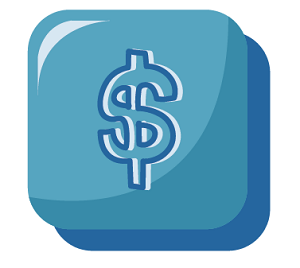 The fifth step is taking the viral traffic that you get and making money off of it by using AdSense or Taboola. I believe AdSense is the best platform to make money off of these viral websites because AdSense is ready to show ads according to what your website or blog is about. You don’t have to go search for affiliate products or something like that. AdSense does that job for you. Google takes everything into consideration and shows people the ad that they will definitely click on. So, if you have 100,000 people visiting your website, your earnings are probably going to be massive. You also have the option of using a new ad system that’s called Taboola, or a similar system that is called Outbrain. These systems show viral posts on your website. For example, you can add to your blog posts the code of Taboola or Outbrain. The blog posts are constructed in a way that people will want to click on them. Every time someone clicks on these posts, you make money. People can integrate it on their websites, or anywhere they want. It is just that simple. The only downside to this is that you have to have at least 100,000 views to your site per month in order to be able to access these platforms. These platforms want high-quality traffic on their customers’ websites. They don’t want just any random person to integrate their system onto their website by selling traffic. They want quality traffic, and this is something that you can consider once you are on a more advanced level. I highly recommend that when you’re starting out, use AdSense. Then, you can use Taboola and Outbrain. For example, if I’m reading an article about how to make money online, I would automatically see a post by Taboola or Outbrain telling me, “These are the top 5 ways to make money instantly.” This is how these platforms drive traffic to other people’s websites, and every time somebody clicks on those links, you get paid. If you have a course or another type of product, you can also have a lead magnet or something similar installed on your website to generate leads or to make sales. It all depends on your goals, and viral posts help you to achieve these goals.
The fifth step is taking the viral traffic that you get and making money off of it by using AdSense or Taboola. I believe AdSense is the best platform to make money off of these viral websites because AdSense is ready to show ads according to what your website or blog is about. You don’t have to go search for affiliate products or something like that. AdSense does that job for you. Google takes everything into consideration and shows people the ad that they will definitely click on. So, if you have 100,000 people visiting your website, your earnings are probably going to be massive. You also have the option of using a new ad system that’s called Taboola, or a similar system that is called Outbrain. These systems show viral posts on your website. For example, you can add to your blog posts the code of Taboola or Outbrain. The blog posts are constructed in a way that people will want to click on them. Every time someone clicks on these posts, you make money. People can integrate it on their websites, or anywhere they want. It is just that simple. The only downside to this is that you have to have at least 100,000 views to your site per month in order to be able to access these platforms. These platforms want high-quality traffic on their customers’ websites. They don’t want just any random person to integrate their system onto their website by selling traffic. They want quality traffic, and this is something that you can consider once you are on a more advanced level. I highly recommend that when you’re starting out, use AdSense. Then, you can use Taboola and Outbrain. For example, if I’m reading an article about how to make money online, I would automatically see a post by Taboola or Outbrain telling me, “These are the top 5 ways to make money instantly.” This is how these platforms drive traffic to other people’s websites, and every time somebody clicks on those links, you get paid. If you have a course or another type of product, you can also have a lead magnet or something similar installed on your website to generate leads or to make sales. It all depends on your goals, and viral posts help you to achieve these goals. Recap of Steps To Make Your Blog Posts Go Viral
- The first step is being creative with your blog posts by using list-based articles, quizzes, and videos. Use list-based titles like BuzzFeed and ViralNova.
- The second step is to use creative titles as click baits. The first impression of your blog post is based on the title. The title should be as attractive as possible. An example is “Ten Things I Did to Get 3,000 Leads in 4 Days”.
- The third step using Google Trends and YouTube Trends to get viral content. You can get viral content that’s being viewed the most and use that content to cause your blog post to go viral on the Internet.
- The fourth step is making use of social media. Find your target audience. Find where your target audience is present online. Once you find your audience, target them on the websites. Start by using free methods first, and once you are successful on them, you can use the paid systems available to you. Reddit, Facebook, and Pinterest have their own ad systems.
- Fifth, enjoy the increased traffic to your blog and make money by practically doing nothing. You can use AdSense, Taboola, or have your lead magnet to sell your products. Do whatever you want to make money from the huge amount of traffic that you obtain.
Connect With Rohan
There is a viral marketing course in which I teach people, step-by-step, how I get 100,000 visitors every month to my website. This course is available at Udemy, and I’m offering that course at a special discount exclusively to the Real Fast Results subscribers. You can take advantage of this by clicking on the link available within the “Resources” section.Daniel's Real Fast Results Tips: Viral Blog Posts
Resources
Rohan's Udemy Course: Viral Marketing - How I Get 100,000 Views Monthly On My Site Dr. Scott Brown Blog: WorryFreeWealth.com List Based Article Sites: BuzzFeed ViralNova Free Viral Content Tools: Google Trends YouTube Trends Top Social Media Sites To Share Viral Content: Pinterest Facebook Reddit Free Design Tool: Canva.com Ad Sites: AdSense Taboola OutbrainReal Fast Results Community
If you are diggin’ on this stuff and really love what we’re doing here at Real Fast Results, would you please do me a favor? Head on over to iTunes, and make sure that you subscribe to this show, download it, and rate & review it. That would be an awesome thing. Of course, we also want to know your results. Please share those results with us at http://www.realfastresults.com/results. As always, go make results happen!Why You Should Sell Foreign Language Rights to Your Books
Selling foreign rights to your books really builds your credibility. Have you ever noticed that when the big publishers promote a book, they’ll translate it into 20 languages? Or sell it in 30 countries? When you see this you think, “Well, a big publisher can do that. I can’t do that.” But, now a person who is self-published can do it. If they have a good book they can sell it all around the world. I’ve sold my book Being the Strong Man a Woman Wants: Timeless Wisdom on Being a Man, to publishers in 24 countries in Europe, Asia, Latin America, and Africa. The first thing is you have to ask yourself, is your book right for a foreign rights sale? At first, I didn’t think my book was. I really thought it was for men in the United States and Canada, a North American thing. But ask, “Does your book appeal to human nature?” If so, you probably can sell foreign rights to your book. The next thing, in the past publishers went to foreign rights fairs in places like Frankfurt and London (and those fairs still exist). For big publishers that’s great. But now, with email, you can also reach out to those publishers. So, the first step is, once you decide you want to sell foreign rights to your book, develop a really exciting email describing your book. You can include a link to a television interview or reviews of your book, and of course, a summary and why you think it appeals to a wide market. Then, get a list of foreign rights agents in countries around the world. There are literary agents that specialize in selling books from other countries to publishers in their own country. So, all you’ve got to do is Google “foreign rights agents”, and those lists will come up. Then, of course, send out the email, and one of the beauties is, just think, in the past, if you did this you would have to mail a copy of your book to each of the foreign agents. That would cost you a fortune. Now, you send an email, and the ones that respond and are interested in seeing your book are the ones you spend the postage on to send them the book. Then, agents that are interested in representing you will sell and market the book. They know the publishers in their market. That’s their business. When they make a deal, they negotiate a contract, and it’s a great thing.
publishers promote a book, they’ll translate it into 20 languages? Or sell it in 30 countries? When you see this you think, “Well, a big publisher can do that. I can’t do that.” But, now a person who is self-published can do it. If they have a good book they can sell it all around the world. I’ve sold my book Being the Strong Man a Woman Wants: Timeless Wisdom on Being a Man, to publishers in 24 countries in Europe, Asia, Latin America, and Africa. The first thing is you have to ask yourself, is your book right for a foreign rights sale? At first, I didn’t think my book was. I really thought it was for men in the United States and Canada, a North American thing. But ask, “Does your book appeal to human nature?” If so, you probably can sell foreign rights to your book. The next thing, in the past publishers went to foreign rights fairs in places like Frankfurt and London (and those fairs still exist). For big publishers that’s great. But now, with email, you can also reach out to those publishers. So, the first step is, once you decide you want to sell foreign rights to your book, develop a really exciting email describing your book. You can include a link to a television interview or reviews of your book, and of course, a summary and why you think it appeals to a wide market. Then, get a list of foreign rights agents in countries around the world. There are literary agents that specialize in selling books from other countries to publishers in their own country. So, all you’ve got to do is Google “foreign rights agents”, and those lists will come up. Then, of course, send out the email, and one of the beauties is, just think, in the past, if you did this you would have to mail a copy of your book to each of the foreign agents. That would cost you a fortune. Now, you send an email, and the ones that respond and are interested in seeing your book are the ones you spend the postage on to send them the book. Then, agents that are interested in representing you will sell and market the book. They know the publishers in their market. That’s their business. When they make a deal, they negotiate a contract, and it’s a great thing. Making Money Selling Foreign Rights to Your Book
Can you make a lot of money selling foreign rights to your book? If you’ve got a big book, yes. But, generally, you don’t make a lot of money, you might get a penny. Of course, it depends on the size of the market, and it depends on the wealth of the country. A wealthy country’s publishers pay more than those in a small country. I can tell you, the advances I made ranged from a few hundred dollars from India to several thousands of dollars from more-wealthier countries where they charge more for books, such as countries in Europe or some countries in Asia. It all adds up. For the amount of time you put into it, it’s a deal. I mean, you’ve written the book already. You don’t have to write a new book. This is just extra money. And, it’s not just for the money, but also for the credibility it gives you. When you say, “My books have been published in 24 countries,” that gets people to pay attention. It must be a book worth reading. So, it really helps. It can give you a lot of credibility right here in the United States. Most deals are the traditional publishing deal. There’s an advance on royalties, and then once the book earns back that advance, the publisher then send you royalty payments. But, you know what? Most people say just take the money and run. I’ve had some publishers to do that, and with other publishers, you’ve really got to chase them and keep asking them for royalty statements. They just think they’ve paid you the advance; they’ll send you the 10, 3 copies. You really have to chase them to get royalty sales statements, and then there are additional royalties to be paid. So, just take the money and run. No, I do. I always follow up. It’s just been my experience that a lot of these publishers, if I don’t follow up and ask them, to send me a report on sales like you’re required to do in a contract, it doesn’t happen. Like, how long does it take to send an email? If you can get additional payments by following up with them, that’s great. But, what is hard about it is that they’re on the other side of the world and your ability to force them to send a sales report is limited. What are you going to do? Hire a lawyer? Hire an accountant to go audit them? It can be a challenge. But, you did get an advance upfront, and it gives you a lot more credibility in selling your book than if you had sold it in just the United States and Canada. For a single title author, it really depends on the country you are selling to. From India, I got a few hundred dollars. But, in richer countries, like in Europe where they pay more for books you can get a few thousand dollars.Step by Step - How to Sell Foreign Language Rights to Your Books
Step 1 - Is my book suitable for foreign rights sales?
 The first step is to look at your book and think, “Is it suitable for foreign rights sales?” If it’s something that you think, “Well, this will only appeal to Americans,” maybe it’s not going to sell in China. However, if you look at it and it’s something that appeals to human nature, it might sell to a broader market. For example, my book is about realizing that men in this generation weren’t really taught how to be men. There’s a lot of confusion, and we hear all of these different messages. Men weren’t taught by their fathers and other older male role models how to be a man. That’s really what my book is about, being a man in the way men used to be taught. I thought this is really just a North American situation, like you see on the sitcoms on TV. It doesn’t really apply to all these traditional countries where men may still have their traditional roles. But, I tried it anyway, and there was a lot of interest. The first offers I got were from Mexico and Poland. Then I got an offer from a publisher in Brazil, and that was fascinating because isn’t Brazil where ‘machismo’ originated? So, I thought, “Well, you know what? Let’s just try.” And, I approached these agents in different countries. I guess what I realized was that cultures may be different, but human nature is the same. So, if you think it’s something that would appeal to people in other countries, definitely try it. It’s worth the effort. In the old days, publishers went to book fairs, and they still do, and for big publishers, that’s great. But, now with the Internet and email, you can just sit at home and send out 20, 30, 50 emails to foreign rights agents. That doesn’t cost you anything, and you can do it all through email. And then see if there is interest. Are agents interested in your book and asking for you to send them a copy? The cost is nothing. You can just send the email out and your only cost comes when they say, “Yes, send us your book. We want to look at it.” There’s no flying to Frankfurt, no paying for hotels. You’re saving so much money. Give it a try. If you’ve written something that would appeal to only people in the United States, it might not be right for foreign sales. If you had a book of poetry, it might not sell in various countries. Also possibly picture books or coffee table books might not be right for this. But, it really doesn’t hurt to try. Now, just being able to do it all with the Internet, there are no barriers. There’s no “Well, I’ve got to travel to Frankfurt. I’ve got to stay in a hotel.” That’s like thousands of dollars. It’s not worth it, but if you do it yourself from home, it’s amazing. Give it a try and see what the response is.
The first step is to look at your book and think, “Is it suitable for foreign rights sales?” If it’s something that you think, “Well, this will only appeal to Americans,” maybe it’s not going to sell in China. However, if you look at it and it’s something that appeals to human nature, it might sell to a broader market. For example, my book is about realizing that men in this generation weren’t really taught how to be men. There’s a lot of confusion, and we hear all of these different messages. Men weren’t taught by their fathers and other older male role models how to be a man. That’s really what my book is about, being a man in the way men used to be taught. I thought this is really just a North American situation, like you see on the sitcoms on TV. It doesn’t really apply to all these traditional countries where men may still have their traditional roles. But, I tried it anyway, and there was a lot of interest. The first offers I got were from Mexico and Poland. Then I got an offer from a publisher in Brazil, and that was fascinating because isn’t Brazil where ‘machismo’ originated? So, I thought, “Well, you know what? Let’s just try.” And, I approached these agents in different countries. I guess what I realized was that cultures may be different, but human nature is the same. So, if you think it’s something that would appeal to people in other countries, definitely try it. It’s worth the effort. In the old days, publishers went to book fairs, and they still do, and for big publishers, that’s great. But, now with the Internet and email, you can just sit at home and send out 20, 30, 50 emails to foreign rights agents. That doesn’t cost you anything, and you can do it all through email. And then see if there is interest. Are agents interested in your book and asking for you to send them a copy? The cost is nothing. You can just send the email out and your only cost comes when they say, “Yes, send us your book. We want to look at it.” There’s no flying to Frankfurt, no paying for hotels. You’re saving so much money. Give it a try. If you’ve written something that would appeal to only people in the United States, it might not be right for foreign sales. If you had a book of poetry, it might not sell in various countries. Also possibly picture books or coffee table books might not be right for this. But, it really doesn’t hurt to try. Now, just being able to do it all with the Internet, there are no barriers. There’s no “Well, I’ve got to travel to Frankfurt. I’ve got to stay in a hotel.” That’s like thousands of dollars. It’s not worth it, but if you do it yourself from home, it’s amazing. Give it a try and see what the response is. Step 2 - Write an Exciting Email About Your Book
The second step is to develop a really exciting email about your book. Give your book a summary, and you can include links to reviews and links to television reviews you have done. If you’ve sold rights in other countries, absolutely include that in the email because that gives it credibility. Just sell them the book. Just tell them why this book is a good book, how it really benefits people, and that it’s gotten a lot of really good feedback. Just sell it like you were talking to a person one-on-one, trying to convince them to buy your book. Just tell them how great it is and why you think it would be right for their market, and anything else that you think would be relevant. Then, if you think about it, you can send in an email more information than just explaining your book at a booth, at a fair. You can link to media coverage, link to television coverage, or a radio interview. Basically, you’re writing an email that is, in essence, a sales letter, and you're basically making the case that your book is really good, has a lot of potential, and is already being recognized with reviews, or any media interviews that you’ve done, or even sales figures in your current country. Anything to make them say, “Hey, I need to look at this book.” If you’ve already sold foreign rights in other countries, that also gets their attention and tells them that it’s not just stuff that appeals to a North American market. If you have good reviews on Amazon, include those reader reviews. Include anything that makes the book look interesting. They’ll say to you, “Yeah, okay. Send us a copy of the book.” They’re not committing yet; they’re saying, “Okay, you’ve got our interest, now let’s see your book.” The book is what has to sell, and it’s got to be a good book.
include links to reviews and links to television reviews you have done. If you’ve sold rights in other countries, absolutely include that in the email because that gives it credibility. Just sell them the book. Just tell them why this book is a good book, how it really benefits people, and that it’s gotten a lot of really good feedback. Just sell it like you were talking to a person one-on-one, trying to convince them to buy your book. Just tell them how great it is and why you think it would be right for their market, and anything else that you think would be relevant. Then, if you think about it, you can send in an email more information than just explaining your book at a booth, at a fair. You can link to media coverage, link to television coverage, or a radio interview. Basically, you’re writing an email that is, in essence, a sales letter, and you're basically making the case that your book is really good, has a lot of potential, and is already being recognized with reviews, or any media interviews that you’ve done, or even sales figures in your current country. Anything to make them say, “Hey, I need to look at this book.” If you’ve already sold foreign rights in other countries, that also gets their attention and tells them that it’s not just stuff that appeals to a North American market. If you have good reviews on Amazon, include those reader reviews. Include anything that makes the book look interesting. They’ll say to you, “Yeah, okay. Send us a copy of the book.” They’re not committing yet; they’re saying, “Okay, you’ve got our interest, now let’s see your book.” The book is what has to sell, and it’s got to be a good book. Step 3 - Find a List of Foreign Rights Agents
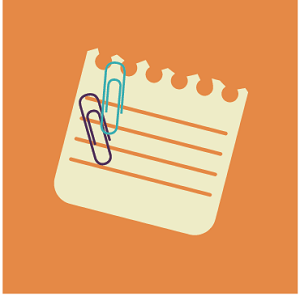 The third step is, where do you get a list of foreign rights agents? If you just Google “foreign rights agents”, what will come up is the big publishers. They already have arrangements with foreign rights agents, and on their website, they’ll have a page of all of the foreign rights agents. So, when you Google “foreign rights agents,” those are all the agents that will come up, from big publishers and big literary agencies. They include their email address on their site. Just click on their email, and send them your email, which includes all this exciting news about your book, and offer to send them a copy of your book. And then, wait for a response.
The third step is, where do you get a list of foreign rights agents? If you just Google “foreign rights agents”, what will come up is the big publishers. They already have arrangements with foreign rights agents, and on their website, they’ll have a page of all of the foreign rights agents. So, when you Google “foreign rights agents,” those are all the agents that will come up, from big publishers and big literary agencies. They include their email address on their site. Just click on their email, and send them your email, which includes all this exciting news about your book, and offer to send them a copy of your book. And then, wait for a response. Note from Daniel: After this episode was posted I was talking to my long time friend and frequent joint venture partner John Kremer and he told me that he had put together a resource with a nice database of foreign language rights agents and it was only $6. Here's the information that appears on John's website: Literary, Subsidiary Rights, and Foreign Rights Agents — This mini-guide includes more than 1,425 literary agents, including 325+ agents that sell foreign rights, 400 that have sold a first novel, and another 50 or so that handle subsidiary rights sales. This mini-guide also includes a sample foreign rights book contract. Ebook download, $6.00. You can >>> grab it by clicking here <<<Again, you can send like 100 emails, and it doesn’t cost you anything. Just imagine if you had to pack 100 copies of your book in envelopes and mail them? It would be a few hundred dollars right there. This way, you send out 100 emails for free, and then you’re narrowing the interest. The ones that are interested will write back to you, and then you can send them a copy of the book. You might be thinking, "Can’t I just offer to send these foreign rights agents a PDF?" Actually, a lot of the agents will ask for a PDF because then they can just forward it to publishers. I’ve had people write to me with this question, “When I send a PDF, am I losing control of the book?” For example, a person sends it to a friend of theirs, “Oh, you should read this book,” and then that person sends it to 100 of their friends. That’s my concern, and other authors have that concern also. I mean, if you’re comfortable with it, you could send a PDF, and then you don’t have any postage cost. My policy is that I’ll send you as many hard copies of the book as you need.
Step 4 - Receiving an Offer
The fourth step is, the agent will approach different publishers, and if they get an offer from a publisher, they’ll send it to you. Usually, what you should look at is the number of copies they’re going to print, the retail price in their market, and the royalty rate. Often, because they’re going to translate it, there’s a cost element. In the United States, Canada, the royalty rate might be 10%, but because we have to pay for the cost of translation, usually the royalty rate is like 6%-8%. It just depends. Figure out the total number of copies from the first printing, the royalty rate on the retail price, and figure out what would be the total royalties for that first printing. It’s reasonable to ask for the royalty on the first printing as an advance. Just run the figures, and that way you don’t have to pursue them for royalty payments. If they do a second printing, they’ll have to pay you royalties again. Also, make sure that the copyright is in your name, and just review the contract. One thing that you have to include in the contract is that they have to publish the book within 12 months or 18 months, and if they don’t, the contract is automatically cancelled. Because that happens sometimes. The publisher will buy their rights and then decide not to publish it. So, it’s better to establish that if they don’t publish it within 18 months, the contract is cancelled, and you keep the advance and look for another publisher. That way, the rights aren’t granted to the publisher in perpetuity. Also, a contract should have a term, such as 5-7 years. The contract should say “This contract expires,” and you’ll have a date of 5-7 years, whatever you decide and can negotiate with the publisher, so it’s not forever. Also, one thing that I do is I keep these agents up to date. If you get a good review in a newspaper or magazine, send it to them. If you get on television, send them the link to the taping and say “Please send this to the publishers that are considering the book.” Keep them up to date. If you make a sale in another market, tell them, “Please inform the publishers that are considering the book that I just sold rights in this other country.” Everything is added, giving you more credibility because the publisher wants to be assured, “Hey, people will buy this book.” If you show them that other people in other countries like the book, it carries credibility.The In's and Out's of the Advance
The idea is, when they give you an offer, it should include the size of the first printing, the number of copies they're going to print, the royalty rate, and the retail sales price. For example, let’s just say the book promos for $10 in the US, and they are going to print 10,000 copies, and they are going to give you a 10% royalty. A 10% royalty on a $10 book is $1. If they are going to print 10,000 copies, that’s $10,000. If it were 5,000 copies, it would be $5,000. So, that’s a reasonable amount to make as an advance for the first printing. That’s a pretty common approach, to ask for an advance, and most publishers seem to agree to that. "Can’t I just offer to send these foreign rights agents a PDF?" Oh, yes. Absolutely. It’s like with any negotiation in business. When you make your first offer, they think they’re paying you too much, right? Obviously, with any advance, if you feel like you could ask for more, ask for more. If they come with a counter offer, maybe you just accept it. Really, when I get published, the amounts aren’t that great, usually. I actually remember with one publisher, I figured out what the advance should be for the first printing, and I added a little more to that, just for some negotiating room. He accepted it, and I’ll tell you, I feel like I didn’t ask for enough. Usually, the publisher makes the offer. It’s just in that case, the publisher asked me how much I wanted and what terms I wanted. He accepted everything, so I just felt like I didn’t ask for enough.Step 5 - Promoting Your Book
The fifth step is, once the book gets published, they’ll send you your 10 copies. I always offer to help them promote the book in their country. Maybe a print reporter can interview me in English and then translate it into their language. You show that you are there to support them, and like anything, that is additional coverage you send to the agents who are still trying to sell your book. And, all of this builds and builds. I’ve sold the rights to my book to 24 countries. When I started this process, I said, “Well, okay. I’ll try and see what happens.” But really, with this process, it’s really not that difficult. Write a good book. Write an exciting email, send it out and see what happens. If they respond, just send them the book however you want, either a hard copy or a PDF. It’s really so much easier now than it was in the past. It’s all about getting credibility to your book in North America. Like you, my goal in writing my book was to share these ideas. My book is about how to be a man in a relationship with a woman, and it’s showing that all the ideas people have today aren’t working, and you can see they’re not working. So, it’s really about those traditional ideas that fathers used to teach their sons about, you have to show leadership, and make decisions, and take responsibility. You can’t avoid these things and think you’re being such a nice guy. And the response I get from women is they tell me, “If my husband had known this, our marriage wouldn’t have disintegrated.” My whole point is that you really try to get your ideas out into the world and make a difference. That’s really my point. If you want to change the world, you can go beyond North America. You can really change the world. That’s been very rewarding for me, to see emails from people saying, “Hey, this book made a difference to me,” or “If I had had this book a year ago, my marriage wouldn’t be broken up.” You see, we’re making a difference, and that’s part of it. In business, it’s nice to make money and be successful. But at the same time, if you’re helping people and trying to eliminate the pain of divorce and children being from broken homes, it’s very rewarding to make that kind of a difference. And, this way, you get to share your ideas with the rest of the world. Much to my surprise, the rest of the world was interested in my ideas because it seems like this whole generation of men aren’t really taught what a man should be.
promote the book in their country. Maybe a print reporter can interview me in English and then translate it into their language. You show that you are there to support them, and like anything, that is additional coverage you send to the agents who are still trying to sell your book. And, all of this builds and builds. I’ve sold the rights to my book to 24 countries. When I started this process, I said, “Well, okay. I’ll try and see what happens.” But really, with this process, it’s really not that difficult. Write a good book. Write an exciting email, send it out and see what happens. If they respond, just send them the book however you want, either a hard copy or a PDF. It’s really so much easier now than it was in the past. It’s all about getting credibility to your book in North America. Like you, my goal in writing my book was to share these ideas. My book is about how to be a man in a relationship with a woman, and it’s showing that all the ideas people have today aren’t working, and you can see they’re not working. So, it’s really about those traditional ideas that fathers used to teach their sons about, you have to show leadership, and make decisions, and take responsibility. You can’t avoid these things and think you’re being such a nice guy. And the response I get from women is they tell me, “If my husband had known this, our marriage wouldn’t have disintegrated.” My whole point is that you really try to get your ideas out into the world and make a difference. That’s really my point. If you want to change the world, you can go beyond North America. You can really change the world. That’s been very rewarding for me, to see emails from people saying, “Hey, this book made a difference to me,” or “If I had had this book a year ago, my marriage wouldn’t be broken up.” You see, we’re making a difference, and that’s part of it. In business, it’s nice to make money and be successful. But at the same time, if you’re helping people and trying to eliminate the pain of divorce and children being from broken homes, it’s very rewarding to make that kind of a difference. And, this way, you get to share your ideas with the rest of the world. Much to my surprise, the rest of the world was interested in my ideas because it seems like this whole generation of men aren’t really taught what a man should be. Connecting with Elliott
I have a website. It’s www.ElliottKatz.com. You can email me through there. My book is available on Amazon as a paperback, and as an eBook on Amazon Kindle, Kobo, and iBooks. It’s also available in bookstores, but the bookstores sold out this last time I ordered. Like I said, it’s available in 24 countries, in Europe, Asia, Latin America, and Africa, and it’s very exciting to say, “Hey, I’m making a difference around the world.” It’s really rewarding.Daniel's Real Fast Results Tips: Foreign Language Rights
Here's a sample email that Elliott sends to prospective foreign language rights buyers: Email Subject: Foreign Language Rights Available for Being the Strong Man A Woman Wants Dear [Name of Prospective Buyer] I am a bestselling author and write to inquire about your interest in buying foreign language rights. Rights to my book Being the Strong Man A Woman Wants have already been sold in 24 countries in Europe, Asia, Latin America and Africa. The English edition is sold in the United States, Canada, Australia, Singapore and the United Kingdom. There is extensive media interest in my book and thus I have reason to believe that sales would be robust in the languages that you handle. I been interviewed about the book on more than 200 radio and TV shows in the US, Canada and Singapore. Sample TV interview: Here is link to TV interview on Breakfast Television, the morning show with the largest audience in Canada. https://youtu.be/8391tuVTyoY Winner of the USA Book News Best Books Award for books on men, the book is receiving wonderful reviews: "For all those sensitive New Age guys out there who want to improve their love lives and themselves." The Edmonton Sun "The wisdom is remarkable." The Oklahoman, Oklahoma City "Full of useful examples on how to be a better man" Clarence Bee, Buffalo NY "A minuscule investment for improving, much less saving, a marriage." Lazer Brody, Lazer Beams It's a book written for men that women buy and give it to the man in their lives and say, "This is all I have been trying to tell you all these years!" Read the reviews on Amazon -- Being the Strong Man A Woman Wants: Timeless wisdom on being a man (see http://amzn.to/290QnJL) The book is 128 pages and retails in the US for $12.95 US. If you'd like a reading copy, please reply with mailing address. I look forward to hearing from you. Sincerely, Elliott KatzReview: Yes-men shirk responsibility? by Kasia Iglinkski Dating Jungle - A single woman's adventures through the dating jungle Metro newspaper, Toronto, Vancouver, Ottawa, Montreal He's the guy we think we all want to date. Smart, handsome and says yes to everything — from giving us back rubs to taking out the trash. Then we date him and that wanting-to-please manner we first thought so charming makes us want to hit our heads against a wall. Instead of a straight answer to questions like where to go for dinner, we're left with a frustrating "it's up to you." He's a "yes" man, no matter how big or small the decision may be. He's whipped. We're annoyed. But it doesn't have to be that way says Elliott Katz, author of Being The Strong Man A Woman Wants. "They think they are being nice guys," says Katz on why many men leave the decisions up to women. "But what they are really doing is shirking responsibilities." Instead, both partners need to take control and deal with the challenges that occur in their relationship. Part of that ownership of a relationship comes from getting rid of that "yes dear" mentality some men have. "It's not about being domineering. Women want a guy who knows what he wants," says Katz, who came to this realization soon after his own marriage ended several years ago and he wanted to know why. His answer lead him to such sources as Dr. Benjamin Spock's philosophy that men should be leaders and models for their children. He began to understand that many men today are too passive about their relationships. "We respect people who take charge," says Katz. "We don't admire people who stand back and wait for others to solve the problem." A dating blunder Katz often hears from men is they are always asking their date where she would like to go for dinner. "Instead of asking, suggest a place," says Katz. "This shows you are capable of making a decision." What can a woman do to help her man become more decisive? Katz recommends buying his book.
Table of Contents A woman wants a strong man, by Robert A. Glover Ph.D. (author of No More Mr. Nice Guy) The story behind the journey To women reading this book: How to encourage a man to be stronger 1. If you don't lead, I can't dance 2. Being strong 3. Knowing what you want 4. Leadership 5. It's not being controlling 6. Listening 7. Being worthy 8. Being entitled 9. Taking full responsibility 10. Growing stronger 11. Being manly 12. Giving 13 Setting goals 14. Knowing what's going on 15. Think before you act 16. Making decisions 17. Watch men who are strong 18. Money 19. The big house 20. Working 21. This is what it's meant all along Key steps to becoming the stronger man a woman wants Notes

Welcome to the Real Fast Results podcast! Today you’re in for a real treat. The expert that will be sharing a bit of his knowledge with us in this edition of the broadcast is Jay Boyer, who is an incredible expert in publishing and a thought leader in his industry. One of his major accomplishments is his ability to produce bestsellers in an incredible fashion. Not only that, but Jay has taught thousands of people how to write, publish, and market children’s books so that they would be able to create bestselling children’s books of their very own. Jay is going to teach people how to write and publish a children’s book in the next 7 days, publish it to Amazon and drive it all the way to becoming a #1 bestseller.
Why Writing Children's Books Excites People
I’m constantly amazed at how this really seems to strike a chord with people. - This seems to be a bucket list item for lots of people. Something that they’ve always wanted to do. Write a book, a children’s book, and get it published. Get it out there, share it with the world, and share it with their grand-kids, share it with their own children. Honestly, this is something that I didn’t know, until I did it myself and started showing students how to do this same thing.
- Writing children's books continues to be a fantastic source of passive and recurring income. For me, personally, I did mid six-figures just with my children’s book royalties on Amazon last year. I’m on target to make even more sales this year. Actually, I have to qualify that, mid six-figures total sales, and mid five-figures in royalties.
5 Step Overview on How to Write and Publish Children's Books
- Research - The first step is the exact same process that I did with my son Joe when we published our first children’s book 3 or 4 years ago. We headed over to Amazon, and we did about 3 minutes worth of research inside of the Kindle marketplace. We saw what was selling, and we took some ideas from certain books and combined them and added our own secret sauce. That’s the formula of the bestselling book.
- Illustrations - We filled that book with amazing illustrations. I’m no illustrator and my son’s no illustrator. Fill it up with amazing illustrations that are going to make kids go, “Wow,” and purchase your books over, and over again.
- Promote - Promote it on Amazon. You can do that for free.
- Repeat - Repeat the process over and over again. I have currently almost a dozen books on my number one children’s book series. That’s what makes it a sustainable business.
- How to keep your books showing up in the bestsellers list.
Step 1 - Research
 The first step is research. This is where lots of my students go wrong, or don’t do this as completely as they should. They have an idea in their brain. Maybe it’s a story that they’ve already thought about writing, and whether or not it’s qualified as something that’s already selling well in Amazon Kindle, is not something that crosses their mind. But it’s absolutely essential if you want to stand the best possible chance of actually publishing this and having it go to a number one bestseller. So, what I do is I head over to Amazon. I’m specifically in the children’s book marketplace, and I start browsing through the categories. When I wrote my first book with Joe, I said, “Joe, what kind of book do you want to write?” He said, “Papa, I just want it to be funny.” He wanted a book that he could share with his friends, share a laugh with me, and read on the edge of his bed. This was when he was young enough to want to read books on the edge of his bed. I said, “So, let’s go look at funny books on Kindle.” We headed over to the Kindle marketplace, we clicked into the humor niche. Because I’ve been doing this for a certain amount of time, I had a marketer’s eyeball, which is what I recommend that you do when you’re looking at these books inside of Kindle. Look at them, not necessarily as a consumer, but what is trending, what sort of characters show up over and over again, what topics. If you have an animal for your main character, what are the most popular animal characters? There’s dogs, and cats, and horses, and unicorns, and all that stuff. This is what you want to do. You head over there and take some notes and get some ideas for your own book. We’re not talking about ripping off a bestselling book. We’re talking about just getting some ideas and then adding your own “secret sauce." Adding your own amazing illustrations, adding what you know, and love, and have to offer the world in combination with items that are already trending. Part of step one is to qualify what’s already trending and selling like gangbusters over in the Kindle marketplace. Whatever it is, and whatever category appeals to you, there’s a #1 bestseller in that category right now. G over and find it. Try connecting some other books and seeing what commonalities you find in these different titles that are already selling well over in Kindle. So that’s step one. Do some basic research, and you can do that in 3-5 minutes. I guarantee you’ll have a lot of fun. If you’ve got a child, do it with them. You may end up buying a bunch of books and reading them at a later date, but in any case, that’s step one. Do that research. It’s important that you understand that you’re using this to springboard off of other people’s success. You are trying to get an idea of what’s selling so that you know your book will sell, and you’re not just guessing at it. You’re looking at characters, and topics, and demographics. I publish to the reluctant reader niche, which is 8-10 or 11-year-old boys, not exclusively though, of course. Those sell very well. You’re going to find those books inside that big bestseller list, before you even drill down into the smaller categories. That’s how you get some sense of how well, and chunk up the demographics, and try to think of the age group that that particular book is appealing to.
The first step is research. This is where lots of my students go wrong, or don’t do this as completely as they should. They have an idea in their brain. Maybe it’s a story that they’ve already thought about writing, and whether or not it’s qualified as something that’s already selling well in Amazon Kindle, is not something that crosses their mind. But it’s absolutely essential if you want to stand the best possible chance of actually publishing this and having it go to a number one bestseller. So, what I do is I head over to Amazon. I’m specifically in the children’s book marketplace, and I start browsing through the categories. When I wrote my first book with Joe, I said, “Joe, what kind of book do you want to write?” He said, “Papa, I just want it to be funny.” He wanted a book that he could share with his friends, share a laugh with me, and read on the edge of his bed. This was when he was young enough to want to read books on the edge of his bed. I said, “So, let’s go look at funny books on Kindle.” We headed over to the Kindle marketplace, we clicked into the humor niche. Because I’ve been doing this for a certain amount of time, I had a marketer’s eyeball, which is what I recommend that you do when you’re looking at these books inside of Kindle. Look at them, not necessarily as a consumer, but what is trending, what sort of characters show up over and over again, what topics. If you have an animal for your main character, what are the most popular animal characters? There’s dogs, and cats, and horses, and unicorns, and all that stuff. This is what you want to do. You head over there and take some notes and get some ideas for your own book. We’re not talking about ripping off a bestselling book. We’re talking about just getting some ideas and then adding your own “secret sauce." Adding your own amazing illustrations, adding what you know, and love, and have to offer the world in combination with items that are already trending. Part of step one is to qualify what’s already trending and selling like gangbusters over in the Kindle marketplace. Whatever it is, and whatever category appeals to you, there’s a #1 bestseller in that category right now. G over and find it. Try connecting some other books and seeing what commonalities you find in these different titles that are already selling well over in Kindle. So that’s step one. Do some basic research, and you can do that in 3-5 minutes. I guarantee you’ll have a lot of fun. If you’ve got a child, do it with them. You may end up buying a bunch of books and reading them at a later date, but in any case, that’s step one. Do that research. It’s important that you understand that you’re using this to springboard off of other people’s success. You are trying to get an idea of what’s selling so that you know your book will sell, and you’re not just guessing at it. You’re looking at characters, and topics, and demographics. I publish to the reluctant reader niche, which is 8-10 or 11-year-old boys, not exclusively though, of course. Those sell very well. You’re going to find those books inside that big bestseller list, before you even drill down into the smaller categories. That’s how you get some sense of how well, and chunk up the demographics, and try to think of the age group that that particular book is appealing to. What are people doing with their book covers?
Diary of a Wimpy Kid, for example. I modeled my book cover off of what Jeff Kinney was already doing with his Diary of a Wimpy Kid book cover. They’re really easy to do. It’s a really easy format, and you can do that for any type of children’s book out there. Again, you don’t copy it verbatim, obviously. In the case of images, you just take note of the elements that you see in one successful book and use those same elements in your own. By the way, you’re not going to be the only one over there doing that either. There are lots of people doing the exact same thing, heading over to Kindle and approaching it with a marketer’s eyeball, and saying, “Holy cow, that’s selling really well. This is interesting. Maybe I can expand upon that idea. Look at this book cover design. Wow. Okay. Well, I see a dozen book cover designs that look almost the exact same.” Obviously, people know what they’re doing when they are publishing bestsellers over there, and these are some of the strategies that they’re using as well.Step 2 - Illustrations
The second step is to populate your book with amazing illustrations that kids are going to love, that their parents are going to love, that’s going to get them to purchase book after book after book in your series. That’s the endgame. You want to publish as many possible books as you can. You want to create a book series. Someone buys book one, then they’re going to buy book two. They’re going to buy the 3rd one, the 6th one, the 8th one, and it’s probably all going to happen in the span of a Saturday afternoon. You know, that’s just how this works. Kids love these books, and they eat them up like Halloween Candy.
going to love, that’s going to get them to purchase book after book after book in your series. That’s the endgame. You want to publish as many possible books as you can. You want to create a book series. Someone buys book one, then they’re going to buy book two. They’re going to buy the 3rd one, the 6th one, the 8th one, and it’s probably all going to happen in the span of a Saturday afternoon. You know, that’s just how this works. Kids love these books, and they eat them up like Halloween Candy. How do you get illustrations?
That seems to be a stumbling block for lots of my students, and for me as well. I mean I am no artist. Believe me, I couldn’t design my way out of a wet paper bag. I hope I never have to. I’m terrible, and if it were up to me, it would be the worst-looking children’s book ever. Thankfully, I don’t have to be the illustrator of these books, nor my son or whoever else you’re writing these books with. You can get world-class children’s book illustrations by amazingly talented designers over at Fiverr.com. Yes, there are lots of different outsourcing sites out there. However, I prefer to use Fiverr to find the illustrators of all my children’s books. Basically, you get a sample every time you go shopping over there on Fiverr. There’s a thumbnail image of whatever they wanted to put up from there to represent their gig (that’s what they're called over there on Fiverr). You can tell at a glance, “Hey, is this going to be high-quality enough? Is this going to be funny enough? Is this going to appeal to appeal to, you know, 3 or 4-year-old girls who love princess books? Or, is this going to get into maybe the Captain Underpants genre?" You can tell at a glance, heading over to Fiverr, whether these are going to be appropriate. You can check their ratings. Of course, lots of people leave ratings, and that’s golden information. You’re going to know if these contractors deliver on time, whether they’re nice to work with, whether the quality is actually there, etc. All of these factors are the reasons why I go to Fiverr to find all of my children’s book illustrators. You can get an entire book illustrated for under $100 and have all of the rights moving forward, to use them in any which way that you want.Rights to Illustrations
A common question I get is "How do I know I have the rights to the illustrations." Actually, Fiverr’s terms of service state that you have rights to all output that you’re purchasing, all the content that you’re buying, whatever gigs that the contractors are creating for you. Fiverr’s terms of service say that you have rights to all of that, unless it’s stated otherwise in the gig description. And, you’ll see that. It’ll say, “If you want to use this for an eBook, it’s going to cost another $5,” etc. Most illustrators don’t do that. Either they don’t know that they can or should be doing that, or maybe they’re just like, “Okay. This is yours and I don’t care.” Unless it’s stated in that gig description, unless there are any intends, or any other language stating otherwise, you own those illustrations and the rights to those illustrations. You can do whatever you want with them, in terms of commercial rights moving forward. It might be a good idea to double check with whoever you decide on, and make sure that they know this is “work for hire”. These are sort of magical legal words in this game, and if you use those words in an agreement, then it shows that whatever work is done for you is something that you own. Then, you also have the terms of service in addition to that to back you up. However, in most cases this isn’t an issue. Honestly, it’s never been an issue for me at all with any of the illustrators that I use. I actually don’t tell Fiverr. I pull them off of Fiverr, and let them know, “Hey, if we’re going to be doing some work on several books…” yeah, it absolutely makes sense to send them a little contract. Send it via email, and all they need to do is reply and say, “Yes, I understand…” or “I agree”. That’s… contractually, that’s all that you need. If you’re doing any sort of work out of Fiverr, I recommend it, and it’s also a good idea if you’re doing work inside of Fiverr.Step 3 - Publish
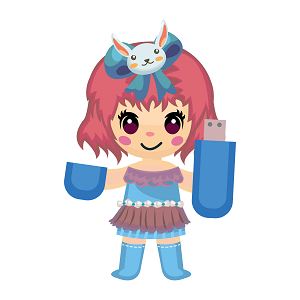 The next step is to publish the darn thing. Usually, my students want to know, “So, how does this come together in manuscript format?” The answer to that is it’s super-easy. I just use MS Word. You can use any sort of word-processing document that you want. Add the images that you got from your Fiverr illustrator as JPG images inside. It's just a running Word document. Separate it by chapters. Chapter one--just put some page breaks in between the chapters. Keep your chapter short. Even if you’re writing for an older audience, even if you are writing for an older child. All of my books are for 8-10-year-old boys. Keep those chapters short. I used to write them myself, and now I just outsource all of the writing. I tell my writers, “Hey, anywhere between 100 and 200 words per chapter, followed by an illustration.” So, I end up having maybe a dozen and a half short, bite-sized mini chapters, followed by an illustration, and another 150 words, followed by an illustration. Usually they end up being anywhere between 3,000 to 5,000 words total, for my demographic, which is, again, older kids. But, keep those chapters short. Keep them bite-sized. It keeps the pages turning, and they are a lot easier to write that way as well. That’s it. Simply format the book, submit it to Kindle. You can do that in 30 minutes, even if you’ve never done it before, and you are in business. One secret weapon that I do recommend is to put a free offer in your book.
The next step is to publish the darn thing. Usually, my students want to know, “So, how does this come together in manuscript format?” The answer to that is it’s super-easy. I just use MS Word. You can use any sort of word-processing document that you want. Add the images that you got from your Fiverr illustrator as JPG images inside. It's just a running Word document. Separate it by chapters. Chapter one--just put some page breaks in between the chapters. Keep your chapter short. Even if you’re writing for an older audience, even if you are writing for an older child. All of my books are for 8-10-year-old boys. Keep those chapters short. I used to write them myself, and now I just outsource all of the writing. I tell my writers, “Hey, anywhere between 100 and 200 words per chapter, followed by an illustration.” So, I end up having maybe a dozen and a half short, bite-sized mini chapters, followed by an illustration, and another 150 words, followed by an illustration. Usually they end up being anywhere between 3,000 to 5,000 words total, for my demographic, which is, again, older kids. But, keep those chapters short. Keep them bite-sized. It keeps the pages turning, and they are a lot easier to write that way as well. That’s it. Simply format the book, submit it to Kindle. You can do that in 30 minutes, even if you’ve never done it before, and you are in business. One secret weapon that I do recommend is to put a free offer in your book. Publishing Tip - Put a Free Offer in Your Book
This is what I call my secret weapon. That free offer leads to an audiobook. Here’s what I do. On the second or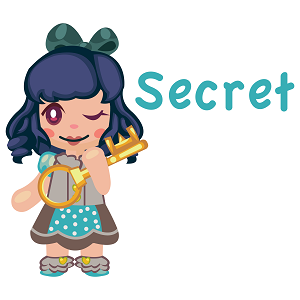 third page, right before the table of contents, I say, “Hey, if you want an audio version of this book, click this link.” The cool thing about a Kindle reading device is that you can actually click on a live link and it will open up in a browser anywhere. People can leave you their name and address in exchange for a 20 to 25-minute audiobook. An audiobook can simply comprise of you reading the book. You can use a simple word-processing program like Audacity. All you need to do is render it into an MP3, and you can save it to DropBox. You just deliver a Dropbox link to your customers for the free audiobook version and:
third page, right before the table of contents, I say, “Hey, if you want an audio version of this book, click this link.” The cool thing about a Kindle reading device is that you can actually click on a live link and it will open up in a browser anywhere. People can leave you their name and address in exchange for a 20 to 25-minute audiobook. An audiobook can simply comprise of you reading the book. You can use a simple word-processing program like Audacity. All you need to do is render it into an MP3, and you can save it to DropBox. You just deliver a Dropbox link to your customers for the free audiobook version and: - that adds a ton of value to your book,
- it sets you apart from everyone else who are publishing the same types of books out there, and
- you are creating your number one asset in the world, which is an email list of subscribers. People who know you, who love you, who buy every book and can’t wait for you to publish the next one. And, when you do end up publishing the next book, all you need to do is send a single email to your list.
Step 4 - Repeat
That’s the strategy. Then, after that you’ve got some social proof, you’ve got previous customers, you’ve got people on your subscriber base, and you’re generating recurring passive income through the sales of that same book. It would make a lot of sense to publish a similar book to the very same book series. So, you have not just one book for people to read, but you can be linking out and cross-promoting these books in the back of your book like I do. I put all of them in the back of my books. Every time I publish a book I add another link to that list of books in the back. So, when people finish that book, I say “Hey, do you like this crazy, funny kids book? I have seven or eight more that you can purchase.” They can click on those links and actually head on over to the Amazon marketplace purchase the next one right off the bat. That's how you turn this from a hobby into a business. That’s why I have all of these cross-promoting books out there in the marketplace. They’re all #1 bestsellers, and I have raving fans. I have people that write me letters. Kids write me letters, parents write me letters, teachers write me letters because, for whatever reason, they enjoy these books. If kids don’t even want to read any other books, these are books that they want to read because they’re fun, they’re kind of gross-out, they’re madcap, they have crazy illustrations, etc. In any case, I get emails all of the time from people responding to that free offer. They say, “I loved your book. This is fantastic. When are you going to write the next one?” And then, it’s just like, “Well, I’ve got the next one coming out in the next three weeks. I’ll send you a link.” That’s it. Just rinse and repeat.Step 5 - How to Keep Your Children's Books Showing Up on the Bestsellers List
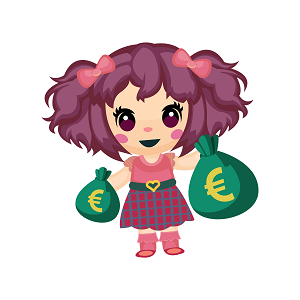 Of course I have seasonal books. I have the one that I promote in December, when I pull Santa Clause into the story. I have one that I start promoting when football season ends, and it has to do with my main character joining the football team. I have one that I promote during Halloween, in October, because it’s about some spooky, scary monsters. So, that’s another, sort of, overlay of the very same strategy, and what I like to do. I suppose this is step 5. How do you continue to have your books showing up over and over again on the bestsellers list? I have several books that have been #1 best sellers in their categories for years and years and years. Here’s one reason why. A great way to actually get brand new visitors, brand new book buyers to these books, outside of the Amazon marketplace, is to go to a website called BookBub.com. For, I think it’s $120, you can have them send out an email to all of their children’s book subscribers. I think, at this point, there’s over half a million emails going out every time I purchase a promotion like this, for $120. They send an email out to over half a million children’s book buyers that are looking for daily deals. Sometimes I generate 800 or 900 new sales in a single day for these books. Of course, that increases the visibility of not just that book, but all of the other books, by virtue of the fact that I’m promoting them all together, cross-promoting all of them inside of the book. So, every time I do that, I get a spike of not just those book sales in the Amazon marketplace, I get not only more visibility, and I’m showing up on the bestseller list. Last time I did this, I ended up as the #2 bestselling book of all children’s books inside of Kindle. It’s very amazing, and of course, I see a spike of all of my other books as a result of that.
Of course I have seasonal books. I have the one that I promote in December, when I pull Santa Clause into the story. I have one that I start promoting when football season ends, and it has to do with my main character joining the football team. I have one that I promote during Halloween, in October, because it’s about some spooky, scary monsters. So, that’s another, sort of, overlay of the very same strategy, and what I like to do. I suppose this is step 5. How do you continue to have your books showing up over and over again on the bestsellers list? I have several books that have been #1 best sellers in their categories for years and years and years. Here’s one reason why. A great way to actually get brand new visitors, brand new book buyers to these books, outside of the Amazon marketplace, is to go to a website called BookBub.com. For, I think it’s $120, you can have them send out an email to all of their children’s book subscribers. I think, at this point, there’s over half a million emails going out every time I purchase a promotion like this, for $120. They send an email out to over half a million children’s book buyers that are looking for daily deals. Sometimes I generate 800 or 900 new sales in a single day for these books. Of course, that increases the visibility of not just that book, but all of the other books, by virtue of the fact that I’m promoting them all together, cross-promoting all of them inside of the book. So, every time I do that, I get a spike of not just those book sales in the Amazon marketplace, I get not only more visibility, and I’m showing up on the bestseller list. Last time I did this, I ended up as the #2 bestselling book of all children’s books inside of Kindle. It’s very amazing, and of course, I see a spike of all of my other books as a result of that. Learn More from Jay
I have a training program, and you can learn more about it at RealFastResults.com/CBF. The “CBF” stands for Children’s Book Formula, which is a very successful program that has helped many people get published and even become bestsellers. This is a course that I had created on the heels of my #1 children’s book bestseller. I had people contacting me like, “Jay, can you please just show me how to… I want to write a #1 best selling children’s book.” I had no idea that this was such a bucket list item, but it’s absolutely the case. I have had thousands of students come through this program, most of which have never published a children’s book before. Some of which have gone on to be even more successful than I have been. I have one student who last year was in the KDP newsletter. That’s the Kindle Direct Publishing newsletter. They send it out to all Kindle publishers. She was featured as one of the bestselling authors in the entire marketplace. I was totally blown away when she sent me that. She said, “It’s all because of you, and it’s all because of the course. This would never have been available to me otherwise.” I just feel super grateful, if that’s the case, that I have been able to make a difference in other people’s lives with this training. It continues to be, for that and other reasons, my best selling program that I have ever created and launched. The best way to get in touch with me is to go to my JJ Fast Webinars Facebook page. There you can get information about CBF and other training programs that I offer.Daniel's Real Fast Results Tips: Children's Books
[youtube https://www.youtube.com/watch?v=Fk8BjcDRAEU?rel=0&showinfo=0&w=560&h=315]Resources
Jay's Children's Book Formula Training (Special Affiliate Pricing Deal) Book Illustrations - Fiverr.com Free Audio Editor and Recorder - Audacity Online File Storage - https://www.dropbox.com/ BookBub.com Welcome to the Real Fast Results podcast! Podcasting is such a special medium to use, and it is especially effective when you’re trying to build an audience for yourself and your business. That’s what Lance Tamashiro is going to discuss during this episode. You’ll really enjoy this if podcasting is of any interest to you at all because Lance does really well when it comes to demystifying this process. He has a way of making it all so much easier than you ever would have thought possible. Lance has risen far up the charts, and it didn’t take him very long to do this. He’s right up there with the likes of Pat Flynn, John Lee Dumas, and Gary Vaynerchuck. So, who better to take advice from? Without further ado, please welcome Lance Tamashiro.
Welcome to the Real Fast Results podcast! Podcasting is such a special medium to use, and it is especially effective when you’re trying to build an audience for yourself and your business. That’s what Lance Tamashiro is going to discuss during this episode. You’ll really enjoy this if podcasting is of any interest to you at all because Lance does really well when it comes to demystifying this process. He has a way of making it all so much easier than you ever would have thought possible. Lance has risen far up the charts, and it didn’t take him very long to do this. He’s right up there with the likes of Pat Flynn, John Lee Dumas, and Gary Vaynerchuck. So, who better to take advice from? Without further ado, please welcome Lance Tamashiro. Podcasting the Right Way
Today, we’re going to discuss a couple of items. First of all, I want to tell people how to get their own podcast set up, but I think that’s the easy part. I think the whole thing that holds people up is this idea of perfection, this idea of enough content, and the best way to get that done. My goal for today would be:- Make sure that people know what they need to do in order to get their podcast up,
- Know that whatever you have, whatever point that you’re at, the most important thing is to get this thing up and running.
Why You Should Have a Podcast – Easy Content
 For me, I started a podcast, and it got ranked up high pretty quickly. That’s true and false at the same time. I don’t want to mislead people because I actually started my podcast, I think back in 2012. What I did was, I did three episodes. One was like two minutes long, one was like 10 minutes long, and you can go see; they are still out on iTunes. I thought, “I don’t get it… I don’t understand why I’m doing this,” so I did nothing, and then in 2013, I said, “I’m going to do this podcasting thing!” I did three or four episodes. They are still out there, and you can go [listen] to them, and they did nothing. The same happened every year. I would promise myself that I was going to do this podcast. I run a mastermind group, and I offhandedly said, “January of this year, and we’re filming this in 2016.” A couple of months ago I said, “My New Year’s resolution is that I’m going to do a podcast once a month.” I said that it was my resolution because I always break my resolution, so I knew this still wasn’t going to work. So, I started doing this, and I stumbled on this other way of doing it, this other way of making content. More importantly, other people that I was able to connect with, that promoted my podcast, ended up shooting it to the top. Now I’m doing three, four podcasts every single week, and I’ve been as high as #9 in the overall “Business” category. I’m usually between 40 and 20; it fluctuates up and down. But, there’s a couple of things that really came out of it for me:
For me, I started a podcast, and it got ranked up high pretty quickly. That’s true and false at the same time. I don’t want to mislead people because I actually started my podcast, I think back in 2012. What I did was, I did three episodes. One was like two minutes long, one was like 10 minutes long, and you can go see; they are still out on iTunes. I thought, “I don’t get it… I don’t understand why I’m doing this,” so I did nothing, and then in 2013, I said, “I’m going to do this podcasting thing!” I did three or four episodes. They are still out there, and you can go [listen] to them, and they did nothing. The same happened every year. I would promise myself that I was going to do this podcast. I run a mastermind group, and I offhandedly said, “January of this year, and we’re filming this in 2016.” A couple of months ago I said, “My New Year’s resolution is that I’m going to do a podcast once a month.” I said that it was my resolution because I always break my resolution, so I knew this still wasn’t going to work. So, I started doing this, and I stumbled on this other way of doing it, this other way of making content. More importantly, other people that I was able to connect with, that promoted my podcast, ended up shooting it to the top. Now I’m doing three, four podcasts every single week, and I’ve been as high as #9 in the overall “Business” category. I’m usually between 40 and 20; it fluctuates up and down. But, there’s a couple of things that really came out of it for me: - They are really easy to do, if you do it the way that I do it.
- It gets you exposure to a lot of people that you would have never gotten before.
How to Create a Podcast
It’s really simple. People thought that it was such a hard thing for so long. Literally, what you need is a WordPress site to start. People will talk about these services like Libsyn, which is a podcast hosting site. They are good to have, down the road as you get bigger; you don’t need it to just get started. The next thing you need is headphones. I mean, I started with a $25 Logitech USB headset. I just plugged it in and started talking to myself. Then you need something to record with. I used Camtasia Studio at the time because it was just something that I already had. I could record two sides of a conversation. I used that because it’s what I already had. Basically, you just set up a blog and get a plug-in called PowerPress. It’s free, and what that will do, is it just puts a player on your blog. You upload the MP3 to it, and it starts to play. Then, all you have to do is go to Google Play. If you search “Google Play Podcasts”, it will come up where you can submit what’s called “the feed”. The PowerPress plug-in gives you that feed, so you just put that in, and the Google Play and Google Plus will pull it up. You’ll be in their directory. Then you just click “Submit”. It submits the podcast in iTunes and to Google. A site will come up, and then you put that same feed into them. Once you do that, anytime you put a new podcast on your blog as a separate post, it automatically pushes out to all of these different directories. It’s the simplest, easiest way to get started. The hardest part, for most people, is to start making the recordings and making the content.
site to start. People will talk about these services like Libsyn, which is a podcast hosting site. They are good to have, down the road as you get bigger; you don’t need it to just get started. The next thing you need is headphones. I mean, I started with a $25 Logitech USB headset. I just plugged it in and started talking to myself. Then you need something to record with. I used Camtasia Studio at the time because it was just something that I already had. I could record two sides of a conversation. I used that because it’s what I already had. Basically, you just set up a blog and get a plug-in called PowerPress. It’s free, and what that will do, is it just puts a player on your blog. You upload the MP3 to it, and it starts to play. Then, all you have to do is go to Google Play. If you search “Google Play Podcasts”, it will come up where you can submit what’s called “the feed”. The PowerPress plug-in gives you that feed, so you just put that in, and the Google Play and Google Plus will pull it up. You’ll be in their directory. Then you just click “Submit”. It submits the podcast in iTunes and to Google. A site will come up, and then you put that same feed into them. Once you do that, anytime you put a new podcast on your blog as a separate post, it automatically pushes out to all of these different directories. It’s the simplest, easiest way to get started. The hardest part, for most people, is to start making the recordings and making the content. Recording a Podcast Is Not as Hard as You Think
First of all, you hear all of these podcasts like mine. If you need some motivation for a crappy podcast that does well, go listen to mine. I’m not a great speaker, I don’t have anything planned. I bought my intro music off of Fiverr, and I just use that. And, that’s it. Even when I started, I didn’t even know what I was going to say. If you listen to my first episodes, it’s usually just me rambling on. What I like about doing the interview model, which is what I do now, is that I don’t have to say anything. Literally, what happens, in the way that I do it, is that somebody comes to me and says, “I want to be on your podcast.” I say, “Give me your bio.” I read their bio, pretty much word-for-word as they give it to me, and then I say, “How did you get started with…”. Then they start talking through it, and I say, “Well that’s awesome. What would you tell somebody that’s just getting started?” Then, they tell me, and I say “What’s a big mistake that they make?” That’s it. I mean, that’s the formula. In 20 or 30 minutes, if you ask those questions, if you think about it, it gives them the story or what they did. It tells somebody new what they should be doing, and it tells somebody new what mistakes to avoid. You’re done and out of there, and you don’t have to say anything, other than ask those three questions. You’ll get more comfortable as you go, and I would say just get started. Grab somebody you know. Daniel Hall and Jason Parker were the first two people that I interviewed on my podcast. It was easy for me because I knew you guys. I say, grab somebody you know off of Facebook. Grab somebody you talk to on Skype, and start there and build up that confidence, and then move on. But, you’re going to find, “Oh, it’s just talking to somebody…” once you get started.Recap of What You Need to Start a Podcast
 You set up a WordPress site. You buy a domain name. Set it up with your hosting account and put WordPress on it. Then, the only plug-in that you need is called PowerPress. It’s free, so you can put a theme on there if you want. However, you don’t have to because what you’re really trying to do is to get it out into the directories--into iTunes and Google Play. You just have the basic theme on there, put PowerPress on there. What PowerPress does is, when you make a new post, it will add a section below the post where you upload your MP3 file. So, you upload your MP3 file, and that puts the post out there. You have to do that before you can submit to the directories. Make that first post with some kind of audio on it. Then you search on Google for either “Google Play Podcasts”, or “iTunes Podcasts”. The third one you want to do is Stitcher. So, you’ve got Stitcher, Google Play, and iTunes, these are kind of the big three. Inside of the PowerPress plug-in, it gives you a link that says, “This is your podcast URL.” When you go to those directories, they’ll have a website if you Google them, all you have to do is paste that URL that the PowerPress plug-in gives you in your blog. You paste it in, and basically, what that URL does is every time you add a new post, it tells all of these directories, “Hey, there’s something new. Add it to your directory.” Now, any time you want to make a new one, you just make a brand new post, upload it into your PowerPresss plug-in, which is underneath your post settings, and it automatically, magically shows up everywhere that you wanted it to show up. And, literally, that’s all you have to do to get started with your podcast. After that, the big thing is to decide how you’re going to do your show. I mean, is it going to be multiple people; is it going to be just you? When I started, it has been just me talking, whenever I had an idea of something that I wanted to talk about. Well, now because the show’s there, people contact me constantly to be on the show. Because it’s ranked, they find it inside of iTunes. Contact all of the people you know and just say, “I want to interview you. I want to get you on, and it’s 20-30 minutes, it’s a piece of cake…” You just record it and put it up there. I don’t do any editing. If you listen to mine, there were times when people have dropped out, and I just finish up the conversation. There’s been times when my son has walked in, in the middle, and I just kind of talk to him. For me, it’s kind of about personality. It depends on what you want to have on your show, but I don’t want to spend a bunch of time editing. You can if you want. There’s also services that will do it for you. If you’re just getting started, the important part is to get it out there. Because, if you want to start getting bigger guests, what they want to see is that you’re actually doing it. So, if you have 10 episodes under your belt, they are more likely to say “yes” than if you’re not even listed. It’s really easy. I have had a few people in the internet marketing space, when I was first getting started, that kind of blew me off. Now they all want to be on the show because they know how much traffic it’s getting. So, when you get started, it’s one of those things where, get some episodes out there, and most people will automatically say “yes”. Now, here’s the big thing. If you want to get guests easy, go to Amazon, find all of the authors inside of your niche, it doesn’t matter what your niche is, and contact them. There is no author that will not do a book promotion. You talk to them about their topic, talk to them about their book and you can fill up your schedule as quickly as you want to.
You set up a WordPress site. You buy a domain name. Set it up with your hosting account and put WordPress on it. Then, the only plug-in that you need is called PowerPress. It’s free, so you can put a theme on there if you want. However, you don’t have to because what you’re really trying to do is to get it out into the directories--into iTunes and Google Play. You just have the basic theme on there, put PowerPress on there. What PowerPress does is, when you make a new post, it will add a section below the post where you upload your MP3 file. So, you upload your MP3 file, and that puts the post out there. You have to do that before you can submit to the directories. Make that first post with some kind of audio on it. Then you search on Google for either “Google Play Podcasts”, or “iTunes Podcasts”. The third one you want to do is Stitcher. So, you’ve got Stitcher, Google Play, and iTunes, these are kind of the big three. Inside of the PowerPress plug-in, it gives you a link that says, “This is your podcast URL.” When you go to those directories, they’ll have a website if you Google them, all you have to do is paste that URL that the PowerPress plug-in gives you in your blog. You paste it in, and basically, what that URL does is every time you add a new post, it tells all of these directories, “Hey, there’s something new. Add it to your directory.” Now, any time you want to make a new one, you just make a brand new post, upload it into your PowerPresss plug-in, which is underneath your post settings, and it automatically, magically shows up everywhere that you wanted it to show up. And, literally, that’s all you have to do to get started with your podcast. After that, the big thing is to decide how you’re going to do your show. I mean, is it going to be multiple people; is it going to be just you? When I started, it has been just me talking, whenever I had an idea of something that I wanted to talk about. Well, now because the show’s there, people contact me constantly to be on the show. Because it’s ranked, they find it inside of iTunes. Contact all of the people you know and just say, “I want to interview you. I want to get you on, and it’s 20-30 minutes, it’s a piece of cake…” You just record it and put it up there. I don’t do any editing. If you listen to mine, there were times when people have dropped out, and I just finish up the conversation. There’s been times when my son has walked in, in the middle, and I just kind of talk to him. For me, it’s kind of about personality. It depends on what you want to have on your show, but I don’t want to spend a bunch of time editing. You can if you want. There’s also services that will do it for you. If you’re just getting started, the important part is to get it out there. Because, if you want to start getting bigger guests, what they want to see is that you’re actually doing it. So, if you have 10 episodes under your belt, they are more likely to say “yes” than if you’re not even listed. It’s really easy. I have had a few people in the internet marketing space, when I was first getting started, that kind of blew me off. Now they all want to be on the show because they know how much traffic it’s getting. So, when you get started, it’s one of those things where, get some episodes out there, and most people will automatically say “yes”. Now, here’s the big thing. If you want to get guests easy, go to Amazon, find all of the authors inside of your niche, it doesn’t matter what your niche is, and contact them. There is no author that will not do a book promotion. You talk to them about their topic, talk to them about their book and you can fill up your schedule as quickly as you want to. Podcast Cover Art
Honestly, when I launched mine, I didn’t have cover art. What I ended up doing, is I took a picture of me and my daughter, went on to Pixlr and put in words. I just put “Lance Tamashiro Show” on it. I mean, you can see it. It’s just a picture of me and my daughter with the words on the bottom. I didn’t overthink it. However, now they want the size to be either 2,000 x 2,000 or 3,000 x 3,000. Again, you just upload that to PowerPress, and they take care of everything for you. This plug-in really does do everything. You know, if you walk through the setup of the plug-in, they have it by menus, and you just fill everything in, you’re good to go. And, I think they even have the links now for Google Play and iTunes to send you to the place that you want to go. If you want to have a cool setup, I would say go to Fiverr.com and just search “podcast art”. There will be a bunch of people that come up. Just pay them $5 or $10, get that thing made, and don’t even think about it. And, even with mine, that’s where I got my intro made. I went in and typed in “podcast intro music”. The first guy that came up, I hired him, and he did my intro and outro. I think it cost me $20 total, and then I was done. You don’t even have to think about it. I do my recording, and then I go back and I stick that at the front, and then the back, and then I’m done. I kind of think the intro music is distracting. I mean, that’s the big thing. I’ve been going back and listening to the other top podcasts, and most of them it’s like five seconds with them just talking into it. So my thought at this point is, “I’m going to pull that out, or at least just really strip it back,” because I mean, that’s not what it’s about. It’s about the information that you’re going to give to people, and the guests that you have on.Podcast Tips
If you have a podcast that no one listens to, do you really have a podcast? I mean, that’s the big question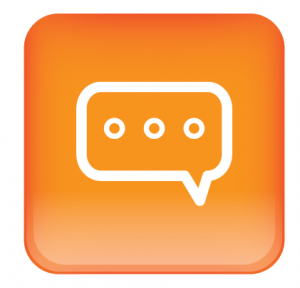 with all podcasting. It’s, “How do I get subscribers? How do I get listeners? How do I get people on?” So, the first thing is if you’re starting from scratch, here is what I did. I had a dead Twitter account that I never used. I hadn’t made a tweet on it since like 2010. So, I had this Twitter account, and I’m thinking, “Alright. I’ll just use this and see what happens.” I found this software. It’s a website called eClincher.com. What it does, is it basically can make a list of tweets, and it will just tweet them over and over again, as much as you want. So, what happened was, one of the guests on my podcast said to me, “The average lifespan of a tweet is 45 minutes.” So, if you tweet every 45 minutes, it’s not like Facebook where people are going to get mad at you. It’s not like email. You’re allowed to tweet every 45 minutes and nobody cares. So, I found this thing that’s basically an auto-responder. Now, every time I have a new show, I put that into my “auto-responder”, my auto-tweet, called eClincher. I set it to run every 45 minutes, or 60 minutes, and it just cycles through. When I started at like 10 episodes, it just cycled through every 45 minutes, making those tweets go out, and then I just add a new one. Here’s the key that I did. Every guest that I had on, I would tag them. You’ve probably seen this on Twitter. You see that every day. You see I’m promoting it, and you’re likely to like it, or re-tweet, or whatever, so your people see it. But, then what I do is I use the hashtag. So, I use #podcast almost always. My podcast is business-related and entrepreneur, so I use #business and #entrepreneur. My Twitter account was, just from doing that, 200-300 followers a day. Just from tweeting that thing out. I mean, constantly tweeting those things out. However, you’ve got high-profile people that re-tweet it every day because they like it and because you’re promoting them. It doesn’t cost them anything; they are there anyway. It keeps you in their heads. I mean, you’re never going to forget that you were on my show because every time you log into Twitter, you’re going to see X-number of tweets from me promoting it. Again, having guests for me is what blew up really fast because I couldn’t believe how willing people were to tweet about it, to Facebook about it, to email about it. I mean, people with massive, massive followings. If I were to have approached them and said, “Hey, email for my product. Let’s do a webinar.” They would have said, “No way,” but because it was this podcast, they were all willing to do that. I attribute a huge amount of the growth and success of my podcast to that because, I’ve got a pretty big mail list, and I’ve got a pretty big following, but I rarely, I mean maybe twice, I’ve sent out emails about my podcast. So, this grew without me being involved. It was all pretty much my guests. Here’s probably the biggest tip that I got from doing this, about getting guests, and getting high profile, and growing this thing fast. For me, I always thought of myself as in the internet marketing space. I found out I wasn’t, especially for my podcast. Let’s say you’re in the dog training niche. You’re not in the dog training niche for your podcast. You’re in the animal-whatever niche. If you want to focus on dogs, that’s fine, but here’s where I think people are missing the boat. They start saying like, “Well, I’m a dog trainer so I’m just going to train about this type of dog.” What they need to do is contact places like the Humane Society. They need to contact places like Purina, places that make dog toys, and the reason is all of these people have a huge following on social media. The second thing is that they all have PR departments that are set up just to get out PR and get their word out. So they will do an interview with you, if they see you have a podcast. And then, three, that gives you a lot of credibility to say, “Hey, the guy from Purina was on my show. Why don’t you be on my show,” or “the guy from the Humane Society was, why don’t you?” They will all promote it. These big companies will all post it onto their Facebook pages. Don’t think of yourself as in this small, little microcosm niche. Think about how big you can blow it up, which is the opposite of what we hear in online business. People say, “Pick your little niche and do that”. That’s fine, but for your podcast, there’s only 10 broad categories in iTunes. Pick one of those, and that’s your niche. Then start thinking about what companies, what big players you can go to. Most of them have big PR departments, and they are just looking for places to get their message out and will promote you.
with all podcasting. It’s, “How do I get subscribers? How do I get listeners? How do I get people on?” So, the first thing is if you’re starting from scratch, here is what I did. I had a dead Twitter account that I never used. I hadn’t made a tweet on it since like 2010. So, I had this Twitter account, and I’m thinking, “Alright. I’ll just use this and see what happens.” I found this software. It’s a website called eClincher.com. What it does, is it basically can make a list of tweets, and it will just tweet them over and over again, as much as you want. So, what happened was, one of the guests on my podcast said to me, “The average lifespan of a tweet is 45 minutes.” So, if you tweet every 45 minutes, it’s not like Facebook where people are going to get mad at you. It’s not like email. You’re allowed to tweet every 45 minutes and nobody cares. So, I found this thing that’s basically an auto-responder. Now, every time I have a new show, I put that into my “auto-responder”, my auto-tweet, called eClincher. I set it to run every 45 minutes, or 60 minutes, and it just cycles through. When I started at like 10 episodes, it just cycled through every 45 minutes, making those tweets go out, and then I just add a new one. Here’s the key that I did. Every guest that I had on, I would tag them. You’ve probably seen this on Twitter. You see that every day. You see I’m promoting it, and you’re likely to like it, or re-tweet, or whatever, so your people see it. But, then what I do is I use the hashtag. So, I use #podcast almost always. My podcast is business-related and entrepreneur, so I use #business and #entrepreneur. My Twitter account was, just from doing that, 200-300 followers a day. Just from tweeting that thing out. I mean, constantly tweeting those things out. However, you’ve got high-profile people that re-tweet it every day because they like it and because you’re promoting them. It doesn’t cost them anything; they are there anyway. It keeps you in their heads. I mean, you’re never going to forget that you were on my show because every time you log into Twitter, you’re going to see X-number of tweets from me promoting it. Again, having guests for me is what blew up really fast because I couldn’t believe how willing people were to tweet about it, to Facebook about it, to email about it. I mean, people with massive, massive followings. If I were to have approached them and said, “Hey, email for my product. Let’s do a webinar.” They would have said, “No way,” but because it was this podcast, they were all willing to do that. I attribute a huge amount of the growth and success of my podcast to that because, I’ve got a pretty big mail list, and I’ve got a pretty big following, but I rarely, I mean maybe twice, I’ve sent out emails about my podcast. So, this grew without me being involved. It was all pretty much my guests. Here’s probably the biggest tip that I got from doing this, about getting guests, and getting high profile, and growing this thing fast. For me, I always thought of myself as in the internet marketing space. I found out I wasn’t, especially for my podcast. Let’s say you’re in the dog training niche. You’re not in the dog training niche for your podcast. You’re in the animal-whatever niche. If you want to focus on dogs, that’s fine, but here’s where I think people are missing the boat. They start saying like, “Well, I’m a dog trainer so I’m just going to train about this type of dog.” What they need to do is contact places like the Humane Society. They need to contact places like Purina, places that make dog toys, and the reason is all of these people have a huge following on social media. The second thing is that they all have PR departments that are set up just to get out PR and get their word out. So they will do an interview with you, if they see you have a podcast. And then, three, that gives you a lot of credibility to say, “Hey, the guy from Purina was on my show. Why don’t you be on my show,” or “the guy from the Humane Society was, why don’t you?” They will all promote it. These big companies will all post it onto their Facebook pages. Don’t think of yourself as in this small, little microcosm niche. Think about how big you can blow it up, which is the opposite of what we hear in online business. People say, “Pick your little niche and do that”. That’s fine, but for your podcast, there’s only 10 broad categories in iTunes. Pick one of those, and that’s your niche. Then start thinking about what companies, what big players you can go to. Most of them have big PR departments, and they are just looking for places to get their message out and will promote you. Connecting with Lance
The easiest way is to go to iTunes and type in Lance Tamashiro. That would be a great way. The other thing is, if you’re interested in podcasting, setting up something similar to what we’re doing here today, you can check out the PodcastCrusher training. It’s basically a step-by-step course that lets you look over our shoulders as we set up an actual podcast that we started from scratch, and you can watch and see how that’s been growing as well.Resources
Lance's PodcastCrusher Course (I bought this and use it myself) - PodcastCrusher Course Podcast Plugin - PowerPress Podcast Hosting Site - Libsyn Photo Editor - Pixlr Social Media Management Tool - eClincher Lance Tamashiro Podcast - Marketing, Entrepreneurship, Productivity & Results Podcast Cover Art - Fiverr.com Podcast Platforms: Stitcher Google Play iTunes.comDaniel's Real Fast Results Tips: Podcasting
- Pick a topic and start asking friends when you can interview them.
- You can use Google Hangout to record your interview.
- Make sure you have a good microphone.
Real Fast Results Community
If you are diggin’ on this stuff and really love what we’re doing here at Real Fast Results, would you please do me a favor? Head on over to iTunes, and make sure that you subscribe to this show, download it, and rate & review it. That would be an awesome thing. Of course, we also want to know your results. Please share those results with us at http://www.realfastresults.com/results. As always, go make results happen! Welcome to another episode of the Real Fast Results Podcast. I'm so pleased you are here! I have a very special treat for you. I have a good friend and a mentor of mine, Mr. Marlon Sanders, on the line. We are going to talk about something that's really important for the longevity of your business--that is creating evergreen products. In other words, information products that sold five years ago, ten years ago, and they'll sell fifteen years into the future. They are evergreen. These are great types of products to focus on within your business. Not only will your product be evergreen, but the potential to sell that product and profit from that product long-term also exist. I'm all about leveraging your time and your efforts to get the most bang out of the least amount of effort. Focusing on evergreen types of products, are a really great way to do that. And a master of this is Marlon Sanders.
Welcome to another episode of the Real Fast Results Podcast. I'm so pleased you are here! I have a very special treat for you. I have a good friend and a mentor of mine, Mr. Marlon Sanders, on the line. We are going to talk about something that's really important for the longevity of your business--that is creating evergreen products. In other words, information products that sold five years ago, ten years ago, and they'll sell fifteen years into the future. They are evergreen. These are great types of products to focus on within your business. Not only will your product be evergreen, but the potential to sell that product and profit from that product long-term also exist. I'm all about leveraging your time and your efforts to get the most bang out of the least amount of effort. Focusing on evergreen types of products, are a really great way to do that. And a master of this is Marlon Sanders. Why Evergreen Products?
Here's the thing that people need to know: We all got into this business because we would rather trade our products for money than we would our own personal time. However, if you have to keep creating new products in order to do that, you're kind of in a rat race. It's like being on a treadmill because you created the product, you launched it, two weeks later the sales are dead and now you're having to create another product. I'm not criticizing that, but imagine this. This is a future state. Imagine that you have a product that you created ten years ago and you're still getting paid for it. You have a product you created five years ago and you're still getting paid for that. You have a product you created six years ago, you're still getting paid for it. That's the beauty of evergreen products. Because now:
products for money than we would our own personal time. However, if you have to keep creating new products in order to do that, you're kind of in a rat race. It's like being on a treadmill because you created the product, you launched it, two weeks later the sales are dead and now you're having to create another product. I'm not criticizing that, but imagine this. This is a future state. Imagine that you have a product that you created ten years ago and you're still getting paid for it. You have a product you created five years ago and you're still getting paid for that. You have a product you created six years ago, you're still getting paid for it. That's the beauty of evergreen products. Because now: - you can relaunch them
- if you set them up right, these products can sell literally for years
Step By Step Overview On How To Create Evergreen Products
We'll review the steps in brief and then detail each one.- Step number one is to find timeless topics. If you're doing a topic that is going to be dramatically different six months from now, then it's going to be really hard to have that as an evergreen product. Nonetheless, there are certain topics that are incredibly timeless.
- Step number two is nailing the product format. What format do you deliver on, that allows it to sell long-term? This is something that's really huge and it's something most people don't know and don't do.
- Step number three is what's selling today? How do you combine this with what you can launch today and what's selling today?
Step 1 - Timeless Topics
Technology Topic Concerns
One of the things that sort of comes to mind for some people is, "Well, what if I'm in a tech industry or what if I'm in some industry that doesn't necessarily lend itself well to an evergreen topic?" I believe that in just about every industry you're going to find topics that are more evergreen than others. It's all relative, and we'll compare it to a chess game.Static Advantage
In chess, when you study the theory of chess, there are advantages during a game that are called static. Meaning they'll last the whole chess game. It's a static advantage, right? You're up a rook. It's a static advantage. They're not getting a rook back. You're up a rook the whole rest of the game. That's a static advantage. It stays the same. Not forever in chess, but for that game that you're playing.Dynamic Advantage
Then you have dynamic advantages. A dynamic advantage in chess is when you have it right now on the board. Their pawn is backwards. There's an open file that you can seize. There's a combination you can take advantage of. That is a changeable dynamic, very short-term advantage. The thing is that the game that you play with tech topics, is more like chess. The nature of that game is shorter than the game. Maybe it's in internet marketing, but you still have static plays within whatever the parameters of that game are. That's how I would look at that, and I would try to identify the things within the tech field that are more static than they are dynamic. Another idea to mention to people who have the "tech topic" as a concern is, "What is the variable in this puzzle that doesn't change?" Generally that's a human being. If there's some aspect of your product that deals with human psychology, human behavior, human looks, anything like that, those tend to be more evergreen topics. As a machine, humans don't change from generation to generation like computers do.Finding Timeless Topics
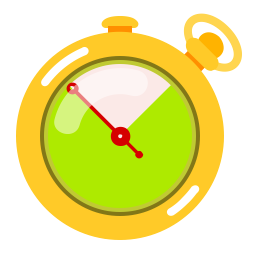 It's amazing how much things change and how much they don't change. If you study books and magazines from the very early 1900's, there are ads and products you could take from then, that would still sell today. It's amazing how much things don't change. For example, back in the early 1900's a popular product was about memory. You would think that today with iPhones and iPads that people wouldn't still buy memory courses, memory training and memory books, but guess what? They do. You go down to Barnes and Noble. You go to the self-help section, and what are you going to find books on? How to improve your stupid memory. They were selling that in the 1800's. You pick up that book on how to improve your memory, and the methods in it were invented around the 1700's. It's the same method. You go back and you study. You think, "This is the same stuff." They probably taught it better in the 1700's. It's amazing how much things change and how much they're the same. Character analysis back then was a big thing. Analyzing people, analyzing people using many of the same exact methods, very similar to the way they are taught today. There are so many more. The subject of motivation. Hypnosis. Great in the 1800's and 1900's about hypnosis. My friend still sells the hypnosis stuff today. Joe Vitale and Steven Jones sell more hypnosis audios than you can fathom. There isn't anything new about it. They've been doing hypnosis since the 1900's and before. Another piece to look at is what are things that have sold long-term? How about analysis? Selling analysis. People have been buying personality analysis, business analysis, literally since the early 1900's. What's an analysis? What's the value of an analysis? An analysis is going to be evergreen. People perceive value in an analysis. There are all of these timeless topics, and yet within them obviously things are updated and changed, so you're living in both worlds. You have a foot in the past and a step in the present and kind of a third foot going into the future. Or, eyes going into the future. In step one we're hitting on the evergreen topics. Yet, you're also trying to get in touch with what aspects of those topics people are wanting to buy now. If they don't want to buy it right now, then it's not going to sell. Therefore, it's updated with current angles and so forth. It's still something that's going to sell over time. There's a bit of a balance there and a bit of an art. On a side note, if you're looking for evergreen topics and evergreen content within your niche, make sure to download show number two: Publishing And Profiting From Public Domain Content With Tony Laidig. I think we all understand step one, Marlon. Let's jump into step number two.
It's amazing how much things change and how much they don't change. If you study books and magazines from the very early 1900's, there are ads and products you could take from then, that would still sell today. It's amazing how much things don't change. For example, back in the early 1900's a popular product was about memory. You would think that today with iPhones and iPads that people wouldn't still buy memory courses, memory training and memory books, but guess what? They do. You go down to Barnes and Noble. You go to the self-help section, and what are you going to find books on? How to improve your stupid memory. They were selling that in the 1800's. You pick up that book on how to improve your memory, and the methods in it were invented around the 1700's. It's the same method. You go back and you study. You think, "This is the same stuff." They probably taught it better in the 1700's. It's amazing how much things change and how much they're the same. Character analysis back then was a big thing. Analyzing people, analyzing people using many of the same exact methods, very similar to the way they are taught today. There are so many more. The subject of motivation. Hypnosis. Great in the 1800's and 1900's about hypnosis. My friend still sells the hypnosis stuff today. Joe Vitale and Steven Jones sell more hypnosis audios than you can fathom. There isn't anything new about it. They've been doing hypnosis since the 1900's and before. Another piece to look at is what are things that have sold long-term? How about analysis? Selling analysis. People have been buying personality analysis, business analysis, literally since the early 1900's. What's an analysis? What's the value of an analysis? An analysis is going to be evergreen. People perceive value in an analysis. There are all of these timeless topics, and yet within them obviously things are updated and changed, so you're living in both worlds. You have a foot in the past and a step in the present and kind of a third foot going into the future. Or, eyes going into the future. In step one we're hitting on the evergreen topics. Yet, you're also trying to get in touch with what aspects of those topics people are wanting to buy now. If they don't want to buy it right now, then it's not going to sell. Therefore, it's updated with current angles and so forth. It's still something that's going to sell over time. There's a bit of a balance there and a bit of an art. On a side note, if you're looking for evergreen topics and evergreen content within your niche, make sure to download show number two: Publishing And Profiting From Public Domain Content With Tony Laidig. I think we all understand step one, Marlon. Let's jump into step number two. Step 2 - Product Format
The format is important when selling evergreen products! In general, PDFs are a tough format to sell long-term. I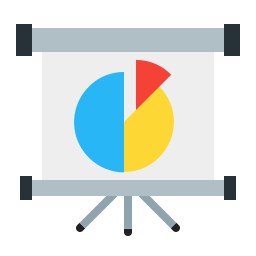 don't have a lot of PDFs that I wrote ten years ago that sell well today. It's a very controversial topic and people have an awful lot of opinions about them. Some people say, "Oh, don't worry about them." All I know is PDF products struggle to sell long-term and I don't know why. Dan Kennedy said one of the most brilliant things I've ever heard, and here's what he said, "Don't produce your info product in a format people can compare." Now, I'm talking about the item you're selling for money. Obviously, a Kindle book is a Kindle book and you're using it to generate new customers, probably not as much for profit. I'm talking about your moneymaker. Don't make your moneymaker something that people can easily compare it to. In other words, if you know anything about Dan Kennedy and buy something, he might include some books, checklists, some templates, some conference calls, or even just his old simple products. Dan Kennedy wouldn't just sell you a book. It would be a manual with this ugly thing stuck in it with cassette tapes popped into there. Then some other sheets and items stuffed in a big nine by twelve envelope. How do you compare the value of this with someone else's info product? Another format is example is, Dan Sullivan. Dan teaches people in all kinds of industries to create and sell processes instead of products. It's one of the most profound things I've heard. He'll take somebody in a really difficult commodity type industry. Let's take a financial planner. If you ask, "Well, what's the difference between Johnny and Jimmy financial planner?" Most people would just scratch their heads and say, "I don't know. They both, what? Give you a plan?" Dan Sullivan teaches how to create this process with these steps. They have these fancy graphics created for it and give it this name, like, "The Parents' Easy Transition Process," to easily transition your finances when your parents are elderly. It would teach them to create a process, create illustrations and diagrams and put a name on it. Now how does someone compare the value of that to the value of a Kindle book, a course or a PDF they'd buy on the internet? I have a treasure box that's actually a card file, like a Rolodex. I write my ideas in there because I'm scared if I stick them on my iPad or iPhone it'll crash and I'll just lose them all. I still trust index cards. The point of this is let's say you bought a product and I shipped you this little thing of index cards with notes on them. What's the value of that? That's the reason I do dashboards. I created the dashboard format. A few people have done dashboards, but there's not very many. What's the value of a dashboard? The value of a dashboard is what I tell you it is and what you feel it's worth.
don't have a lot of PDFs that I wrote ten years ago that sell well today. It's a very controversial topic and people have an awful lot of opinions about them. Some people say, "Oh, don't worry about them." All I know is PDF products struggle to sell long-term and I don't know why. Dan Kennedy said one of the most brilliant things I've ever heard, and here's what he said, "Don't produce your info product in a format people can compare." Now, I'm talking about the item you're selling for money. Obviously, a Kindle book is a Kindle book and you're using it to generate new customers, probably not as much for profit. I'm talking about your moneymaker. Don't make your moneymaker something that people can easily compare it to. In other words, if you know anything about Dan Kennedy and buy something, he might include some books, checklists, some templates, some conference calls, or even just his old simple products. Dan Kennedy wouldn't just sell you a book. It would be a manual with this ugly thing stuck in it with cassette tapes popped into there. Then some other sheets and items stuffed in a big nine by twelve envelope. How do you compare the value of this with someone else's info product? Another format is example is, Dan Sullivan. Dan teaches people in all kinds of industries to create and sell processes instead of products. It's one of the most profound things I've heard. He'll take somebody in a really difficult commodity type industry. Let's take a financial planner. If you ask, "Well, what's the difference between Johnny and Jimmy financial planner?" Most people would just scratch their heads and say, "I don't know. They both, what? Give you a plan?" Dan Sullivan teaches how to create this process with these steps. They have these fancy graphics created for it and give it this name, like, "The Parents' Easy Transition Process," to easily transition your finances when your parents are elderly. It would teach them to create a process, create illustrations and diagrams and put a name on it. Now how does someone compare the value of that to the value of a Kindle book, a course or a PDF they'd buy on the internet? I have a treasure box that's actually a card file, like a Rolodex. I write my ideas in there because I'm scared if I stick them on my iPad or iPhone it'll crash and I'll just lose them all. I still trust index cards. The point of this is let's say you bought a product and I shipped you this little thing of index cards with notes on them. What's the value of that? That's the reason I do dashboards. I created the dashboard format. A few people have done dashboards, but there's not very many. What's the value of a dashboard? The value of a dashboard is what I tell you it is and what you feel it's worth. Product Platform - Planners
Evergreen products, here's a great idea. Planners. I don't care what niche you are in, people love planners. It's the weirdest thing. They just sell. People love buying planners. It's great. It's a repeat business because they use them (take a look at show 4: Profiting From Low and No-Content Books With Kristen Joy). Grant Cardone sells so many of his 10X Planners that it's insane. He's got a place where you write your appointments for the day and then a place where you brainstorm your goals. Evergreen products contain information that you can't easily compare. Information that has perceived value over time. I did a planner just because I knew that every year when people get on the planner thing, they're going to be buying a planner. What I learned about planners is the simpler the better. And don't forget, people love workbooks as well.Product Platform - Dashboards
I want to just spend a moment here, Marlon, because you're known far and wide for your dashboard type of products. I love your dashboard products. I first knew of you by buying your dashboard products. And really, when I was a pup in this industry, it was you, Marlon, that really helped me along. Not you, directly, but your products. I'm eternally grateful to you because they were so doggone easy to use and attractive. I knew what I needed. I needed to follow along the top row, then go to the next row and follow along that, and it was just all right there and very easy to use. I'm going to recommend to you, if you haven't yet bought one of Marlon's dashboard products, I like the marketing one. Well, I like them all. I own practically every one of them. Thanks, Daniel! We have Traffic Dashboard. People are always going to need traffic. We have Info Product Dashboard. That helps you create Info Products, and as long as people are buying information that's going to be the product that sells. We have one called the Marketing Dashboard because, hey, people are always going to be wanting to market. Big Ticket Dashboard is the most recent one. Daniel, is probably most important for you community because I see some of your people sell consultations on the back-end of their products.Evergreen Point
There's an evergreen point here, which is that people love information broken down step by step. Systematic, step by step. Here's something you don't know. You know, the magazine, Newsweek, wasn't always called Newsweek. In the early 1900's, the magazine sold more advertising than any other magazine in America. It literally had a hundred pages of advertising. The magazine was about three hundred pages long every month. It was called "The System." It documented the systems used by the largest businesses in America in the day. It's the most phenomenal magazine ever published in the history of the United States and probably the history of the world. It was an amazing magazine by A.W. Shaw who was a brilliant guy. Around 1923 (give or take a few years) Newsweek bought it because they were the ones selling all the advertising and Newsweek wanted to be a part of that. So, Newsweek bought and assimilated the magazine. The point is, you want to build step by step systems into your products. People eat it up. They can't get enough of it, and they love it. Dashboards are just a way to create a product that people can't easily compare the price and value, and it breaks it down step by step.Step 3 - What's Selling Today
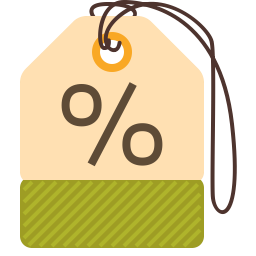 What's selling today? That's really the third part of evergreen products. Not every evergreen product is going to be a good launch product or sell today. Launches have changed. When I launched Big Ticket Dashboard I added a small piece of software as a bonus and found out that people eat up software like it's Oreo cookies or something. People just cannot get enough software right now. If you can add, even as a bonus, some kind of software element today, especially if you're launching, affiliates love it. Like JVZoo. They love promoting as the "product of the day" items that has a software element to it. You've got to look at what's evergreen, but it has to be combined with what's selling now/today. It's a bit of a balance. Nobody said being an entrepreneur was always easy. To get both of those things happening can take talent and brains and it's why we get paid instead of a computer. Otherwise, a computer would just assemble stuff, assemble a sales letter and launch it.
What's selling today? That's really the third part of evergreen products. Not every evergreen product is going to be a good launch product or sell today. Launches have changed. When I launched Big Ticket Dashboard I added a small piece of software as a bonus and found out that people eat up software like it's Oreo cookies or something. People just cannot get enough software right now. If you can add, even as a bonus, some kind of software element today, especially if you're launching, affiliates love it. Like JVZoo. They love promoting as the "product of the day" items that has a software element to it. You've got to look at what's evergreen, but it has to be combined with what's selling now/today. It's a bit of a balance. Nobody said being an entrepreneur was always easy. To get both of those things happening can take talent and brains and it's why we get paid instead of a computer. Otherwise, a computer would just assemble stuff, assemble a sales letter and launch it. Having Software Created
Here's a great question: "What if you don't know how to create software or don't even feel comfortable talking to a programmer?" Talking to programmers can be challenging because they have a language of their own. Here's what you do.When I did Push Button Letters, which is a software program that's been selling since 2001. It cost me about $350 in 2001 to have it created. I don't know how much of it I've sold, but it's been a lot. It's great software. My point is, I wrote out everything in enormous detail. Now, your more sophisticated people, especially stuff that has a GUI, a graphical user interface, they go into Photoshop, usually. However, some of them use Balsamiq or other programs, and they map out their user interface, They basically use a specs doc. For every little button on the GUI, that matches up to a document that explains the functionality of that button for the programmer. You spec it out in extreme detail. The people I know that are successful getting programming done, that's what they do. They leave as little to imagination as they can. They do the GUI interface and they spec out every single function: what it is, what it does, purpose of it, etc. Now, in my case the software I included with Big Ticket Dashboard, it was a bonus. It was really simple and it probably stretched the imagination some to call it software, but I am a copywriter. I didn't have anybody complaining. The software today is one of those elements, and it's hard for software to be evergreen, it's probably not. This is part of an evergreen product and it's funny. It goes back to a Gary Halbert expression. I miss Gary because he was so colorful. Some of the people listening may or may not know him. He was a very famous marketer. Gary said, "Man, I love marketing and sales. I love sending out thousands or mailing pieces of direct mail and just seeing those checks come in, but I'll tell you what. Fulfillment is a bitch." In his case he went to jail because he said he didn't actually fulfill. So for him it was literally a pitch. I don't know what the reality of that situation was, but what I do know is someone has to maintain the products. Even though it's evergreen, there's still got to be maintenance. Somebody's got to do it. Either you have to assign staff or you've got to buckle down and do it yourself. Now there is a solution to this, which is called relaunching. This is something I'm personally going to do because some of my products now need updated. After you update your products, you relaunch them. If somebody has been patient and managed to listen to me this long, here's the payoff. This guy named Alex Jeffreys was number one, two, three, four top JVZoo vendor. I think maybe last year or the year before he was number one. He literally relaunched products every four to six weeks. He would add a bonus or two and call it version three or call it version four. He put up fresh, new ten thousand dollar prizes for affiliates, and he would launch the product and get another three thousand sales just like he had six weeks before. He averaged like two to three thousand units of sales and he would throw in a bonus or two and not even rewrite the sales letter or anything. When it comes to marketing and marketing your digital products, think of your target audience as parade goers. It's not like you get everyone that's ever going to buy your product into a room and you get to sell them all at one time. That's not how it works. That's one of the reasons why this sort of relaunching periodically does work because there are buyers that come into the marketplace and there are buyers that leave the marketplace. It's like a parade. That's one of the things you need to focus in on with regard to this whole idea of relaunching. Before we move on from the software, I just want to point out that you can, in fact, find public or PLR software. PLR software that's almost all the way built and you just have a programmer add an element or two. There is a site called Dynamic Drive where you can get software applications that you can use for free. If you're brand new and you haven't added software, don't start off with huge software. Keep it in the back of your mind or go look for something that's already been created. Something that you could buy either PLR or get for free. I've actually given away free software and shareware before in packages, and I really say, "Hey, yeah, this is a freeware." You don't have to create it, is my point. You can go out and find it elsewhere. It's simple. It's probably two or three hundred dollars to get it programmed if you have something real simple.Examples of Evergreen Products
I'm going to turn the tables here a second, Daniel, because we haven't put you on the hot seat yet. What is the one product you have that is the most evergreen and why? For me it's very easy. It's the "Speakers Cruise Free" book. It's very sexy to be able to trade your talents for free on luxury cruises. There's a big industry around it, but it's really a niche within the speaking niche. I keep buyers coming because I still have affiliate relationships from ten years ago that still send me traffic and it still sells. It's a beautiful thing. Not only that, for me, because mine was so niched down, I'm about the only person that still survived in this niche. If you want anything to do with cruise ship speaking, you go buy my book, which, by the way, is available on Amazon.com. You should buy it if that's one of the things that you're interested in. The second big evergreen product for me actually happens to be my Real Fast Book program. Eighty percent of the United States, I've heard that statistic anyway, wants to write a book in some way, shape, manner or form. They want to write the great American novel or to get a memoir out. For me, I put together a very step by step program on how to do that using CreateSpace and Kindle. By the way, if you go to Realfastbook.com, you can get a seven part free course that steps you through exactly how to go about putting together a print-on-demand book completely for free. Yes, there's going to be an offer at the , very end, but you're still going to get exceptionally good value in the seven video lessons that I put together. That'd be my second one. Daniel, back in early 1900's books were new then and that kind of topic was still selling back then. How to publish a book. They were doing it way back then, believe it or not. It's endlessly fascinating how some of these topics just keep enduring. Some of these topics just keep enduring.
product you have that is the most evergreen and why? For me it's very easy. It's the "Speakers Cruise Free" book. It's very sexy to be able to trade your talents for free on luxury cruises. There's a big industry around it, but it's really a niche within the speaking niche. I keep buyers coming because I still have affiliate relationships from ten years ago that still send me traffic and it still sells. It's a beautiful thing. Not only that, for me, because mine was so niched down, I'm about the only person that still survived in this niche. If you want anything to do with cruise ship speaking, you go buy my book, which, by the way, is available on Amazon.com. You should buy it if that's one of the things that you're interested in. The second big evergreen product for me actually happens to be my Real Fast Book program. Eighty percent of the United States, I've heard that statistic anyway, wants to write a book in some way, shape, manner or form. They want to write the great American novel or to get a memoir out. For me, I put together a very step by step program on how to do that using CreateSpace and Kindle. By the way, if you go to Realfastbook.com, you can get a seven part free course that steps you through exactly how to go about putting together a print-on-demand book completely for free. Yes, there's going to be an offer at the , very end, but you're still going to get exceptionally good value in the seven video lessons that I put together. That'd be my second one. Daniel, back in early 1900's books were new then and that kind of topic was still selling back then. How to publish a book. They were doing it way back then, believe it or not. It's endlessly fascinating how some of these topics just keep enduring. Some of these topics just keep enduring. Recap
Number one is you've got to find your evergreen topic. Daniel just gave, what I think are, two marvelous examples. Number two is format. My preference is a format that's harder to compare the value on. We talked about adding a software element, if possible. The third step is merging it with what's selling right now today. Which is where software comes in. Or other current angles that are selling right now today that you could throw in as a bonus with it. Just because the product itself is evergreen doesn't mean you can't make it extremely timely by throwing in that hot sexy new topic as a bonus with it or as bonuses with it. There's a company that does about five or six hundred million dollars a year just using that marketing method. Agora publishes financial newsletters, like two or three hundred of them and options, stocks. Investing can be kind of dry and boring, but they make it incredibly interesting by adding in these bonuses on the hottest thing going. That's the bonus when you subscribe to the newsletter. They sell this stuff like there's no tomorrow by tapping into what is hot today. Whatever the hot topic is right now today, they're creating a bonus on it, packaging it in when you buy their newsletter.Marketing Evergreen Products
I had a product, and evergreen product called "Book of Secrets." My best marketing secrets I learned in a lifetime. Well, I had typos in the sales letter and typos in the book. I personally don't care about typos. Other people care. I just don't care. I care about information. I don't care about typos. Anyway, Frank Kern comes along and says, "It's one of the greatest sales letters I've read in a long, long time," and people just go off on his Facebook because it has typos in it. I mean, they just go off. The sales are like pouring in from Frank's post. More and more people are seeing this. About a hundred people have commented. Sales are pouring in, pouring in, pouring in. Finally, I fixed the typos and all of the controversy died down and the sales stopped pouring in. I should've just left them in there. The headline had a typo in it. It was really bad. I should've just left them there because people are like, "Oh my God. I can't believe this," and just more sales keep pouring in for it. If it's not broke, don't fix it.Contacting Marlon
I have a Facebook group. On Facebook search, Marlon Sanders, you'll find my Facebook group. If you go to Marlonsanders.com I have a link over to my blog. Marlonsanders.com is an easy way to find me. If you want the modern version of "Creating The Products Quick," that's at the quickiestart.com.Daniel's Real Fast Results Tips: Evergreen products
- It's OK to use more than one format. One evergreen product may be a book, the other may be a dashboard.
- It all boils down to the topic you pick. Make sure your topic is timeless.
- Relaunching old products with new bonuses is an excellent way to go.
Resources
Dashboards by Marlon Sanders: Traffic Dashboard Info Product Dashboard Big Ticket Dashboard Marketing Dashboard Previous Podcasts That Help With Evergreen Products: Profiting From Low and No-Content Books With Kristen Joy Publishing And Profiting From Public Domain Content With Tony Laidig Open Source Software You Can Use As Bonuses - Dynamic Drive Daniel's Best Selling Evergreen Products Realfastbook.com Speakers Cruise Free Welcome to Real Fast Results! We have a great show lined up for you today. I have my good buddy, and mentor, Mr. Mike Stewart. We’re here to chat about something that’s cutting edge. If you want to develop your business so that you are “head and shoulders” above what your competitors are doing, or are willing to do, then you’re in the right place. Throughout this episode, we’ll be talking about building up your platform, your list, and the ways that you connect with the market you serve. More importantly, you’re going to learn how to go about doing this with live video! Mike Stewart has over 40 years of commercial/television experience and production. He definitely knows how to produce quality television. I really do appreciate Mike taking the time to help share his expertise with us. Take it away, Mike!
Welcome to Real Fast Results! We have a great show lined up for you today. I have my good buddy, and mentor, Mr. Mike Stewart. We’re here to chat about something that’s cutting edge. If you want to develop your business so that you are “head and shoulders” above what your competitors are doing, or are willing to do, then you’re in the right place. Throughout this episode, we’ll be talking about building up your platform, your list, and the ways that you connect with the market you serve. More importantly, you’re going to learn how to go about doing this with live video! Mike Stewart has over 40 years of commercial/television experience and production. He definitely knows how to produce quality television. I really do appreciate Mike taking the time to help share his expertise with us. Take it away, Mike! Embrace Live Video
My passion is helping the world understand how audio and video is now being transmitted into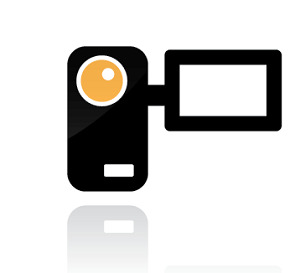 people’s pockets. The result that I feel people should take away from this podcast is that getting content to your community and your audience has never been easier or faster. There’s also never been a bigger reach than there is today. You have to understand that when I got my start, there was no Internet to turn to. We are living in a very exciting time when it comes to communicating with audiences, especially since the principles of television haven’t changed and the production standards haven’t changed. The pipeline has changed. Forty years ago, even if you had millions or billions of dollars that it took to pay for the technology and the team you needed to get your message heard around the world, most people wouldn’t even have had the opportunity. Nowadays, for less than the cost of a few bottles of wine or a trip to a fine restaurant, you could broadcast your content, in high definition, to the world. Your message can simply fall into the pockets of individuals who can follow you, like you, trust you, and ultimately, become paying customers of yours. That’s why it’s an exciting time, and it’s not about just live video either. It’s just that the makers of this technology, such as Facebook, Periscope, and so forth, all see that this pipeline is the way that human beings should receive the content. The Principle of Television says that once you have built an audience, then you have the ability to advertise, which in turn results in profits, connections, and business. You should embrace live video. It’s a powerful opportunity that is staring people in the face, and yet, most people don’t even realize that it’s there for the taking.
people’s pockets. The result that I feel people should take away from this podcast is that getting content to your community and your audience has never been easier or faster. There’s also never been a bigger reach than there is today. You have to understand that when I got my start, there was no Internet to turn to. We are living in a very exciting time when it comes to communicating with audiences, especially since the principles of television haven’t changed and the production standards haven’t changed. The pipeline has changed. Forty years ago, even if you had millions or billions of dollars that it took to pay for the technology and the team you needed to get your message heard around the world, most people wouldn’t even have had the opportunity. Nowadays, for less than the cost of a few bottles of wine or a trip to a fine restaurant, you could broadcast your content, in high definition, to the world. Your message can simply fall into the pockets of individuals who can follow you, like you, trust you, and ultimately, become paying customers of yours. That’s why it’s an exciting time, and it’s not about just live video either. It’s just that the makers of this technology, such as Facebook, Periscope, and so forth, all see that this pipeline is the way that human beings should receive the content. The Principle of Television says that once you have built an audience, then you have the ability to advertise, which in turn results in profits, connections, and business. You should embrace live video. It’s a powerful opportunity that is staring people in the face, and yet, most people don’t even realize that it’s there for the taking. Implementation Steps
First and foremost, you need to understand that live video is based around mobile technology (i.e. Smartphones & tablets). We’ve had online video for over 15 years now, but that required a desktop computer or a laptop. Today, we have what’s called Smartphones, but let’s call it what it is. It’s really a computer, but in fact, the Smartphones of today are 10 times more powerful than the computer that got people on the moon. So, you’re carrying around an extremely potent device in your pocket. Step 1 – Download Free Apps
Step 1 – Download Free Apps
The very first step that you need to take is to download the free apps that will allow you start practicing. If you’ve never gone live before, this is a big road block. You have to get over the fact that you’re looking into a camera and talking to people. You’ll need: - Facebook app
- Facebook Pages Manager app
- Periscope app
- Blab app
- YouTube Connect app
Step 2 – Learn the Elements of Television
 Step number two is to learn the elements of television. Anybody in the world could take a smartphone out of their pocket and start creating a selfie video. However, to come across as a professional, you do need to know the elements of television, which are actually very basic. You need to do a little bit of show-prep beforehand, and really think about the content that you’re going to create. What problem are you going to talk about, and what solution are you going to share with your audience? Every successful radio and television show since this industry began has had a staff of writers and production people. They also always had a system in place to ensure that they made the best show possible every time they did one. On top of that, they constantly strived to improve what they were doing and up their game. Yes, it is possible for you to turn on your camera and just start talking, but you’re probably not going to build a very big audience this way. In real television and radio, if your ratings are horrible, your show is going to get cancelled. This is why it’s important to begin with some show-prep. You need to think about specifics and make decisions accordingly. For instance, you may decide that every morning you are going to do a live show at 9 am EST every Monday morning for 30 minutes, and each week you are going to have incredible content that completely blows people away, answers people’s questions, and provides them with great solutions. The minute you finish one show, you’ll need to start prepping for the next one, and the next one, and so on. I like to study late night television. They are constantly trying to have the best guests and the most awesome routines. Further, they create elements that become familiar and are liked by their audience. If you want to know how to do this in the best possible way, you’ll want to study highly rated television shows, and talk shows in particular. Take a close look at what they are doing because it’s all based on principles that have been proven over the span of decades. Johnny Carson created the same late-night television format that has worked for 50 years, and the reason it does work so well is because people like it. I was fortunate enough, in 1980, to produce a record for Ted Turner called “He Was Cable When Cable Wasn’t Cool.” Ted Turner… They used to call him ‘The Mouth of the South’ because he was here from Atlanta. A guy named Bob Neal and Ted Turner hired me to produce this record. You can watch the video below. There’s about a 3-second clip of me when I was 25 years old. [youtube https://www.youtube.com/watch?v=9K0J12W0hcw?rel=0&showinfo=0] It was the 1980’s… a long, long time ago, but I was amidst hearing Ted Turner say something that we all need to pay attention to. He walked into the session that night and he said,”‘You know what I’m going to do? I’m going to build a 24-hour a day news channel and put it up on satellite.” And, I sat there as a 25-year-old and said, ‘”Who’s going to watch the news 24 hours a day?” I was young and dumb. Ted Turner had had a vision for CNN way back then, and I just downplayed it. You know, TBS was Ted’s. He bought the local TV station, Channel 17, which later became the Super-station, TBS. And he said, “You know? We’ve got over 7 million subscribers to WTBS. That’s more than any local station in the United States.’” I remember going, “Wow! Seven million people can watch our local TV station.” That didn’t mean they were watching… that means the reach through cable, satellite networks and cable TV subscribers were only 7 million people. With podcasts, with live Facebook, with Periscope, you have a reach right now, every one of you, of 7 billion, plus, and growing. It took years of marketing and consistency to get people to start tuning into CNN. It also took a lot of money, technology, and teams to make this happen. The different elements of television were all implemented in order to make CNN the brand that it is today. It’s imperative that you have a vision and that you plan out how to make that vision a reality if you want to create anything lasting out of all of this. Back in 1980, Ted Turner had the resources, the money, and the team to reach the world via satellite. That’s why it was called “Cable News Network”. That was the pipeline that only wealthy people, like Ted Turner, could reach. You can do it with a $50 microphone and a computer today.
Step number two is to learn the elements of television. Anybody in the world could take a smartphone out of their pocket and start creating a selfie video. However, to come across as a professional, you do need to know the elements of television, which are actually very basic. You need to do a little bit of show-prep beforehand, and really think about the content that you’re going to create. What problem are you going to talk about, and what solution are you going to share with your audience? Every successful radio and television show since this industry began has had a staff of writers and production people. They also always had a system in place to ensure that they made the best show possible every time they did one. On top of that, they constantly strived to improve what they were doing and up their game. Yes, it is possible for you to turn on your camera and just start talking, but you’re probably not going to build a very big audience this way. In real television and radio, if your ratings are horrible, your show is going to get cancelled. This is why it’s important to begin with some show-prep. You need to think about specifics and make decisions accordingly. For instance, you may decide that every morning you are going to do a live show at 9 am EST every Monday morning for 30 minutes, and each week you are going to have incredible content that completely blows people away, answers people’s questions, and provides them with great solutions. The minute you finish one show, you’ll need to start prepping for the next one, and the next one, and so on. I like to study late night television. They are constantly trying to have the best guests and the most awesome routines. Further, they create elements that become familiar and are liked by their audience. If you want to know how to do this in the best possible way, you’ll want to study highly rated television shows, and talk shows in particular. Take a close look at what they are doing because it’s all based on principles that have been proven over the span of decades. Johnny Carson created the same late-night television format that has worked for 50 years, and the reason it does work so well is because people like it. I was fortunate enough, in 1980, to produce a record for Ted Turner called “He Was Cable When Cable Wasn’t Cool.” Ted Turner… They used to call him ‘The Mouth of the South’ because he was here from Atlanta. A guy named Bob Neal and Ted Turner hired me to produce this record. You can watch the video below. There’s about a 3-second clip of me when I was 25 years old. [youtube https://www.youtube.com/watch?v=9K0J12W0hcw?rel=0&showinfo=0] It was the 1980’s… a long, long time ago, but I was amidst hearing Ted Turner say something that we all need to pay attention to. He walked into the session that night and he said,”‘You know what I’m going to do? I’m going to build a 24-hour a day news channel and put it up on satellite.” And, I sat there as a 25-year-old and said, ‘”Who’s going to watch the news 24 hours a day?” I was young and dumb. Ted Turner had had a vision for CNN way back then, and I just downplayed it. You know, TBS was Ted’s. He bought the local TV station, Channel 17, which later became the Super-station, TBS. And he said, “You know? We’ve got over 7 million subscribers to WTBS. That’s more than any local station in the United States.’” I remember going, “Wow! Seven million people can watch our local TV station.” That didn’t mean they were watching… that means the reach through cable, satellite networks and cable TV subscribers were only 7 million people. With podcasts, with live Facebook, with Periscope, you have a reach right now, every one of you, of 7 billion, plus, and growing. It took years of marketing and consistency to get people to start tuning into CNN. It also took a lot of money, technology, and teams to make this happen. The different elements of television were all implemented in order to make CNN the brand that it is today. It’s imperative that you have a vision and that you plan out how to make that vision a reality if you want to create anything lasting out of all of this. Back in 1980, Ted Turner had the resources, the money, and the team to reach the world via satellite. That’s why it was called “Cable News Network”. That was the pipeline that only wealthy people, like Ted Turner, could reach. You can do it with a $50 microphone and a computer today. Great Content Is the Key
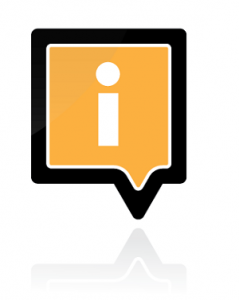 It’s wonderful that this pipeline is now available to everyone. However, you have to remember that it was the content that made the networks become hits. It was the writing, the prep work, and the forethought. They thoroughly thought about what their audience would embrace. That’s what you need to take away from this. The pipeline has been given to you for free, and the stars have come about using YouTube, podcasts, and so on. The new horizon is going live. There are two big benefits to going live. The minute you’re done, your content is done, and you can build an audience. Eight o’clock on Sunday nights, America used to tune into The Ed Sullivan Show. People flocked by the millions to view this show because they knew that the show would have amazing content, as it did each and every week. That’s just one of many examples that could be provided, but it does illustrate how a TV show can capture people’s attention so well and make completely devoted fans of them. You should strive to provide content that people can depend on and enjoy with each show you produce. That means you’ll need to prep for your shows and you need to consistently deliver quality content. If you’re not willing to commit to that, then the product that you produce won’t last. It’s all well and good to play around and publicize silly, slightly entertaining content, like that which one sees on social media all of the time nowadays. If you want business, however, you’re going to need to utilize some of the systems that TV has been following for years.
It’s wonderful that this pipeline is now available to everyone. However, you have to remember that it was the content that made the networks become hits. It was the writing, the prep work, and the forethought. They thoroughly thought about what their audience would embrace. That’s what you need to take away from this. The pipeline has been given to you for free, and the stars have come about using YouTube, podcasts, and so on. The new horizon is going live. There are two big benefits to going live. The minute you’re done, your content is done, and you can build an audience. Eight o’clock on Sunday nights, America used to tune into The Ed Sullivan Show. People flocked by the millions to view this show because they knew that the show would have amazing content, as it did each and every week. That’s just one of many examples that could be provided, but it does illustrate how a TV show can capture people’s attention so well and make completely devoted fans of them. You should strive to provide content that people can depend on and enjoy with each show you produce. That means you’ll need to prep for your shows and you need to consistently deliver quality content. If you’re not willing to commit to that, then the product that you produce won’t last. It’s all well and good to play around and publicize silly, slightly entertaining content, like that which one sees on social media all of the time nowadays. If you want business, however, you’re going to need to utilize some of the systems that TV has been following for years. How to Prep for Shows and Provide Consistency
You’ve got to know your audience. In television and radio, they use focus groups. Basically, this is just a way to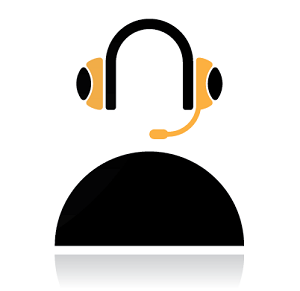 go about interviewing the audience you are targeting and asking them what it is that they want. You can easily do this kind of thing online now. You can email people and survey them to find out what they would like. That’s show prep. When you know what your audience wants, you can deliver those things with your content. You might think that you already know what they want, but you may be wrong. That’s why you need to survey them and ask them questions. The entertainment industry is a slightly different animal. They use focus groups to try out different angles, and when they find a winner, everyone copycats it. The information you are being provided today focuses on how business owners can use live streaming and other forms of video content to share their expertise and better reach their audience of potential clients and customers. There was a “blab” that interested me. An attorney was speaking with a social media personality. The social media person was asking the attorney if it was legal to play music in his live streams. This was a very good show, because it answered questions that people had about the legal aspects of copyrights. The makers of this show surely crafted the content around questions that people were asking, and addressing those needs was what made the show a hit with me and most likely the rest of the viewers that day. In fact, the podcast episode that this very text is based upon addresses the questions surrounding why live video was so important in this day and age. You can do the same with just about any topic. Find out what people want to know, and then get an expert to answer those questions on your video, podcast, live streaming, etc. Live video is the fastest and easiest way to create content. When you get good at going live, your content will be done in the speediest way possible. As I mentioned earlier, I am big fan of late night television. You can learn a lot by watching these pros. I went to watch David Letterman about six times while they were shooting it. The main purpose I had for attending was to watch how these shows are made. It took a team of 50 people, and these guys had the process down. The best part about it was that if the show started at 4:30 pm, it was done by 5:30. Since they pre-taped these shows, if something major got screwed up, they could stop and edit it out. Still, 99 times out of 100, what happened within that 60-minute time frame was what aired that night in the show’s time slot. The magic of live television is that it’s fast and the content requires no editing. The minute you’re done, you’re done. Shows like this aren’t expected to be perfect, and late night television is never scripted. Part of what’s so entertaining about it is that no one knows what’s going to happen. The host has a series of questions, and if the people are good guests, the content will be good. I recommend that you watch what people do on these successful TV shows and emulate that to the best of your ability. It’s also very important that you prep well for your shows. Just these two little tips will allow you to surpass a large majority of your competition. It’s also quite imperative that you stay consistent with your show, especially when it comes to how you schedule your episodes. Of course, when and for how long you host your shows is totally up to you. However, I recommend having a show that’s no less than 15 minutes long, held once a week. Remember, one of the reasons why The Ed Sullivan Show was so successful was because people knew it was going to come on at the same time each week, and people made sure that they were there to view it. A big difference between one of these types of shows and one of your own is that you can monetize your own show better than CBS could back in the day because there’s much less overhead involved for you nowadays. Another advantage that we have today is that live streaming allows for more interaction. You can’t really interact with most television shows, but with live streaming, you are able to submit questions, make comments, and even shape what goes on in the show to a certain degree. You can even challenge what’s being said. This helps to make these types of shows even more entertaining and informative.
go about interviewing the audience you are targeting and asking them what it is that they want. You can easily do this kind of thing online now. You can email people and survey them to find out what they would like. That’s show prep. When you know what your audience wants, you can deliver those things with your content. You might think that you already know what they want, but you may be wrong. That’s why you need to survey them and ask them questions. The entertainment industry is a slightly different animal. They use focus groups to try out different angles, and when they find a winner, everyone copycats it. The information you are being provided today focuses on how business owners can use live streaming and other forms of video content to share their expertise and better reach their audience of potential clients and customers. There was a “blab” that interested me. An attorney was speaking with a social media personality. The social media person was asking the attorney if it was legal to play music in his live streams. This was a very good show, because it answered questions that people had about the legal aspects of copyrights. The makers of this show surely crafted the content around questions that people were asking, and addressing those needs was what made the show a hit with me and most likely the rest of the viewers that day. In fact, the podcast episode that this very text is based upon addresses the questions surrounding why live video was so important in this day and age. You can do the same with just about any topic. Find out what people want to know, and then get an expert to answer those questions on your video, podcast, live streaming, etc. Live video is the fastest and easiest way to create content. When you get good at going live, your content will be done in the speediest way possible. As I mentioned earlier, I am big fan of late night television. You can learn a lot by watching these pros. I went to watch David Letterman about six times while they were shooting it. The main purpose I had for attending was to watch how these shows are made. It took a team of 50 people, and these guys had the process down. The best part about it was that if the show started at 4:30 pm, it was done by 5:30. Since they pre-taped these shows, if something major got screwed up, they could stop and edit it out. Still, 99 times out of 100, what happened within that 60-minute time frame was what aired that night in the show’s time slot. The magic of live television is that it’s fast and the content requires no editing. The minute you’re done, you’re done. Shows like this aren’t expected to be perfect, and late night television is never scripted. Part of what’s so entertaining about it is that no one knows what’s going to happen. The host has a series of questions, and if the people are good guests, the content will be good. I recommend that you watch what people do on these successful TV shows and emulate that to the best of your ability. It’s also very important that you prep well for your shows. Just these two little tips will allow you to surpass a large majority of your competition. It’s also quite imperative that you stay consistent with your show, especially when it comes to how you schedule your episodes. Of course, when and for how long you host your shows is totally up to you. However, I recommend having a show that’s no less than 15 minutes long, held once a week. Remember, one of the reasons why The Ed Sullivan Show was so successful was because people knew it was going to come on at the same time each week, and people made sure that they were there to view it. A big difference between one of these types of shows and one of your own is that you can monetize your own show better than CBS could back in the day because there’s much less overhead involved for you nowadays. Another advantage that we have today is that live streaming allows for more interaction. You can’t really interact with most television shows, but with live streaming, you are able to submit questions, make comments, and even shape what goes on in the show to a certain degree. You can even challenge what’s being said. This helps to make these types of shows even more entertaining and informative. Types of Microphones
 A different type of advantage that we have today is that you can purchase studio-quality equipment very inexpensively. A good place to find great microphones, in particular, is Sweetwater.com. If you don’t have much of a budget, that’s okay. You can still call a rep and let them know what your budget is. There are so many different microphones out there, and you can find them available at all types of different price ranges. Many of the inexpensive ones are still high-quality and can do just about as good of a job as the more expensive ones. Now, you don’t want to use a poor-quality microphone for your videos, live streaming, etc. One of my favorite types of microphones is the Apogee iPad/iPhone mic. It is built and designed to plug directly into your Apple mobile devices. This microphone costs around $200, but it’s as good as any studio microphone I’ve ever used. No matter what you decide to use, don’t skimp on buying a good-quality mic. Again, there are some cheaper versions that work just as well as the more expensive ones, but you should really take some time to shop around and make sure that you are getting something that will give you the best quality sound. The iRig HD is also a quality mic that you can use. You can plug it into your computer’s USB port or even into your iPad or iPhone. One of the things that makes this particular mic so great is that it’s very forgiving, meaning that it really only picks up your voice, even if there’s a lot of background noise going on. You know, you’re never going to eliminate that completely, but for the most part, your voice comes through clearly and a lot of the background noise is eliminated.
A different type of advantage that we have today is that you can purchase studio-quality equipment very inexpensively. A good place to find great microphones, in particular, is Sweetwater.com. If you don’t have much of a budget, that’s okay. You can still call a rep and let them know what your budget is. There are so many different microphones out there, and you can find them available at all types of different price ranges. Many of the inexpensive ones are still high-quality and can do just about as good of a job as the more expensive ones. Now, you don’t want to use a poor-quality microphone for your videos, live streaming, etc. One of my favorite types of microphones is the Apogee iPad/iPhone mic. It is built and designed to plug directly into your Apple mobile devices. This microphone costs around $200, but it’s as good as any studio microphone I’ve ever used. No matter what you decide to use, don’t skimp on buying a good-quality mic. Again, there are some cheaper versions that work just as well as the more expensive ones, but you should really take some time to shop around and make sure that you are getting something that will give you the best quality sound. The iRig HD is also a quality mic that you can use. You can plug it into your computer’s USB port or even into your iPad or iPhone. One of the things that makes this particular mic so great is that it’s very forgiving, meaning that it really only picks up your voice, even if there’s a lot of background noise going on. You know, you’re never going to eliminate that completely, but for the most part, your voice comes through clearly and a lot of the background noise is eliminated. How to Get Started
Keep in mind that you don’t have to use a great microphone to practice. The built in microphones on most smart devices are very good. One thing that you might try is practicing on Facebook Live because you can do this by yourself and not have to go public until you get comfortable. You can start right now by using your smartphone and Facebook Live to practice. Also, if you don’t have a business page on Facebook, you should build one today. It’s okay to use your regular profile to be social, but you’ll need a business page if you want to be professional. Then, you can start streaming live to that page or to a closed business group for practice. Practice privately and look at your results. You can also practice in front of an open group or send your streaming video to an event page, if you like. All of these things are free to use on Facebook, and if you send your streaming to a closed group or a business page with no one on it yet, you can practice privately. This is a great way to start. For your first step, you’ll want to get the Facebook Pages Manager app so that you can set up a business page and practice live streaming to it. The Facebook app is a wonderful app to use for this because it allows you to switch between the cameras in your phone. A mistake that people make a lot in their live streaming is that they are constantly on camera. That’s not quality filming. If you’ve ever paid attention to the camera work as you watch TV, then you know that the visual is constantly changing, even on talk shows and the news. The cameras never stay on the same image for more than 10 seconds. Our eyes get tired of seeing the same image for any longer than that, so you should always switch between images and angles every 7-10 seconds, at the most. That’s a television principle that you need to follow. When you are filming with a mobile device, you should never hold it in your hand as you do so. Keep that in mind as well. Use some sort of selfie stick, tripod, or mount. It’s okay to take a selfie photo, but selfie videos look unprofessional. When you try to hold a camera as you’re filming, it shakes too much. This is true for even the steadiest-handed people. You don’t want to make your audience members nauseous, so get some sort of mount for your camera. These are dirt-cheap and can help you to make much better-looking videos. One tool that you might try is the iPad Tablet Mount. You can attach any tablet to this tripod, regardless of the size. Part of your prep-work is going to be setting up a nice background for your shoot. You can shoot your video or live stream recording in an office setting or something like that, but it needs to be clean and well-lit. You should have lighting on your face, and there shouldn’t be too many shadows lurking in the background. Again, you should also be free of the camera you are using, not trying to hold it yourself. You really can just use your cell phone to do this sort of thing, if you’ll just invest in a couple of little tools to make your video quality a bit better. Again, all of this advice is based upon television principles that have been around since the 40’s. There are five elements of television that I like to teach people. If you’re not using these, then your videos will be lower quality than most television programs. The elements you need to apply are:
devices are very good. One thing that you might try is practicing on Facebook Live because you can do this by yourself and not have to go public until you get comfortable. You can start right now by using your smartphone and Facebook Live to practice. Also, if you don’t have a business page on Facebook, you should build one today. It’s okay to use your regular profile to be social, but you’ll need a business page if you want to be professional. Then, you can start streaming live to that page or to a closed business group for practice. Practice privately and look at your results. You can also practice in front of an open group or send your streaming video to an event page, if you like. All of these things are free to use on Facebook, and if you send your streaming to a closed group or a business page with no one on it yet, you can practice privately. This is a great way to start. For your first step, you’ll want to get the Facebook Pages Manager app so that you can set up a business page and practice live streaming to it. The Facebook app is a wonderful app to use for this because it allows you to switch between the cameras in your phone. A mistake that people make a lot in their live streaming is that they are constantly on camera. That’s not quality filming. If you’ve ever paid attention to the camera work as you watch TV, then you know that the visual is constantly changing, even on talk shows and the news. The cameras never stay on the same image for more than 10 seconds. Our eyes get tired of seeing the same image for any longer than that, so you should always switch between images and angles every 7-10 seconds, at the most. That’s a television principle that you need to follow. When you are filming with a mobile device, you should never hold it in your hand as you do so. Keep that in mind as well. Use some sort of selfie stick, tripod, or mount. It’s okay to take a selfie photo, but selfie videos look unprofessional. When you try to hold a camera as you’re filming, it shakes too much. This is true for even the steadiest-handed people. You don’t want to make your audience members nauseous, so get some sort of mount for your camera. These are dirt-cheap and can help you to make much better-looking videos. One tool that you might try is the iPad Tablet Mount. You can attach any tablet to this tripod, regardless of the size. Part of your prep-work is going to be setting up a nice background for your shoot. You can shoot your video or live stream recording in an office setting or something like that, but it needs to be clean and well-lit. You should have lighting on your face, and there shouldn’t be too many shadows lurking in the background. Again, you should also be free of the camera you are using, not trying to hold it yourself. You really can just use your cell phone to do this sort of thing, if you’ll just invest in a couple of little tools to make your video quality a bit better. Again, all of this advice is based upon television principles that have been around since the 40’s. There are five elements of television that I like to teach people. If you’re not using these, then your videos will be lower quality than most television programs. The elements you need to apply are: - Changing Scenes – Never focus on a single image for any length of time. Watch 60 Minutes. When someone talks, the camera switches to the next guy, and then it goes back to the interviewer. After that, the camera may move to a cutaway shot. The view is constantly changing.
- Good, Close-Mic Audio – Many people make the mistake of being too far from the microphone, and this makes the audio sound poor and echoic.
- Lower Third Text – This just means that any text you use should be located within the lower-third portion of the screen.
- Music – You should include theme songs, musical transitions, and the like in your videos and streams. The only trick to this is that you have to use royalty-free music or music you have a license to.
- Sound Effects – People forget how powerful sound effects can be. Things like the chirping of crickets at night are little things that no one pays attention to, but subliminally at least, they make a difference. Movie and television producers painstakingly take the time to create that illusion of reality with sound.
Connect with Mike
You can actually go to MikeStewartPodcast.com. Mike’s podcast is all about audio and video strategies that people can use to make better audio and television for the Web. Also, Mike Stewart, Jeff Herring, and Daniel Hall all did a webinar together where they talked about a lot of this same stuff. During the webinar, these men demoed several different apps. You should check this out if you’re interested in learning more about how to create live streams professionally.Daniel's Real Fast Results Tips: Live Video
- Study late night talk shows
- Practice using the Apps Mike recommends
- Prep for your show
- Invest in a good microphone
How To Do Live Video Training
[youtube https://www.youtube.com/watch?v=9njt-By2yzQ?rel=0&showinfo=0]Click Here For More Info
Resources
Free Apps: Facebook app iOs Click Here | Android Click Here Facebook Pages Manager app Periscope app Blab app YouTube Connect app (still in the development as of publication date) Video Equipment: Sweetwater.com iPad Tablet Mount Recommended Microphones: Apogee iPad/iPhone mic iRig HDReal Fast Results Community
If you are diggin’ on this stuff and really love what we’re doing here at Real Fast Results, would you please do me a favor? Head on over to iTunes, and make sure that you subscribe to this show, download it, and rate & review it. That would be an awesome thing. Of course, we also want to know your results. Please share those results with us at http://www.realfastresults.com/results. As always, go make results happen! Hello! Welcome to another episode of Real Fast Results. For this episode, I have somebody that I really look up to and have for a very long time. I also follow him. I believe you should follow him very closely as well. That's my good friend and mastermind partner, Jim Edwards. In today's episode, we're going to cover how to go about putting together and writing your book, your eBook or your Kindle book, in 3 hours or less. Let's face it. We want a book and hardly any of us have the time to actually write a book. Anything that can manifest that result quickly. In other words, have a book that represents you and your company and your ideas well, and do it quickly. That's what we're all about here at Real Fast Results. Jim has a very streamlined process that has this ability to crank out a high quality piece of prose or a high quality manuscript that's suitable for publishing as an eBook, a Kindle book, etc.
Hello! Welcome to another episode of Real Fast Results. For this episode, I have somebody that I really look up to and have for a very long time. I also follow him. I believe you should follow him very closely as well. That's my good friend and mastermind partner, Jim Edwards. In today's episode, we're going to cover how to go about putting together and writing your book, your eBook or your Kindle book, in 3 hours or less. Let's face it. We want a book and hardly any of us have the time to actually write a book. Anything that can manifest that result quickly. In other words, have a book that represents you and your company and your ideas well, and do it quickly. That's what we're all about here at Real Fast Results. Jim has a very streamlined process that has this ability to crank out a high quality piece of prose or a high quality manuscript that's suitable for publishing as an eBook, a Kindle book, etc. People Publish Books For Different Reasons
I think the number one reason why you want to have a book might be different for different people. However, it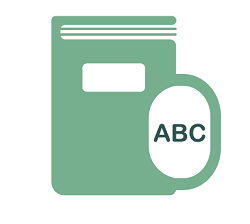 comes down to increased credibility. Everybody respects somebody who's got a book. If you've got a book and you can hold it up and show it to somebody. Here is my most recent one. Making Money with Kindle Books: Myths, Misconceptions, and the Truth Every Entrepreneur Needs to Know. The gist of it is that if you're a coach, it gives you the credibility to attract new coaching students. If you're a speaker, it gives you the credibility to be speaking on a topic. If you're an info marketer, it gives you something to sell. If you're a professional of any type in business, it gives you massive credibility.
comes down to increased credibility. Everybody respects somebody who's got a book. If you've got a book and you can hold it up and show it to somebody. Here is my most recent one. Making Money with Kindle Books: Myths, Misconceptions, and the Truth Every Entrepreneur Needs to Know. The gist of it is that if you're a coach, it gives you the credibility to attract new coaching students. If you're a speaker, it gives you the credibility to be speaking on a topic. If you're an info marketer, it gives you something to sell. If you're a professional of any type in business, it gives you massive credibility. Example
I'm going to tell you a real quick story about my very first book that I self-published. The reason I self-published it, was not to sell the book, but it was actually to use it to help me get business. At the time, I was a real estate agent. I wrote a book on how to sell your house yourself. The whole reason I created the book was to be able to use it as a tool to meet people who were trying to sell their house themselves. I would give them a copy of my book. Show them I was an expert. If they ended up not being able to sell their house themselves, or once they read about exactly how to do it and they decided, "Hey, I don't actually want to do this." Then I was able to successfully list a lot of their houses because they trusted me. I ended up being an award-winning realtor and winning tons of different listing contests because I was able to leverage that book. There are a lot of ways to use a book. It really just depends on whether you want to use it to sell it to make money, use it to build your list, use it to increase credibility, get more clients or a host of other reasons. Nothing bad comes from having a book that you can hold up and show somebody, "Hey, I've written a book. I have a book on this topic." Especially if they're in your target market.8 Steps To Turn An Interview Into A Book
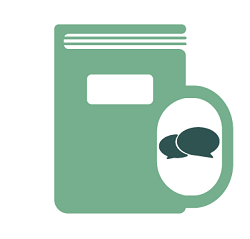 One quick thing before I give you the steps. You need to reprogram yourself. Stop thinking in terms of writing a book, and start thinking in terms of creating a book. Writing a book is hard. It means sitting down and typing at 40 to 50 words per minute for days and weeks on end and driving yourself nuts. When you think of creating a book: creating a book means that you create the content. We'll do that by actually just talking the book out. Literally talking it out by having a conversation with a friend over the phone. Something all of us have been doing since we were 5 years old and figured out how to dial the phone. On overview of the 8 Steps:
One quick thing before I give you the steps. You need to reprogram yourself. Stop thinking in terms of writing a book, and start thinking in terms of creating a book. Writing a book is hard. It means sitting down and typing at 40 to 50 words per minute for days and weeks on end and driving yourself nuts. When you think of creating a book: creating a book means that you create the content. We'll do that by actually just talking the book out. Literally talking it out by having a conversation with a friend over the phone. Something all of us have been doing since we were 5 years old and figured out how to dial the phone. On overview of the 8 Steps: - Step one is to define your audience.
- Step two is to prepare the interview that's going to become your book. Your book's content is going to be created as an interview.
- Step three is to order your book's cover before you even create the content. We'll talk about why.
- Step four is to actually record the interview for free using your phone. I'll show you a couple of ways to do that.
- Step five is to have that conversation, that recording transcribed.
- Step six is to do a light edit of that transcription.
- Step seven is to hire somebody to format that transcript and turn it into a book format, which is only going to cost you 5 or 10 bucks.
- Step eight is actually pretty anti-climactic because you're just going to upload a couple of files to Kindle. Poof or I should say presto. Not poof. Presto, you are a published author. There are a couple of other things you can do to actually turn that Kindle book into a print book that will cost you not very much at all.
Step 1 - Define Your Audience
Step number one is define your audience. People talk a lot about audiences and segmentation. It actually comes down to just 3 simple questions.- Who are you creating the book for? Who? Who's the audience for this book?
- What are you creating the book about? What's the topic? The best topics to create books around are problems. To solve somebody's problem is the number one thing you want to do. I don't know the exact statistics, but I think it's four times as many people will act to solve a problem or to avoid pain than they will to get a result. Your best topics are solving problems.
- What do they want? What's the payoff that they're looking for? It should be something that's pretty severe as far as the problem goes.
Step 2 - Prepare The Interview
Step two is you need to prepare the interview. That's really 2 parts.Part 1 - You want to have an angle for your interview.
Number one, you want to have an angle for your interview. Are you going to be talking mainly about mistakes? Are you going to give people a road map? Are you going to give them a beginner's guide? Are you going to give them tips, tricks, and secrets? You need to have a track that you're going to run down for doing an interview. It can't just be a series of random questions. It's got to have a track, so that it takes them from A to B to Z in an organized way that makes sense. That's how books are put together.Part 2 - Put together the questions.
The second part is to put together the questions. Most people talk between 110 and 150 words per minute. Which means a 60 to a 90-minute interview is a perfect length for a Kindle book. A good length for a Kindle book is somewhere between 4,000, 5,000, and 10,000 words. Let's say, between 4 and 10,000 words, which typically comes out to be an hour, hour and a half of talk time. Parts of an interview:- Your interview needs to have an introduction that obviously introduces you, who you are and why they should listen to you.
- You have the body of the interview, which is basically just a series of questions, again, along a track. What's the first mistake people make? What's another mistake that people make that cost them time? What's another mistake that people make that they think is actually the right thing to do, but is the worst thing they could ever do? Those types of things.
- You have a conclusion. The conclusion is basically, "Thanks for joining us. Here are some instructions for how to get more results or take the next step." That's where you really want to drive people to your website and get them to sign up with you.
Step 3 - Order Your Book Cover
Step three is to actually order your book cover before you actually do the interview with your friend over the phone.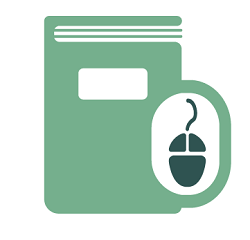 The reason you do that is twofold. Number one, it keeps you from having to wait to get your cover once you've done the interview and have the book ready. Number two, it helps you to build momentum. I order my covers from Fiverr.com. At Fiverr.com, Kindle covers will cost you $10 or $20 depending on the options that you use. If you know you want to turn your Kindle book into a print book, there are a lot of people that'll do a cover for you that's a Create Space cover and a Kindle cover. You kill 2 birds with 1 stone. That'll cost you about $20 or $30. The only caveat to that is if you're doing Create Space, you're going to have to write some back cover copy. One of the easiest ways to do that, is just to tell people, "These are the questions we're going to answer in this interview." They're the bullets for your back cover copy. You don't have to make it tough. This really helps you build momentum.
The reason you do that is twofold. Number one, it keeps you from having to wait to get your cover once you've done the interview and have the book ready. Number two, it helps you to build momentum. I order my covers from Fiverr.com. At Fiverr.com, Kindle covers will cost you $10 or $20 depending on the options that you use. If you know you want to turn your Kindle book into a print book, there are a lot of people that'll do a cover for you that's a Create Space cover and a Kindle cover. You kill 2 birds with 1 stone. That'll cost you about $20 or $30. The only caveat to that is if you're doing Create Space, you're going to have to write some back cover copy. One of the easiest ways to do that, is just to tell people, "These are the questions we're going to answer in this interview." They're the bullets for your back cover copy. You don't have to make it tough. This really helps you build momentum. Step 4 - Record The Interview
Step four is to actually record the interview for free using your phone. You do the interview as a conversation over the phone. There are 2 methods you can use:- You can use your smartphone. Smartphones actually have amazing microphones in them. There's an app called the RINGR. It works on iPhone and Android. The gist of how it works is, you get on the phone. Your friend gets on the phone. You push a couple of buttons. RINGR will record both sides of the conversation. When you're done with the conversation, both phones upload the recording to the RINGR website. RINGR emails an MP3 file, an audio file of both those mashed together. It sounds really good, almost as if you two were in the same room. It's absolutely free.
- FreeConferenceCall.com. If you don't have a smartphone, then you can log on to FreeConferenceCall.com. You can create a free account. You have a phone number and a PIN number. You both call in. You're on the web at the same time with your little interface on FreeConferenceCall.com. You hit the record button. You talk. Ask, answer questions. You're done. You hit stop. You download the MP3 file. It's super easy and simple.
Step 5 - Have The Interview Transcribed
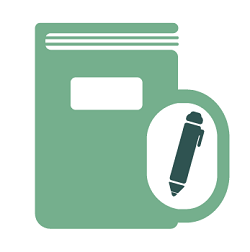 Step number five is you send that MP3 audio fileto a site called Rev.com to have it transcribed. I like Rev.com because it's really easy. Some people ask, "Why couldn't I go to Fiverr.com?" Or "If I've got this" or "I go to that" etc. Rev.com is like the Walmart of transcriptions. They have a bunch of people doing transcriptions. If you have a problem, you can get it fixed. They charge a dollar a minute. If you're going to do a 60-minute transcription, then it costs you $60. You'll know exactly how much it's going to cost you because when you upload it, they'll see how long it is and they say, "It's 61 minutes. Give us $61, and we'll have it transcribed." Daniel and I have both used Rev.com a lot. They are an excellent service.
Step number five is you send that MP3 audio fileto a site called Rev.com to have it transcribed. I like Rev.com because it's really easy. Some people ask, "Why couldn't I go to Fiverr.com?" Or "If I've got this" or "I go to that" etc. Rev.com is like the Walmart of transcriptions. They have a bunch of people doing transcriptions. If you have a problem, you can get it fixed. They charge a dollar a minute. If you're going to do a 60-minute transcription, then it costs you $60. You'll know exactly how much it's going to cost you because when you upload it, they'll see how long it is and they say, "It's 61 minutes. Give us $61, and we'll have it transcribed." Daniel and I have both used Rev.com a lot. They are an excellent service. Step 6 - Lightly Edit The Transcription
Step six is you do a light edit of the transcript when you get it back. Now, here's the thing. I have seen this is where a lot of people get derailed. You need to understand that the way you talk is different than the way you're going to write. You're not going to rewrite what you've spoken. What you're going to do is go through the transcript and check for spelling and punctuation. Or if you have a friend who's better at spelling and punctuation than you are, then do that. I always like to just hit F7 in my Word because that's a spelling and punctuation and grammar check from my buddy, Bill Gates. The other thing I like to do is break up what I call "chunky paragraphs." With eBooks and books now, the rules of paragraphs and grammar learned in high school don't apply as much as they used to. I like to break up anything that's over 4 lines into its own paragraph, 4 or 5 lines. I don't worry about proper paragraph structure. I just break them up, especially for Kindle. A very important thing you need to do is add your author bio. You're going to want to add a call to action. A call to action is basically "go to my website and register" or "this book is one of the easiest things" or "go to my website and get a video" or "one of the easiest things you can do," etc. Here's a cool tip. I wasn't actually planning on revealing this. Listen very carefully because this is super cool. The whole reason you're writing a book, in many cases, is to get people onto your list. We have created this book by doing an audio interview. Therefore, the audio book version of your book is already done. You have the audio done. What you can do is offer the audio book version for free, if they will go to your website and register. That's a neat little tip. You can offer that right at the beginning of the book. One of the important things you want to do is add a cover letter that explains to people right at the beginning of the book, "Hey, I just wanted to let you know that this book was originally created as a live interview. That's why it reads as a conversation and maybe a little different than what you're used to with a regular book." As soon as people read that, they go, "Oh, okay. I understand. Now, this reads like we're having a conversation," as opposed to "Hey, this doesn't read like a book." If you just add that simple little cover letter and explain that it was done as a live event or a live conversation or a live interview, people are totally fine with it. That's an important thing to remember. Don't forget the cover letter that it's a live interview format.Step 7 - Hire Someone To Format Your Book
I like to think of this like a bobsled run. We're coming into the homestretch because now that you've got this thing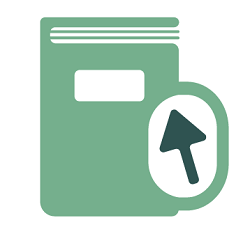 edited, all you have to do is get it formatted for Kindle. That's we're going to go back to Fiverr.com. Where we got our cover made. We're going to hire somebody to do formatting. You just do a search for Kindle formatting or a search for Create Space formatting. If you're going to have somebody format it for Create Space, which is Amazon's print on-demand arm, then you can often find people who will do a 2-for-1 deal. "I'll format for Create Space and Kindle for $20." $10 or $15. I don't know. Whatever it is. It's usually based on the number of pages. Typically though, doing an interview for 60 or 90 minutes, puts you at the lower end to the mid-range of what people are charging. It's not very much money. Here's the tip. Make each main question in the interview a chapter. That's how you have a book with chapters. Each question is a chapter. Now, it might only be a page or 2 pages long when you get it back from Rev. However, by the time somebody gets through formatting it, it can turn into 5, 6, 7, 8 pages in a print book. In a Kindle book, they really don't have pages. They just have percentage finished in the book. That's key is to make sure that each main question is a chapter when they're formatting the book.
edited, all you have to do is get it formatted for Kindle. That's we're going to go back to Fiverr.com. Where we got our cover made. We're going to hire somebody to do formatting. You just do a search for Kindle formatting or a search for Create Space formatting. If you're going to have somebody format it for Create Space, which is Amazon's print on-demand arm, then you can often find people who will do a 2-for-1 deal. "I'll format for Create Space and Kindle for $20." $10 or $15. I don't know. Whatever it is. It's usually based on the number of pages. Typically though, doing an interview for 60 or 90 minutes, puts you at the lower end to the mid-range of what people are charging. It's not very much money. Here's the tip. Make each main question in the interview a chapter. That's how you have a book with chapters. Each question is a chapter. Now, it might only be a page or 2 pages long when you get it back from Rev. However, by the time somebody gets through formatting it, it can turn into 5, 6, 7, 8 pages in a print book. In a Kindle book, they really don't have pages. They just have percentage finished in the book. That's key is to make sure that each main question is a chapter when they're formatting the book. Step 8 - Upload Your Files
Once you get that back, it's as simple as you log on to KDP.Amazon.com. If you don't have an account, you can sign up for one. You just upload your Kindle book. Like I said earlier, it's anti-climactic. It is because all you're doing is just copying and pasting stuff in.- You paste in the title of your book.
- You paste in the description of your book.
- You paste in the 5 keywords or the 5 keyword tags that make the most sense.
The Interview Process Is One Of The Fastest Ways To Create Content
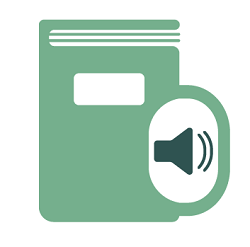 Thank you, Jim for sharing those incredible 8 steps. The main thing I want everyone to understand is that the interview process is one of the fastest ways to create very valuable, compelling content very quickly. I'd like to highlight a few things Jim discussed so you understand their importance. The cover letter at the very beginning of the book that lets people know, "Hey, this really is a conversation," "that's what this book is." It does save you lots of time trying to rework the prose and what not. That's one of the reasons why you can do this whole process in 3 hours or less total time. That's a very important thing I wanted you to understand. The other thing that I really want to highlight here is the cover. Having that cover created beforehand, also very crucial in my opinion, gives you a lighthouse, a target to aim at as you actually produce the rest of your book. As you do your interviews, as you set up your questions and so forth. Super important. I love the tip Jim gave of taking and using the audio book. The audio that you created to create the book, as your opt-in. That makes perfect sense. I've been saying all along, within the Real Fast Results podcast, that you need to be using your digital publications to not only create revenue and royalties, but also build your list. Build your platform and your community. This is a perfect way to not only create the book quickly, but also have something to give away on the back end. It's form-fitted to that particular audience. It's not like, "Would they be interested in this other thing that I might have? Maybe and maybe not." You know for a surety that they're interested in the content that they just received. Chances are very high that they will take you up on that offer to get the audio book version because they're already reading text of that same material. That's masterful. Thanks, Daniel! One cool thing that you can do, if you know you're going to use the audio for free, when you're having your cover made, you can have one of the those starburst or seals that says, "Bonus: Free audio book version available."
Thank you, Jim for sharing those incredible 8 steps. The main thing I want everyone to understand is that the interview process is one of the fastest ways to create very valuable, compelling content very quickly. I'd like to highlight a few things Jim discussed so you understand their importance. The cover letter at the very beginning of the book that lets people know, "Hey, this really is a conversation," "that's what this book is." It does save you lots of time trying to rework the prose and what not. That's one of the reasons why you can do this whole process in 3 hours or less total time. That's a very important thing I wanted you to understand. The other thing that I really want to highlight here is the cover. Having that cover created beforehand, also very crucial in my opinion, gives you a lighthouse, a target to aim at as you actually produce the rest of your book. As you do your interviews, as you set up your questions and so forth. Super important. I love the tip Jim gave of taking and using the audio book. The audio that you created to create the book, as your opt-in. That makes perfect sense. I've been saying all along, within the Real Fast Results podcast, that you need to be using your digital publications to not only create revenue and royalties, but also build your list. Build your platform and your community. This is a perfect way to not only create the book quickly, but also have something to give away on the back end. It's form-fitted to that particular audience. It's not like, "Would they be interested in this other thing that I might have? Maybe and maybe not." You know for a surety that they're interested in the content that they just received. Chances are very high that they will take you up on that offer to get the audio book version because they're already reading text of that same material. That's masterful. Thanks, Daniel! One cool thing that you can do, if you know you're going to use the audio for free, when you're having your cover made, you can have one of the those starburst or seals that says, "Bonus: Free audio book version available." Kindle Wizard by Jim Edwards
What we have is a piece of software. It's called the 3-Hour Kindle Book Wizard. It's available at 3HourKindleBookWizard.com/Daniel. What it does is it makes this whole process even easier because all you do is fire up the software on either a PC or a Mac. Basically, it walks you through some steps, asks you some questions about your audience, about yourself, about your topic and other things. It creates everything for you. It has 11 different interview tracks that you can run down that'll create all the questions that you need to have somebody interview you. It does the intros and the conclusions and everything. It writes all your sales copy for you. It writes all of your back cover copy for you. It creates all the emails that you need to announce your book to your list, to get other people to announce your book to their list. It'll even create an entire Power Point slide deck that you could use if you wanted to present your interview as a webinar. It writes all your ads for you for your book. It literally does everything you need to prepare to do this process even down to writing the thank you note. Thanking the person who interviewed you. It's that level of detail I would definitely tell you to go and check out that link: 3HourKindleBookWizard.com/Daniel, because you can see how the software works, what's entailed, all that good stuff. Literally, in 10 to 12 minutes, you can fill out the software and have every single piece of the puzzle done and ready to go for you to then jump on the phone with your buddy. Have them interview you. Order your cover, and you're on your way, and all the other stuff that you need for this process. It is pretty amazing. Thanks, Jim! The software is awesome. It actually takes what you've taught us here today to a whole other level. One of the things that I personally love about it is the fact that not only does it do all this other great stuff, as you say, but it actually writes your Amazon description. All of this stuff is done for you. By the way, the link that Jim gave you is my affiliate link, for full disclosure. To keep the lights on around here, we're giving you that affiliate link.Daniel's Real Fast Results Tips: Turing An Interview Into A Book
- When you're doing your interview, just have a conversation.
- Make sure you know your target audience and what problems they want solved.
- Whether you'll look into Jim's software or not, what you learned was completely A to Z. You can definitely do it with what you learned here.
Resources
Software Program - 3-Hour Kindle Book Wizard Book by Jim Edwards - Making Money with Kindle Books: Myths, Misconceptions, and the Truth Every Entrepreneur Needs to Know. Order Covers - Fiverr.com Free Recorder For Your Phone (Find in the App store) - RINGR App Free Online Recorder - FreeConferenceCall.com - Transcription Service - Rev.com Kindle Digital Publishing - https://kdp.amazon.com/ -Welcome to another podcast episode at Real Fast Results! We have a great show for you. I have back with us Mr. Dan Hollings. As you've already heard, Dan is the mastermind behind the movie and the book launch for The Secret. You remember that movie? It basically put the whole idea of law of attraction on the map. And it made virtual stars out of many of the experts and speakers that were in that movie and book.
When I was talking to Dan, when we were doing another podcast episode about this, I said, "Dan wouldn't it be great if you could teach my folks how to use some of the strategies in putting The Secret movie on the map--but use them in our day to day business?" And I said could you do that, and Dan was gracious enough to say, "Yes I can do that." So, welcome back Mr. Dan Hollings.
Background on "The Secret"
The Secret was an absolute marketing phenomena. When the client came to me, they had already tried to get it on  TV. They had also tried to get it in movie houses and places of that nature. They were about to throw in the towel. They approached me and I thought, interesting, I didn't know what the movie was about, that's what's crazy, because they didn't reveal much to me. However, I knew some of the speakers that were in the movie. Honest to God, this was my logic, "If this doesn't work, at least I'll meet Jack Canfield!" I knew he was in the movie. He was the only person that I knew and I figured, well, he might end up being a good client. It was a crazy reason that I took it on.
TV. They had also tried to get it in movie houses and places of that nature. They were about to throw in the towel. They approached me and I thought, interesting, I didn't know what the movie was about, that's what's crazy, because they didn't reveal much to me. However, I knew some of the speakers that were in the movie. Honest to God, this was my logic, "If this doesn't work, at least I'll meet Jack Canfield!" I knew he was in the movie. He was the only person that I knew and I figured, well, he might end up being a good client. It was a crazy reason that I took it on.
At the time we thought it was going to be on television. They told me they were going be on television in 60 different countries. All on the same day or the same week, and I'm thinking, "Wow! All I have to do is build a way to convert the traffic from the television program into purchases of the movie and the book."
Incidentally, the movie came out first, almost a year before the book came out. So I came on board, and then I found out they weren't going to be on TV. They left everything in my lap. I really spent hours and hours putting this together. However, I used a strategy which we'll talk about today; which you probably never heard of.
This was way back before people did all of the product launches that you hear about and the book launches that you hear about. Back when the Secret came out, this was 2007, that wasn't something many people did. This was one of the very first of the mega-launches that required a lot of things.What we are going to talk about today is a very unique strategy that I used. You could take this and use it yourself in any product services or books that you want to market.
20 Master Plots: And How to Build Them
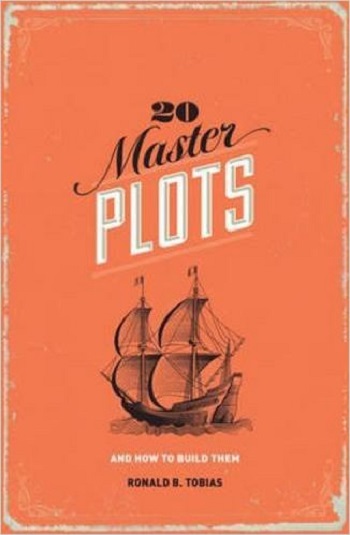 There's a book. I'm going to recommend you get this book. The book is called, 20 Master Plots: And How to Build Them by Ronald Tobias. I don't know much about him. If you are and auth0r, 20 Master Plots would be a book you would buy in order to teach you how to develop plots that could improve the writing of your books.
There's a book. I'm going to recommend you get this book. The book is called, 20 Master Plots: And How to Build Them by Ronald Tobias. I don't know much about him. If you are and auth0r, 20 Master Plots would be a book you would buy in order to teach you how to develop plots that could improve the writing of your books.
I did something with this book that was rather unique. I read it through the eyes of a marketer. What hit me was that you could take the same elements of these plots and you could embed it into a marketing campaign and thereby get some viral going. Really get it so that people were compelled, to not only engage with what you were doing, but to share it. That's what I did.
What the Book Is About
Here's what this book is about, and why it is an incredible book for marketers. It was not written for marketers, by the way. Basically, what Tobias has done is he went all the way back to Shakespeare. All the way up to modern movies. He figured out that if you really boil down all of the things that make us as humans really interested in books and in movies or plays. It really centers around a plot.
There are only 20 core types of plots. Every movie, every book that you get interested in, it's probably one of these 20 plots. What you can do, I recommend you read the whole book, but what I did is I ended up picking one of these plots. The one that I picked was master plot number 7 which is called the Riddle. I read that chapter over and over and over again, and then I set up a marketing campaign based on that type of plot.Now, with a riddle, and this isn't like these little simple riddles, this is a riddle as a plot.
There are 3 phases of a riddle plot:
- The first phase you set up the story. You set up the scenario of the story. The protagonist and the antagonist etc.
- The second phase is where you lay out the mystery.
- The third phase is where you solve the riddle.
How to Use the Plot Technique in Marketing
If you do this in a marketing campaign, you're going to tell the first 2 phases of the plot to your visitors/audience. Before they can get the solution to the riddle, the last phase, they have to give you an email, or they have to purchase the product. If you were to go back and look at what I did with Secret: the landing page, all of the wording, the information that was put out into press releases and shared through emails through and a lot of databases.
Basically, we were revealing the first 2 phases of a plot. It made it so darn compelling that you just had to put in your email in order to find out what the answer was. Then you ended up talking to people because you were perplexed, it was like, "Wait a minute, let's see, this happened, could it be this, was it that?" It's just like watching a mystery on television. People started talking about this.
I found it fascinating because of a strange reason: I too didn't know the answer to the riddle, because I hadn't seen the movie. I was hanging out online, and it was amazing that people were making blog posts and sharing all over the place. Talking about, "Oh I think its aliens from another planet, and oh no if he goes back and its the secret societies from years ago." All these conspiracy theories were flying around on the web back and forth. "What is the Secret?" "What is the Secret?" The reason that conversation started was because of the way the campaign had been laid out literally as a story.
Example - Modern Legend
I'd like to illustrate this for you. In the book they call this invisible fiction. There's a type of fiction known as a 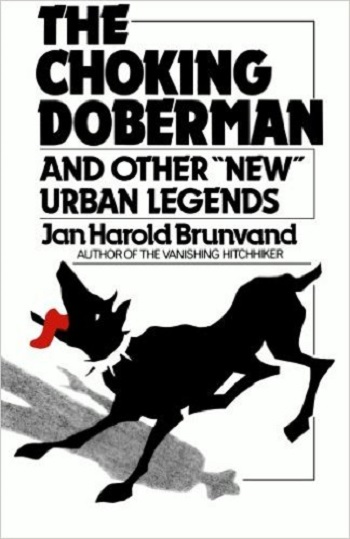 modern legend. It is a story that gets started and shared from person to person to person over years. It's not like anybody really ever sat down and mapped out the story. It's just passed along and pretty soon people start to believe the story is true. Even though it really isn't. There's a great example that I want to share that will help you get the thrust of why this works so well in marketing.
modern legend. It is a story that gets started and shared from person to person to person over years. It's not like anybody really ever sat down and mapped out the story. It's just passed along and pretty soon people start to believe the story is true. Even though it really isn't. There's a great example that I want to share that will help you get the thrust of why this works so well in marketing.
This is an example of a modern legend. This is a story which is called the Choking Doberman, and this is a true story. It's been around for years. You may have even heard it. It's a very simple story told simply. I'm going to stop at the point where I turned into a marketer and said, "Okay, give me your email address and I'll tell you the rest of the story." You'll see that you will want to give me your email address. I'm not really going to ask.
A woman returned to her house after a morning of shopping and she found her pet doberman pinscher choking and unable to breathe. She rushed her dog to the vet, where she left it for emergency treatment. When the woman got home, her phone was ringing and it was the vet.
"Get out of your house now!" He shouted.
"What's the matter?" She asked.
"Just do it. Go to a neighbor's house, anything. I'll be right there," Frightened by the tone of his voice, the woman did as she was told and she went to her neighbor's house. In a few minutes, 4 police cars screeched to a halt in front of the house. The police ran inside her house with their guns drawn. Horrified, the woman went outside to see what was happening. The vet arrived and then he explained...... If you'll enter in your email address right now, I'll tell you rest of the story.
Can you see whats happened? I played out a mystery here. By the way this is a real one. This is a story that has been shared around the world. The book is called The Choking Doberman: And Other Urban Legends. You can see that you want to hear the end of the story right? Let me do that.
Again, I'll remind you, this is the kind of thing that we did with the Secret. You just had to know what happened. You put in your email address or you bought the movie
The rest of the story: A few minutes later, the 4 police cars screeched to a halt in front of the house. The police ran inside her house with their guns drawn. Horrified, the woman went outside to see what was happening. The vet arrived and explained. When he looked inside the dog's throat, he found 2 human fingers. He figured the dog had surprised a burglar. Sure enough, the police found a man in a deep state of shock hiding in the closet and clutching a bloody hand.
Okay, it's a simple story, but that's what I did. Orchestrating the campaign with the Secret, we took the idea that there was this secret that had been passed down for centuries and great people knew about it. A little bit of it was fiction, believe me. Yet, it had been passed down and passed down.Lo and behold, here we are in the modern day world and this secret has been dug up and we're about to reveal it again to the world. This secret can make you happy, it can make you wealthy, it can make you healthy, it can do all of these things. Give me your email. I mean come on!
That's it. It was that simple; combined with some marketing skills and some databases and some things of that nature. This was a zero-cost campaign. They did not spend any money on this campaign of any significance. They didn't have any. Yet, we were able to catapult that into one of the most successful launches of all time.
Steve Jobs...The iPhone...The Secret
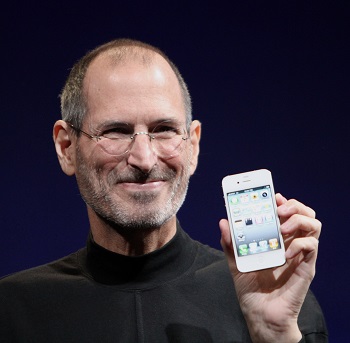 My clients were not particularly interested in selling their product on Amazon. I was trying to figure every channel that I could to get this movie out into the marketplace. Again, it was a movie in the beginning. I had struck a tentative deal with Amazon. I presented it back to my client and they just flat-out said no. I'm thinking, "Wow! This is not good!" The year before, the number 1 selling movie on Amazon was a similar kind of movie.
My clients were not particularly interested in selling their product on Amazon. I was trying to figure every channel that I could to get this movie out into the marketplace. Again, it was a movie in the beginning. I had struck a tentative deal with Amazon. I presented it back to my client and they just flat-out said no. I'm thinking, "Wow! This is not good!" The year before, the number 1 selling movie on Amazon was a similar kind of movie.
Amazon got real interested because this was a similar kind of movie. Amazon had the database of people who had bought that big hit movie. They were willing to mail that list and do a whole bunch of things. My client thought that it would cannibalize sales, because they were selling only directly off the website, the website I had built. They were about 40 million dollars at that point, and I was saying hey, "Amazon has all the customers. They're willing to do this." When the client said no, I didn't like that. I was in to get a percentage of proceeds, so I was really eager to get this thing out.
Then, very fortuitously, a good friend of mine, who was also a client of mine, called me up one day and said, "Dan, I heard you were the guy marketing the Secret." I said, "Yep, it's me." He said, "I have a distributorship and I can buy these movies wholesale from the movie maker. They're kind of expensive, but I can buy them in lots of 10 thousand."
I'm thinking, "Maybe I should do it." Lights went off in my head and I said, "You know what? You and I are going to put this on Amazon." My client didn't want to put it on Amazon, but this was a distributor who had the right to do so. He and I worked together. We put the product on Amazon, and herein lies what Daniel was talking about. This thing took off like crazy on Amazon.
When Steve Jobs got up to demonstrate the iPhone, for the very first time. It was history in the making. We think about shopping on our phone right now like it's an everyday thing. More people shop on their phone then on their computer.
Back then, no one ever shopped at Amazon on their phone. This was a brand new idea. Steve Jobs gets up on the stage and says, "Hey, lets go to Amazon." He's going to demonstrate how finally for the first time, you can use your smartphone to buy things online. He heads over to Amazon, he holds up the phone, he didn't say anything but The Secret was number three on his phone on Amazon at that point in time.
I'm sitting there, my jaw is dropping, I grab a screenshot of it and everything. It was me and a distributor that did that. It wasn't my client that did it. We were just kind of selling it out of our basement, literally. It was crazy.
Recap - Plots
I think with almost any product you can embed it within a plot of some type. I didn't do this earlier, so let me do it now. Let me tickle your fancy a little bit.
Types of plots:
- the Quest
- the Adventure
- the Pursuit
- the Rescue
- the Escape
- the Revenge
- the Riddle (which is the one I used)
- the Rivalry
- the Underdog
- Temptation
- Metamorphosis
- Transformation
- Maturation
- Love
- Forbidden Love
- Sacrifice
- Discovery
- Wretched Excess
I'd love to do one under Wretched Excess. That's most of the 20 plots. I've actually used other type plots with other campaigns that I've done. But, it's the Secret that actually did the best.
20 Master Plots: And How to Build Them is a good read. If you're an author, you're going to get double benefit. If you're a marketer it can help you with that. Give it a read and read it through the eyes of a marketer. If there are ways you can embed plots into your marketing campaign, that will affect the way you stage things. What you say in your emails, what you say in your webpage, etc.
It's always the idea of revealing a certain amount and then requiring that the visitor take action. Either to purchase or to opt in, come to an event or something in order to find out the last phase of the plot. Remember, there's always 3 phases of the plot; it's just which kind of plot you are going to use.
Daniel's Real Fast Result Tips: Plot Marketing
- Cherry-pick the plot that best fits what your market is and what your product and service is.
- Pluck out the specific elements and use it in your auto-responders, on your web-pages, etc.
- This and leaves out the tension by having your prospects take the actions you want them to take.
Resources
Book - The Secret
DVD - The Secret
By Ronald Tobias - 20 Master Plots: And How to Build Them
A big welcome to Tucker Max. Thank you, Tucker for taking time out of your day to chat with us. Tucker has had a lot of success as an author. He's basically jumped into a relatively new venture, new start-up called Book in a Box. I've been really intrigued with how Tucker has marketed that business. Today we're going to discuss the process Tucker has gone through to promote the Book in a Box Service with, basically, a book. This is a great example of how to use a book to sell big ticket offers.
Welcome to our next installment of Real Fast Results. I am so pleased that you are with us. And boy, do we have a great episode for you today. I have another one of my good friends, that is Rita Emmett, in the house. We're going to be chatting about something that I know will be beneficial to most, if not all of you. Probably you, the person listening right now. What we're going to cover today is going to be very helpful to you. Today we are discussing how to go about turbo charging your content production efforts. In other words, if you are writing, writing books, creating videos, creating podcasts--whatever it is that you're doing to create content, we're going to show you some ways to actually speed that process along and get more done in less time. You're going to do this by essentially crushing the tendencies that we all have, myself included, to procrastinate. Putting off those things that we need to really do and focus on, but for one reason or another, we don't. Rita is an absolute master at crushing these sorts of tendencies, especially from the writer's standpoint.
Dan talks with Dan Hollings about tools you can se that have zero cost. See realfastresults.com/05
Resources & Links
Example Site
Free Hosting
Free Video Hosting
Free Autoresponder Services
http://mailchimp.com/
http://www.benchmarkemail.com/Register
Free Contest Software
Free Exit Pop Generator
Free Polling Software
Free Audio Player & Hosting
Free Mobile Webite Building (in addition to Weeble)
Free "Tell a Friend" Script
It is a “joy” to have Kristen Joy on the Real Fast Results Podcast! Kristen decided she was “unemployable” at the tender age of six when she started her first business making and selling pet rocks. She’s never been able to “hold down a real job…” ever. A serial entrepreneur, in 2003 she turned her life-long love of reading and writing into a full-time career she LOVES, teaching authors and entrepreneurs how to create books that bring them business and turning authors into successful authorpreneurs.'
WordPress Download – https://wordpress.org/download/
MailChimp – http://mailchimp.com/
Aweber – http://awondermail.com/
DonorDigital Share Code Generator – http://donordigital.com/services/socialshare/
Win prizes during our launch at http://realfastresults.com/contest/
Welcome Tony Laidig! Tony Laidig began his professional career as a newspaper photographer. Tony’s career has expanded enormously over the years. Today, as an entrepreneur, Tony is a successful speaker, business coach, media expert, and photographer.
Tony and I have been friends for several years. And, our first product we did together was on the Public Domain. Tony is definitely an expert in the Public Domain. He has been working with this content since 1985.
I love the Kindle device! In this show, I’m going to take you through and teach you how you can publish your first Kindle book. Before we do, I want to give you a little background on why Kindle is such a big deal for independents, for entrepreneurs, for content creators, for coaches, for trainers, for consultants, for information product creators and Internet marketers.
